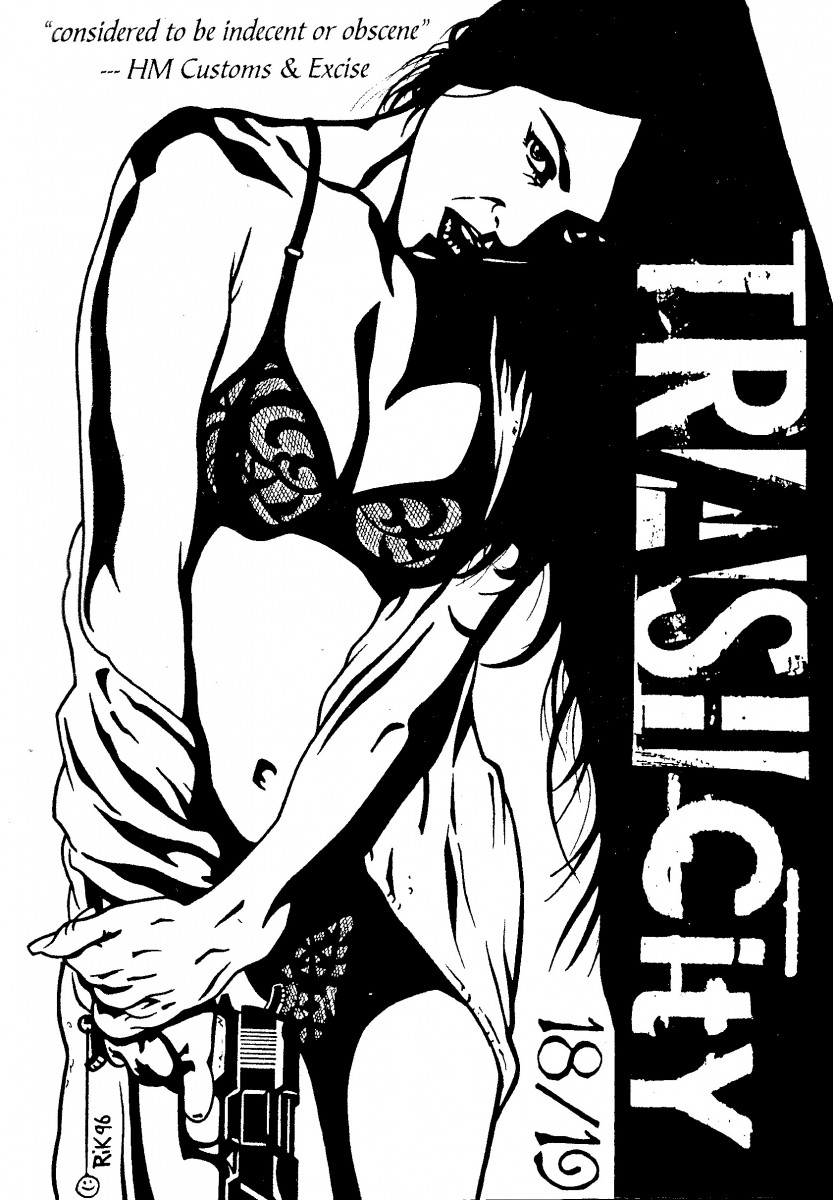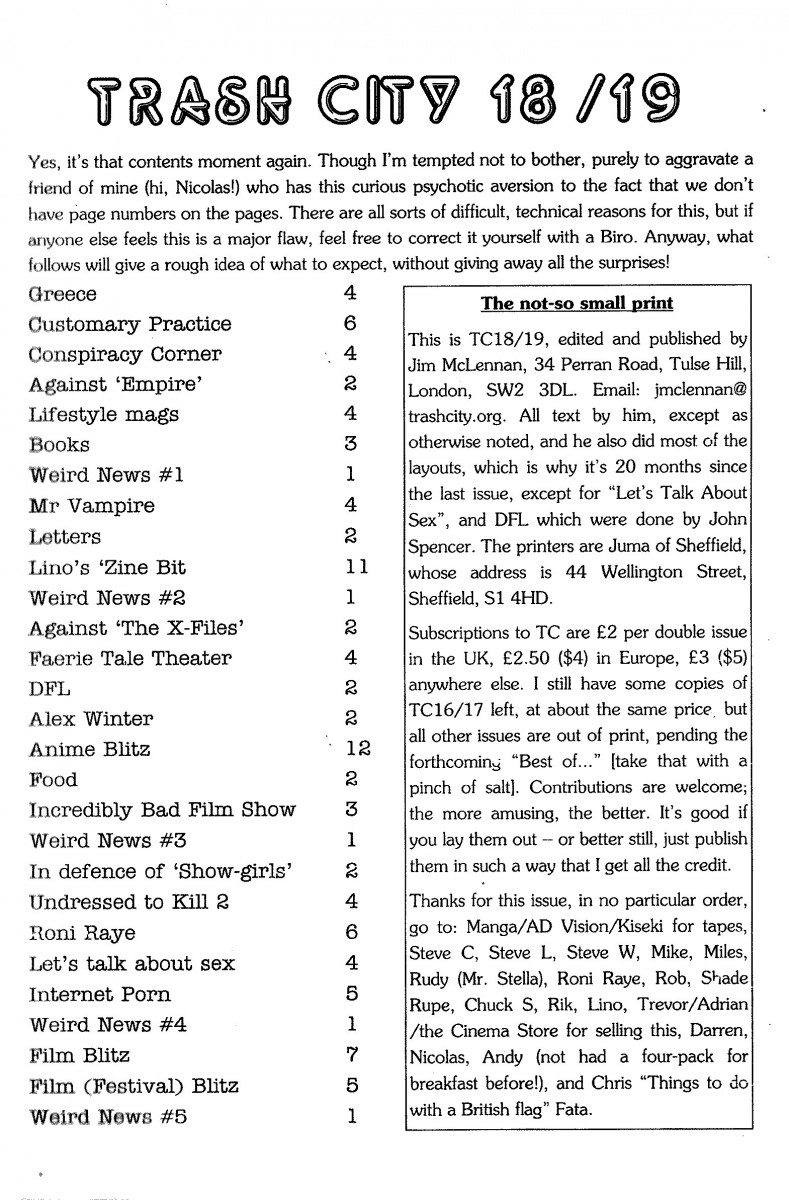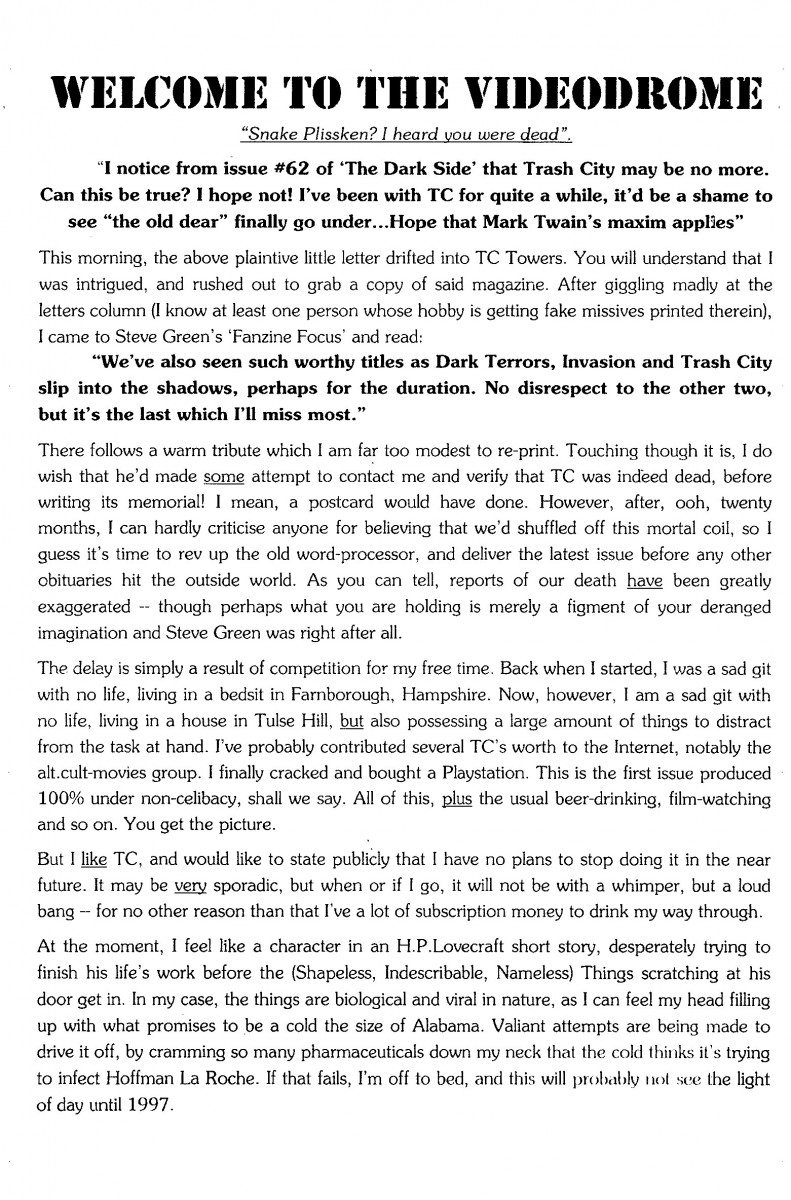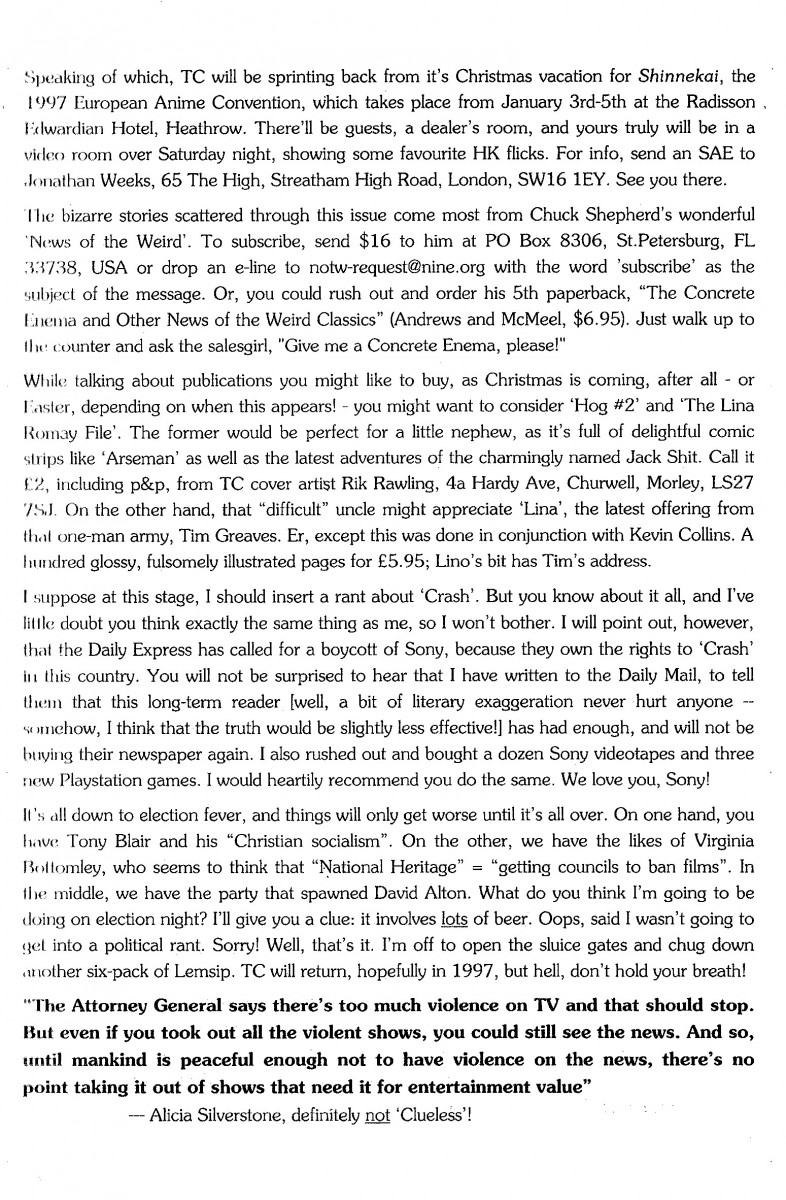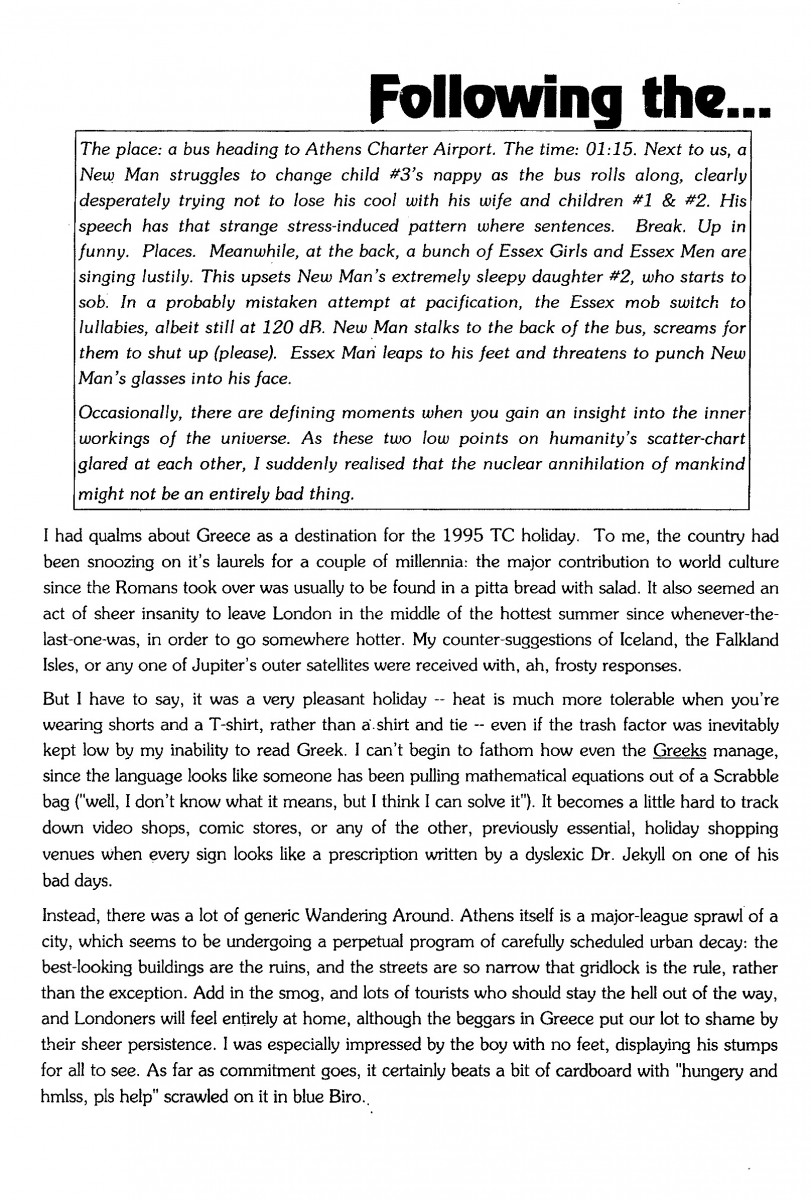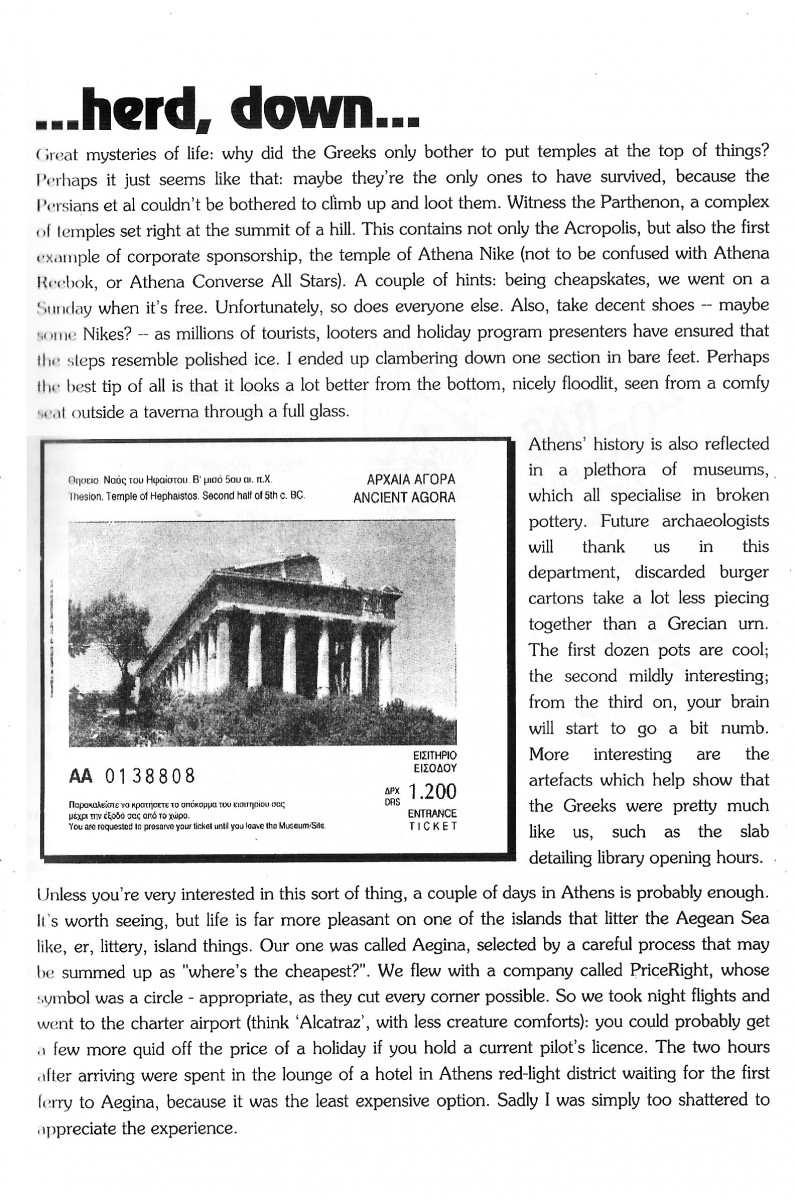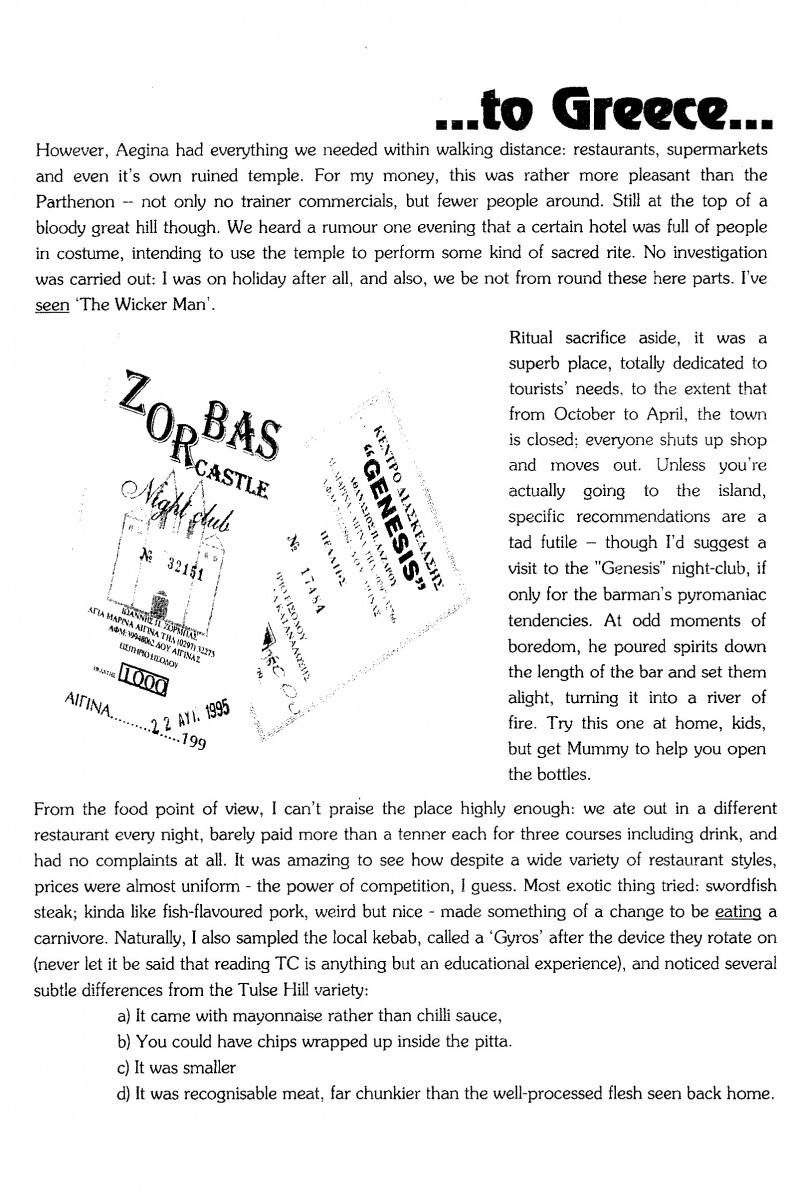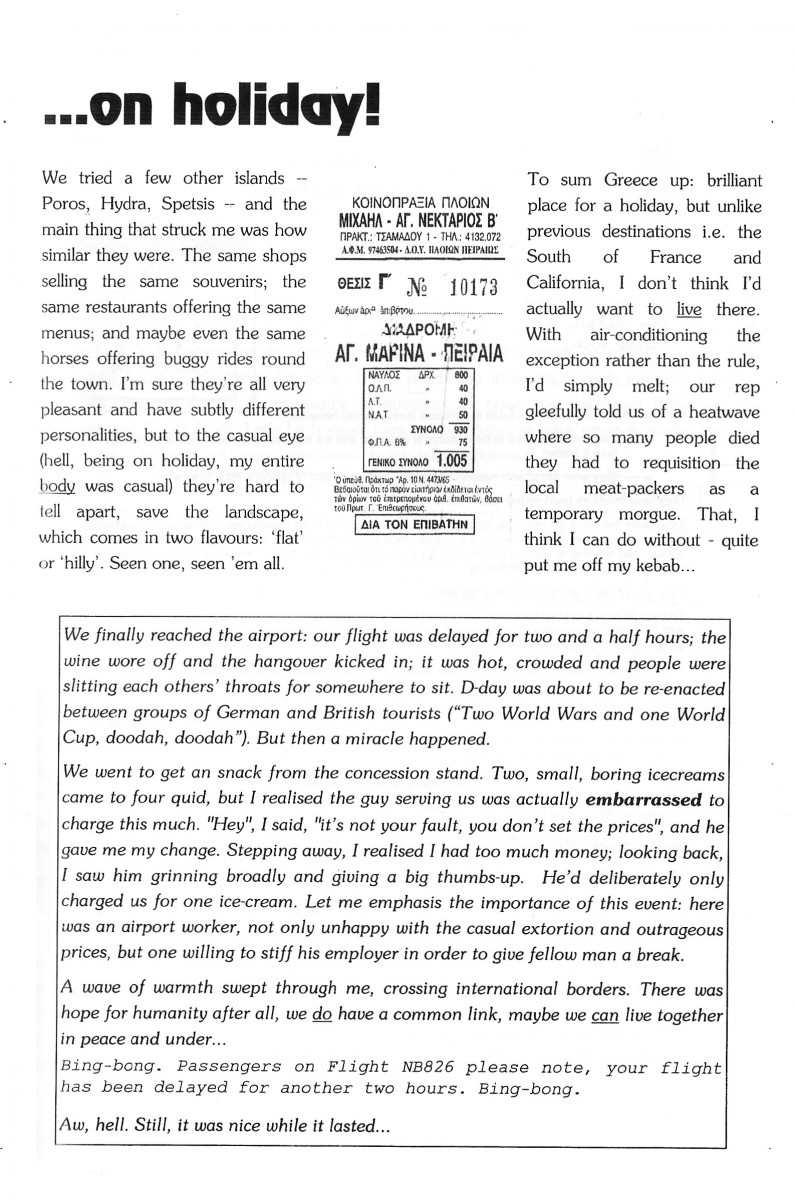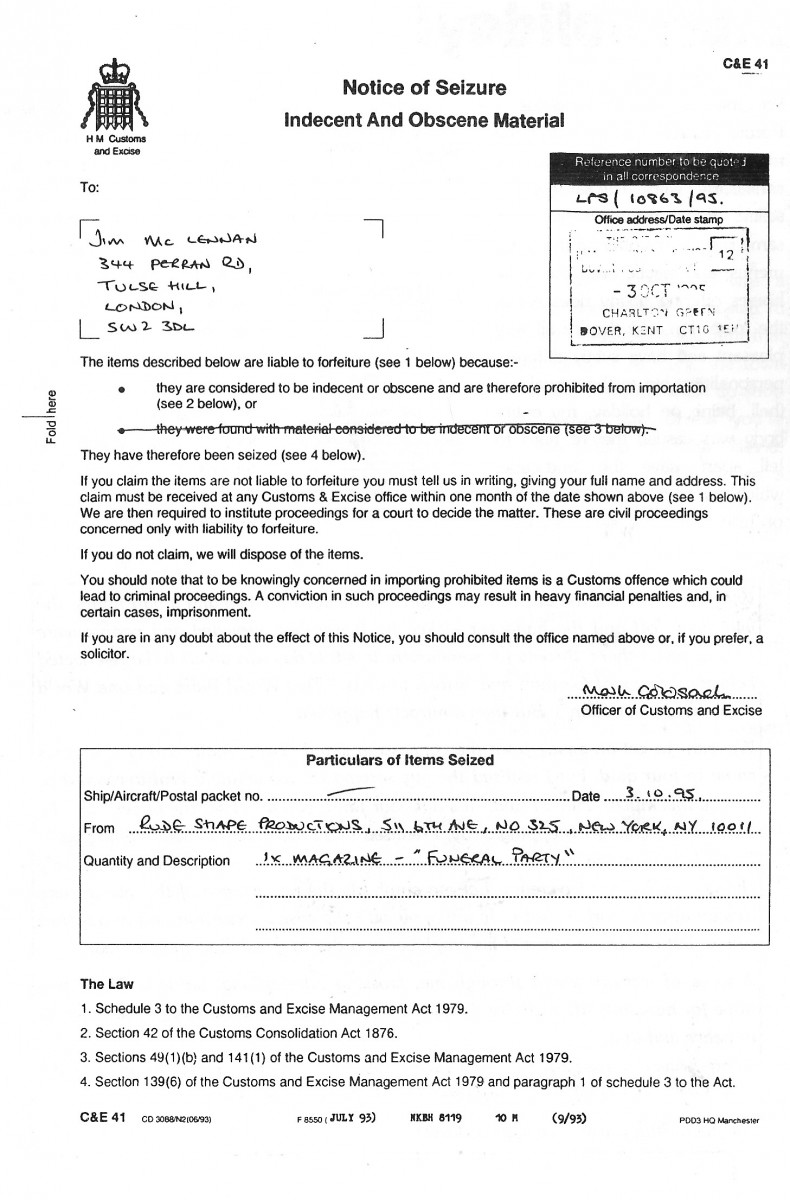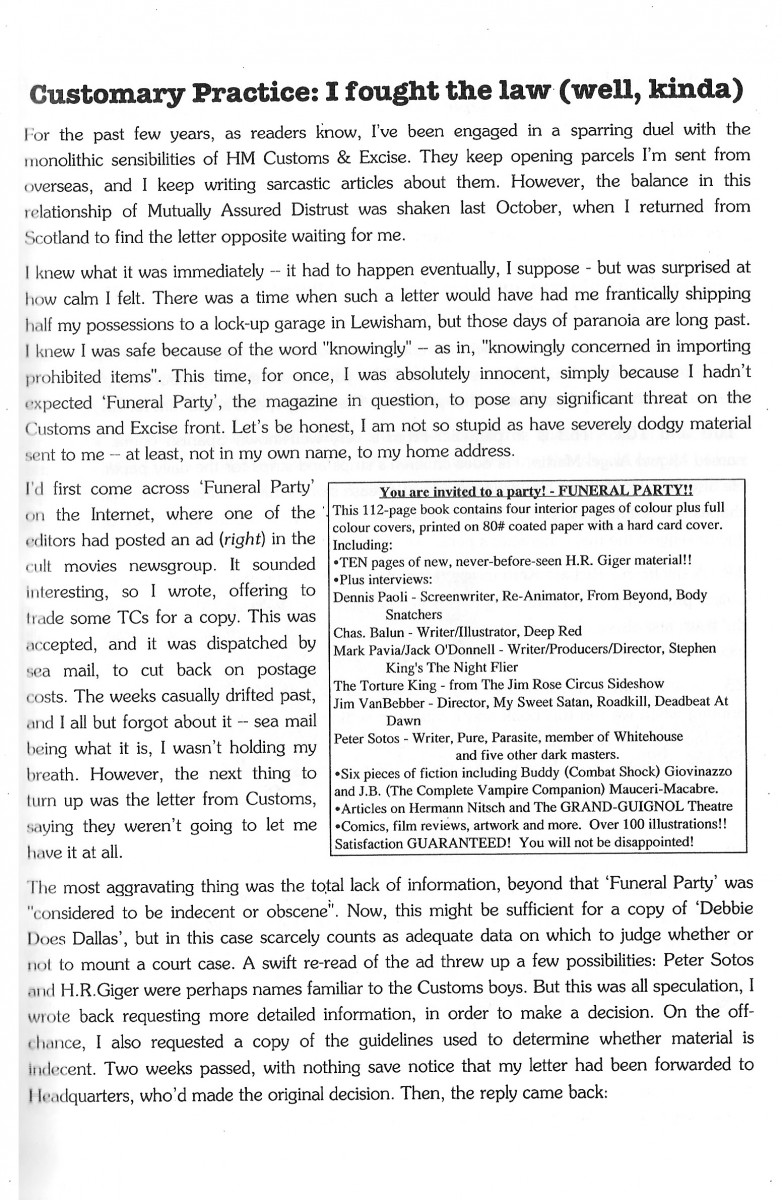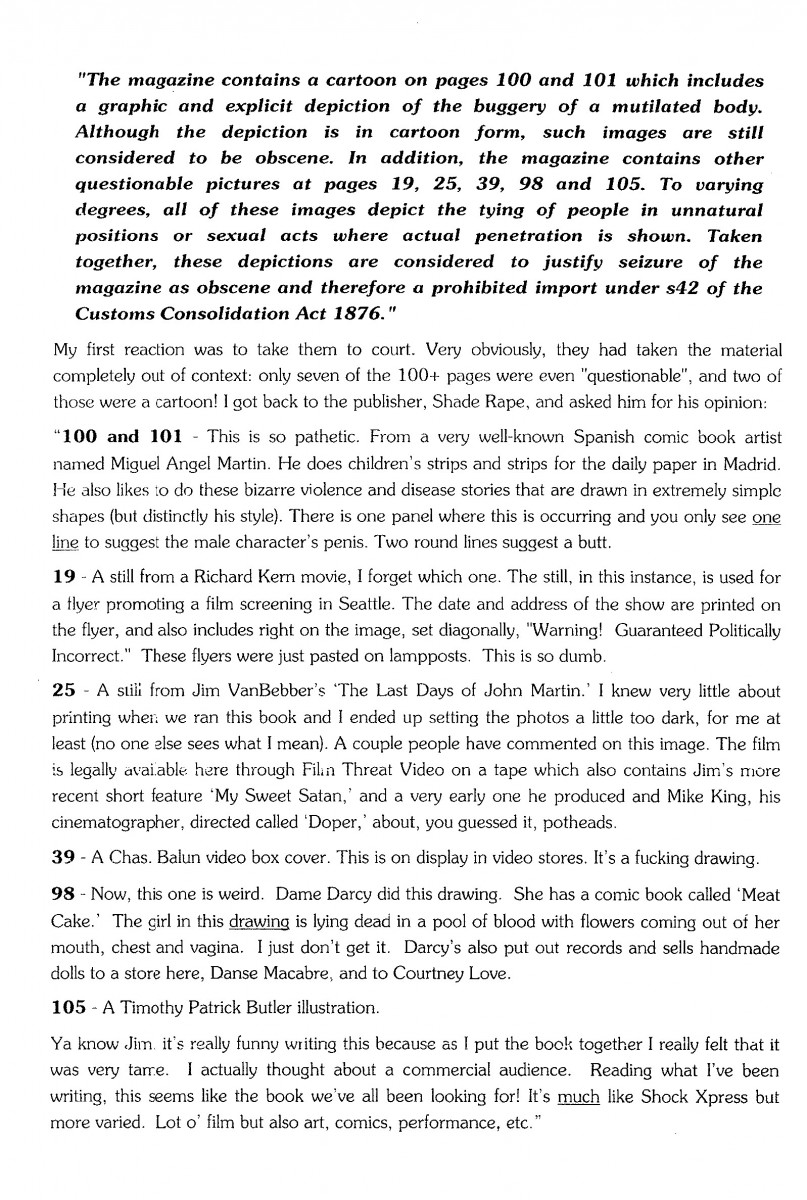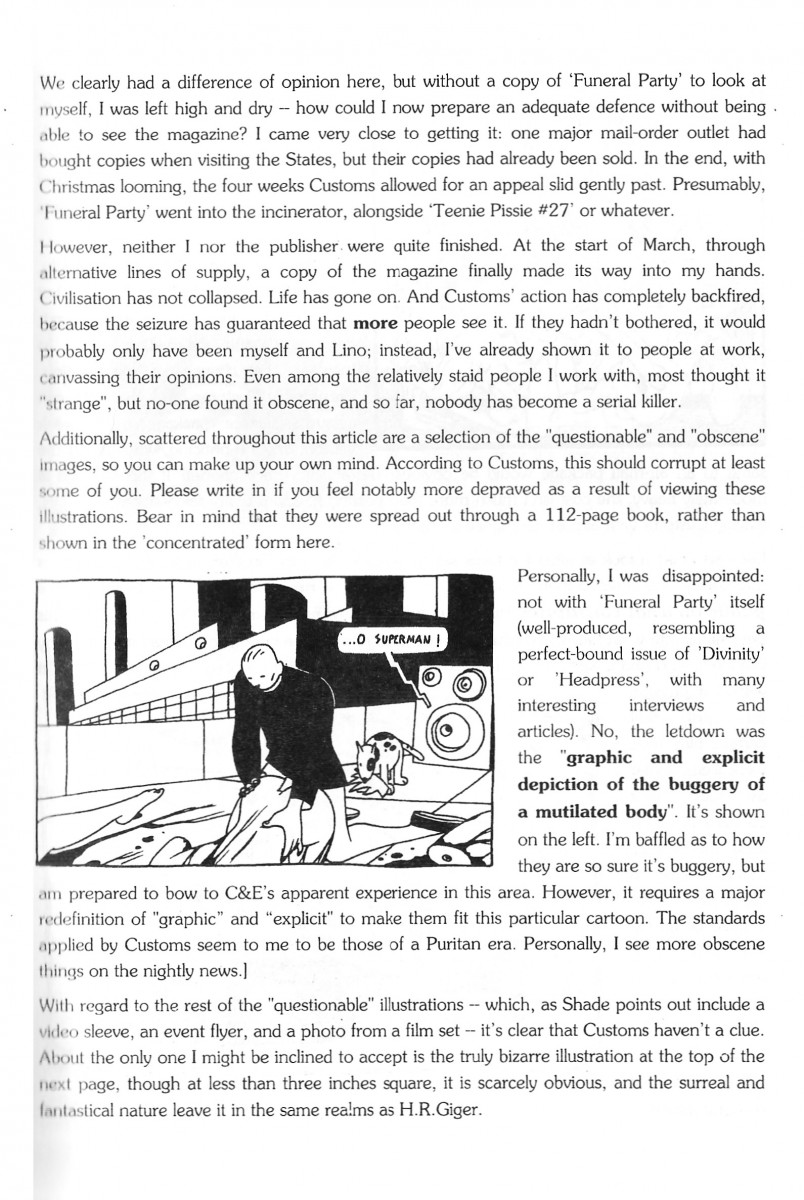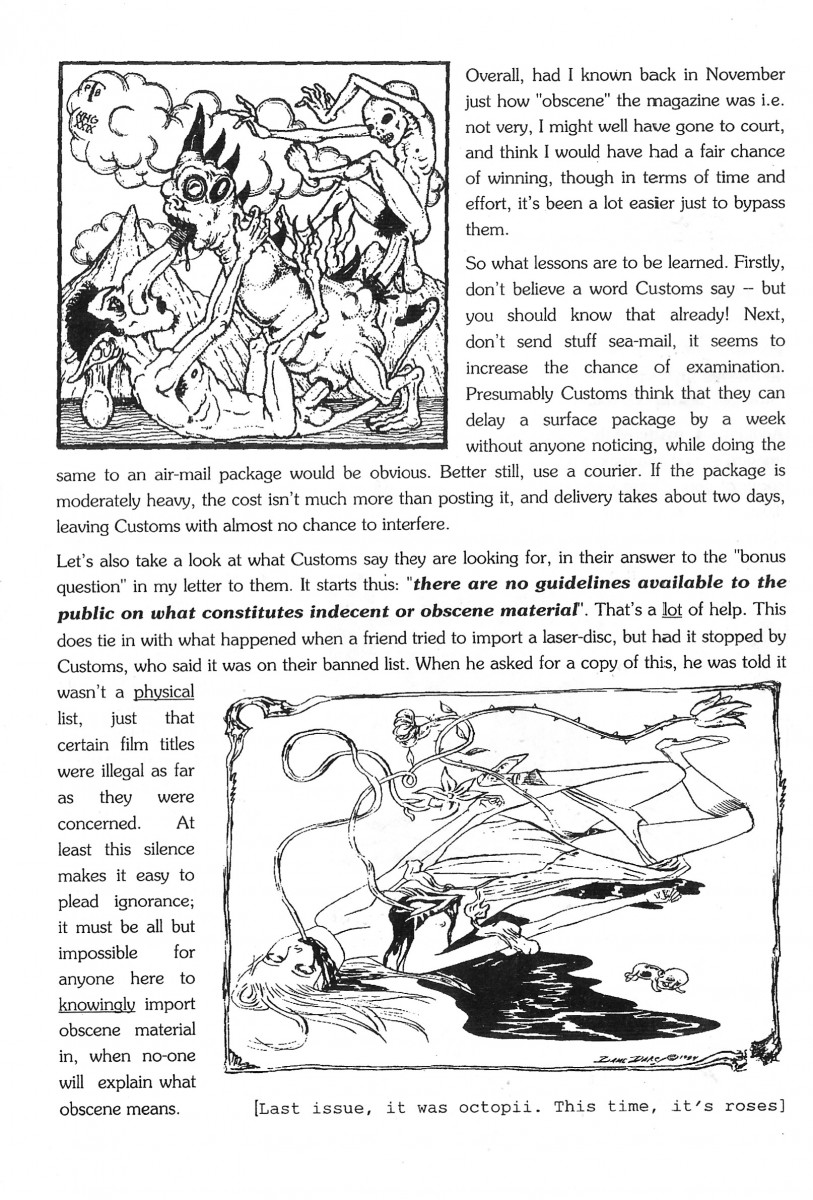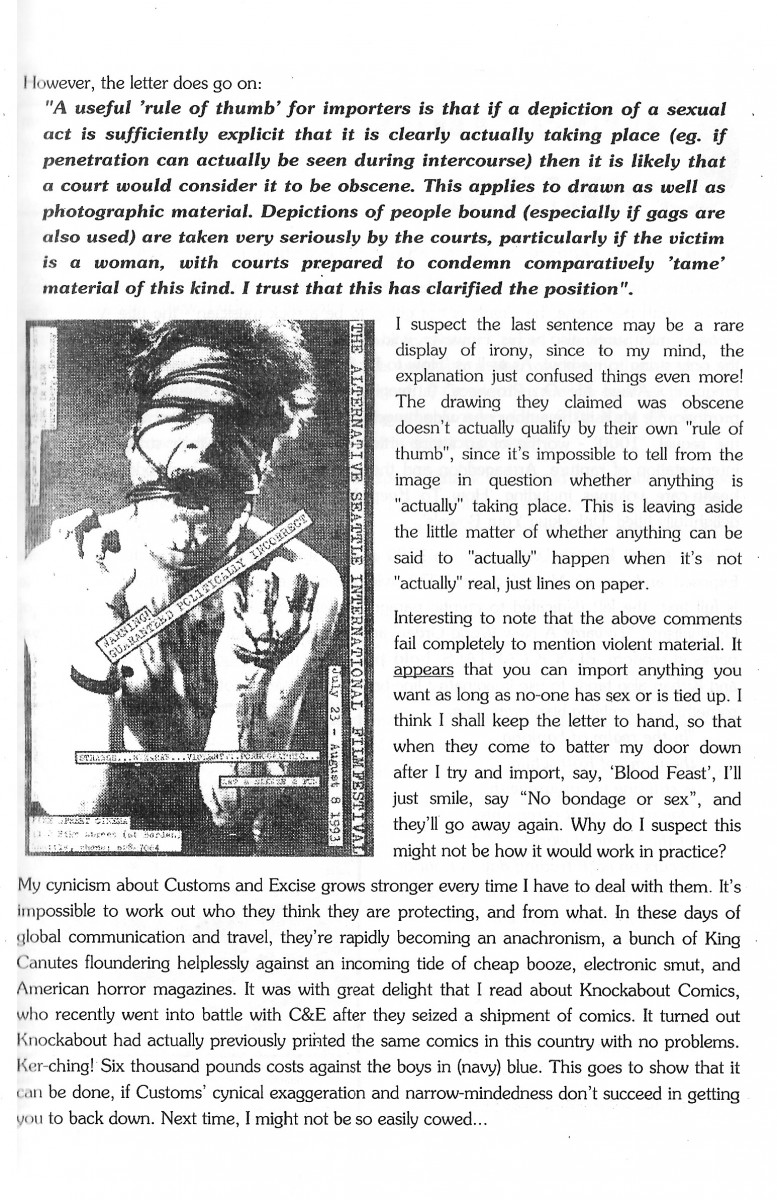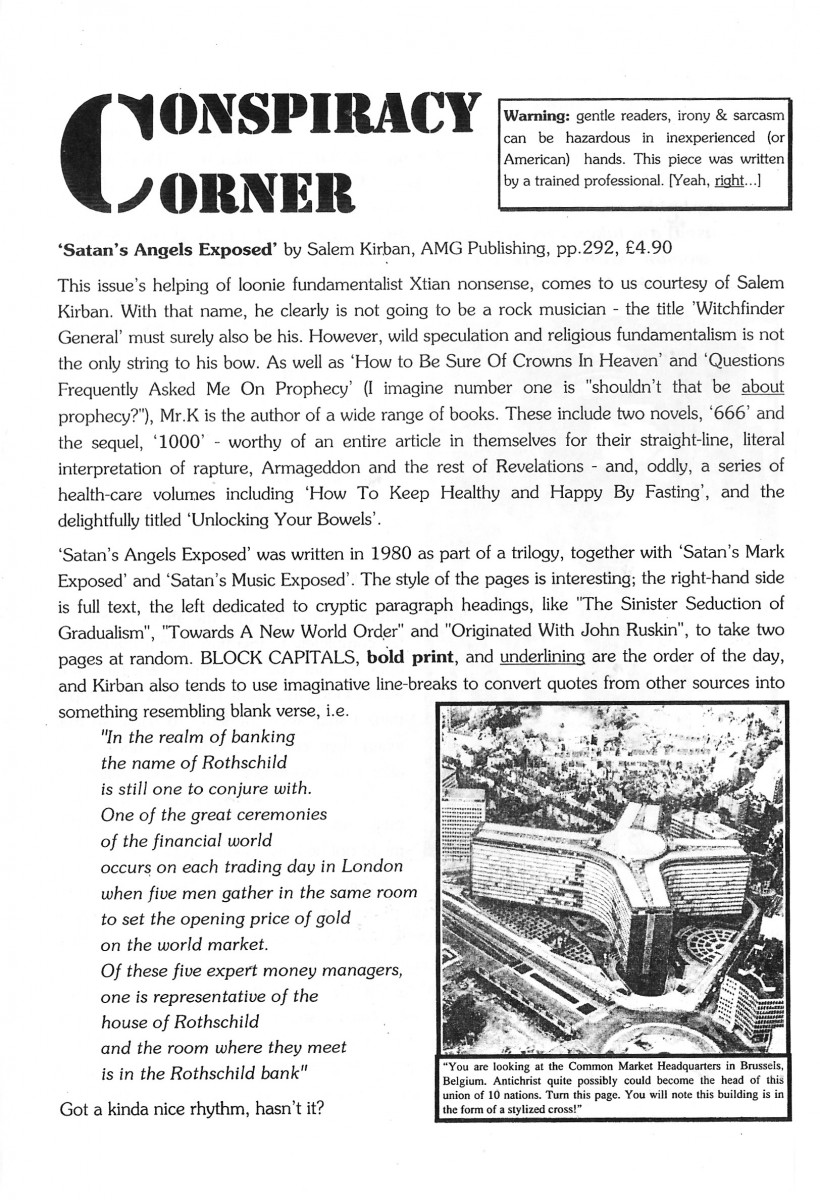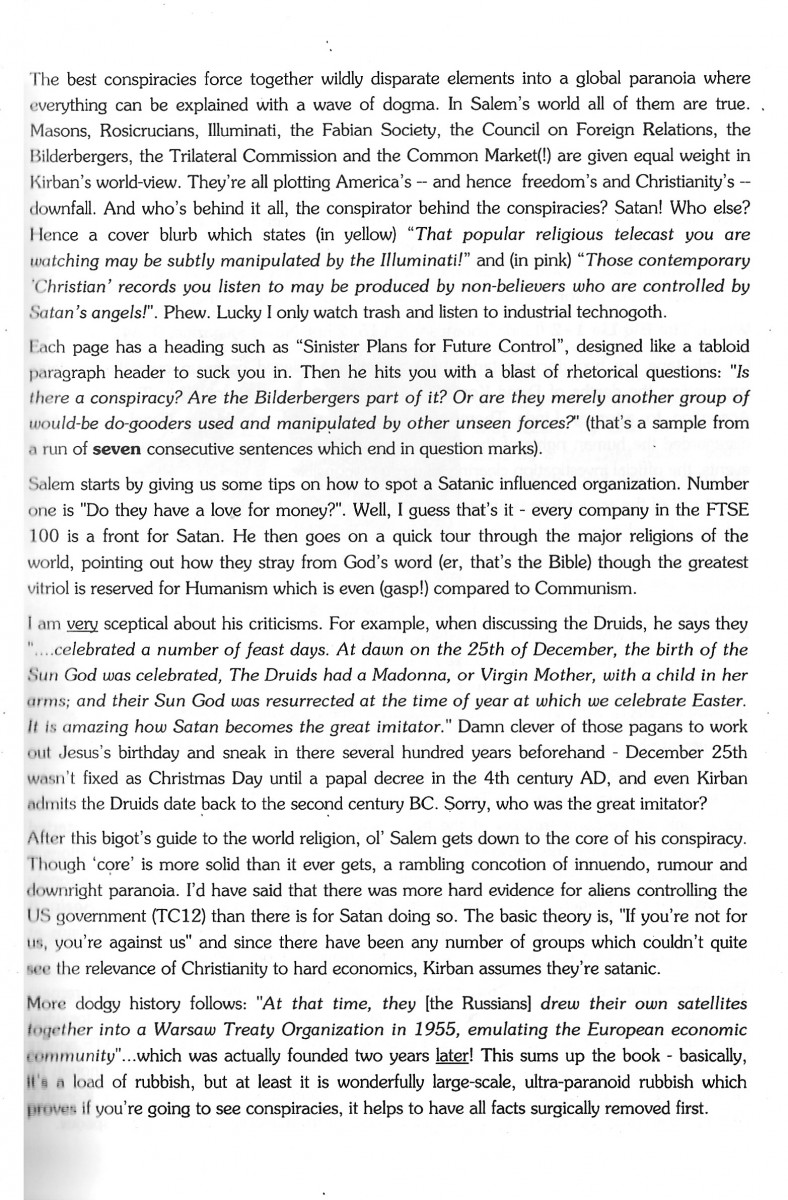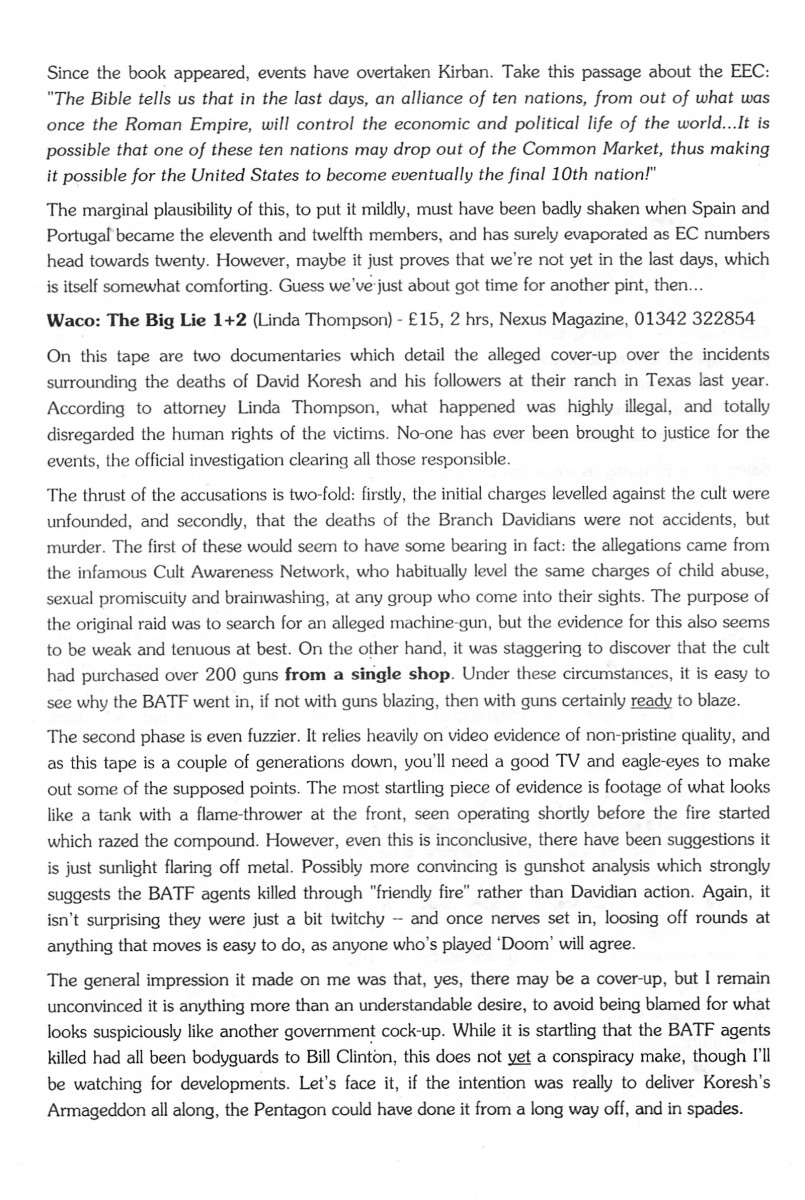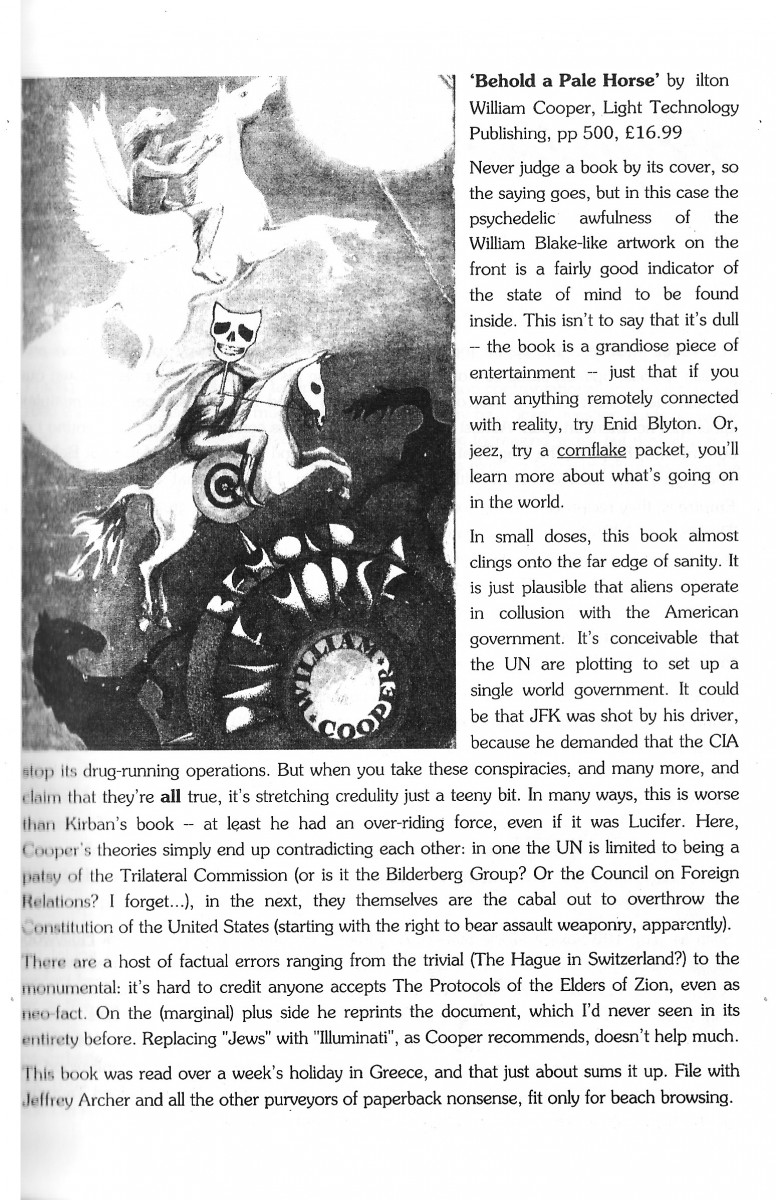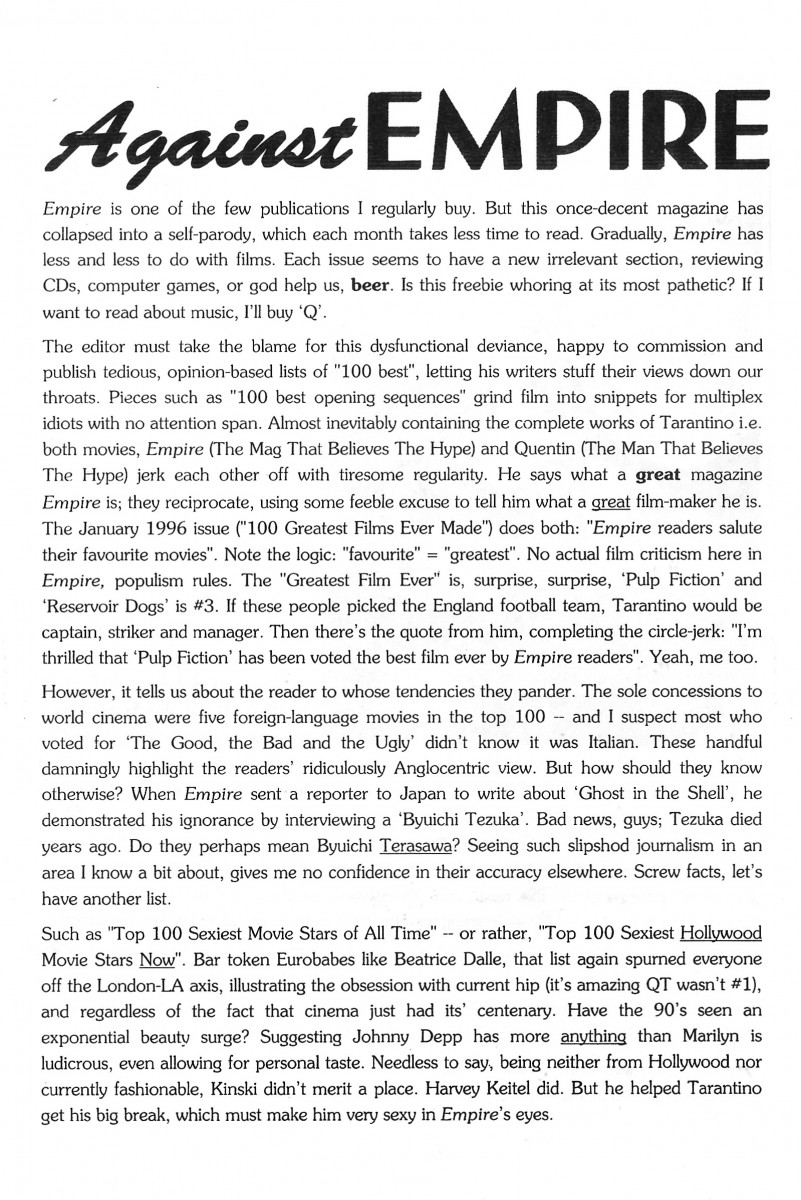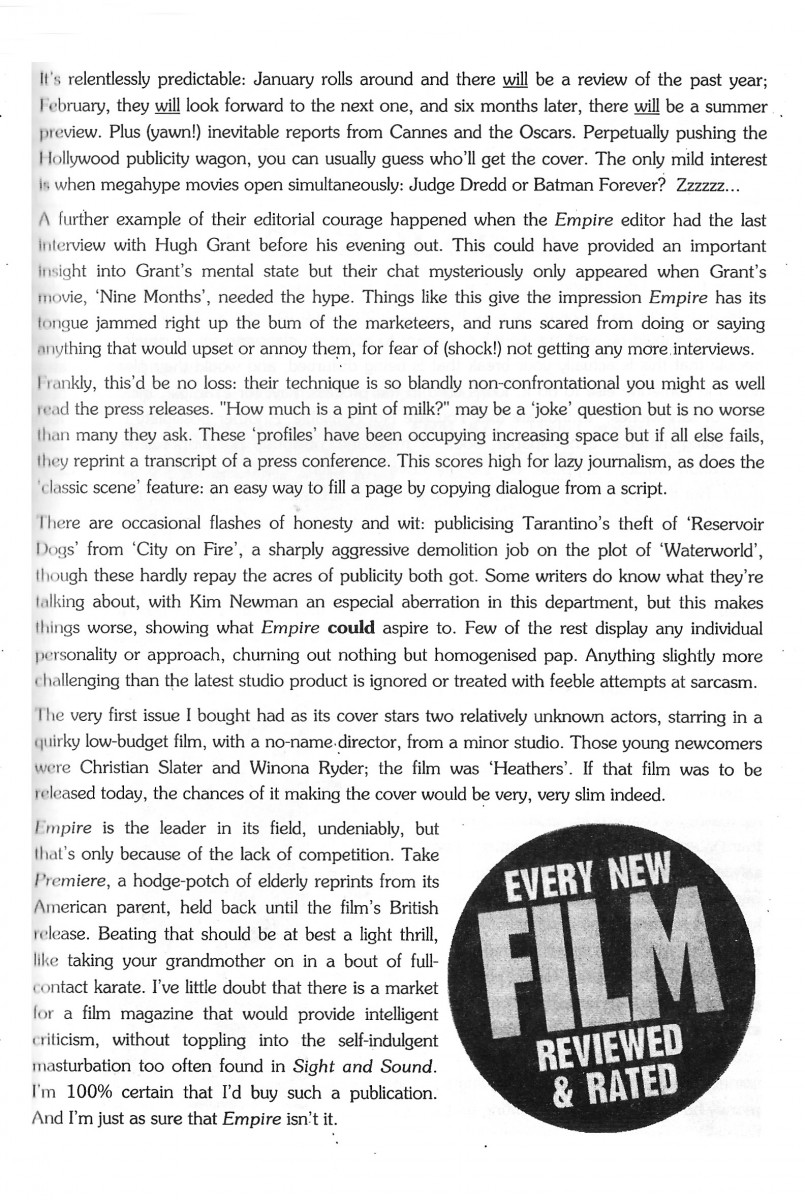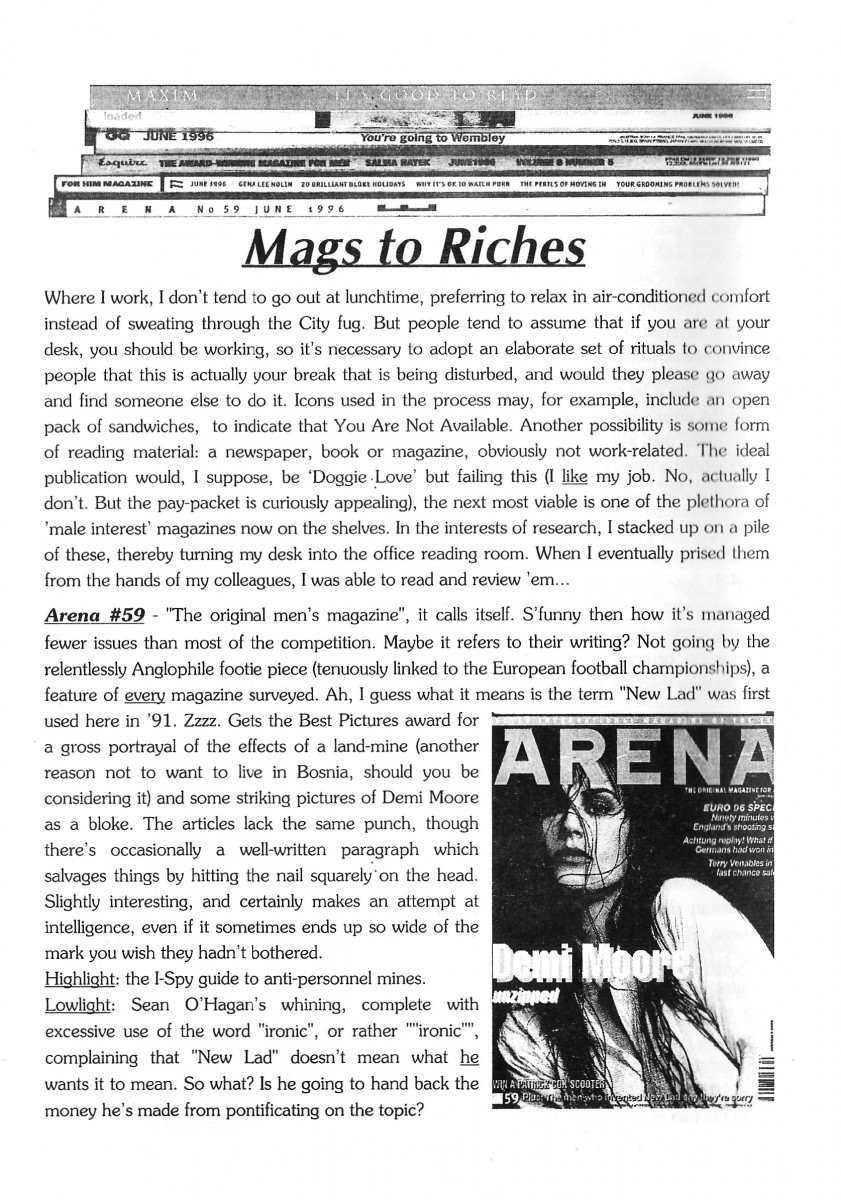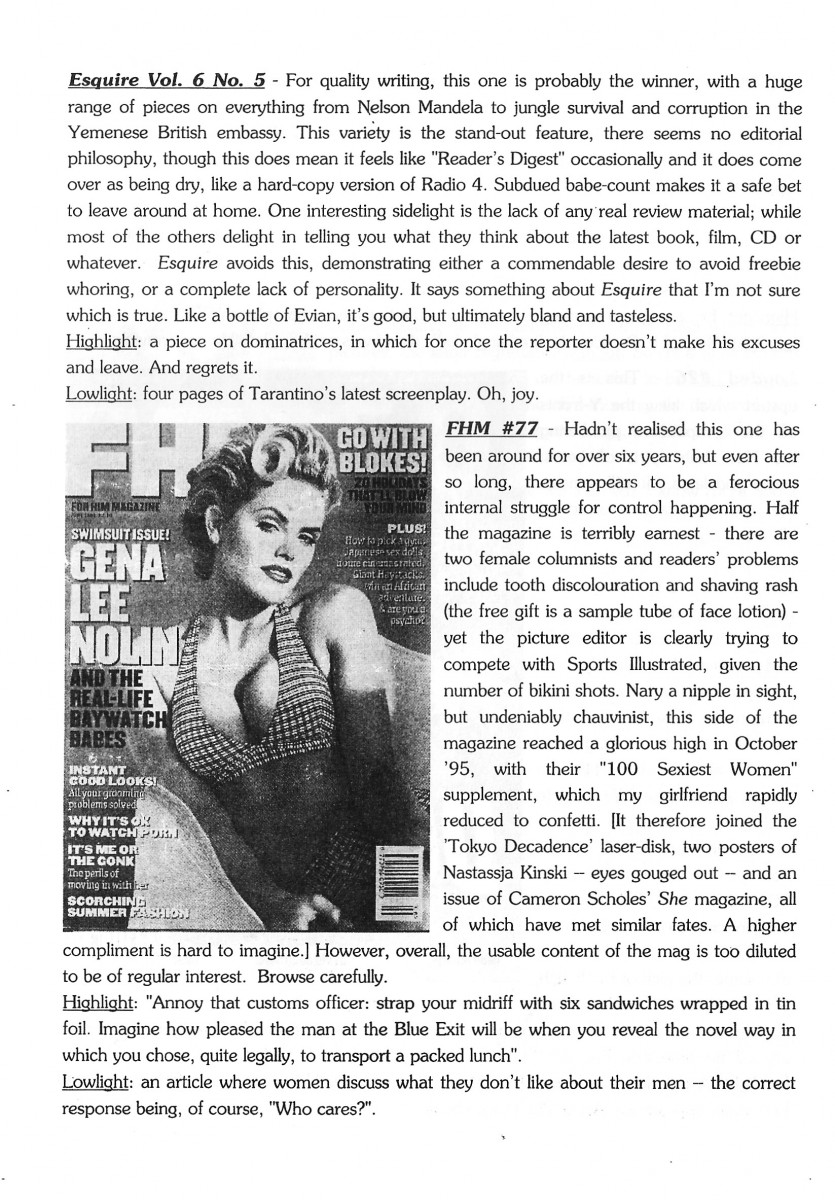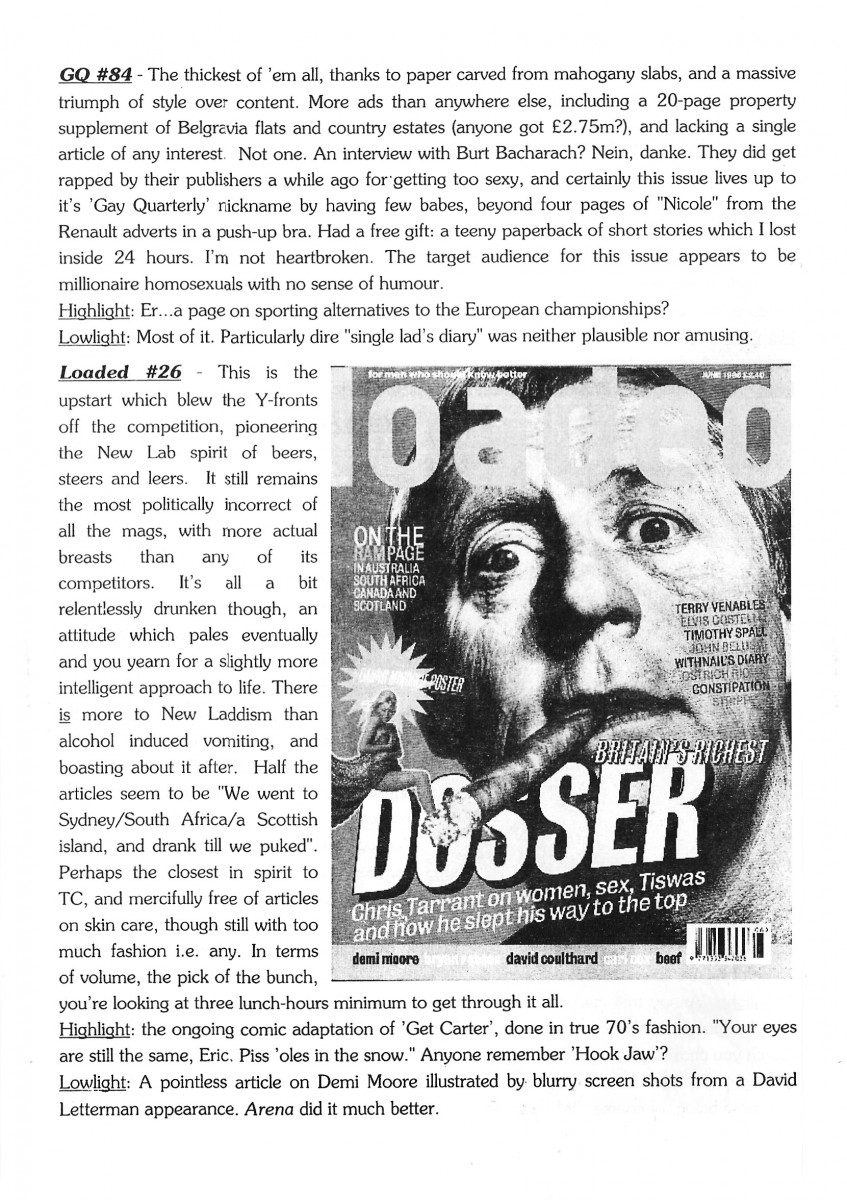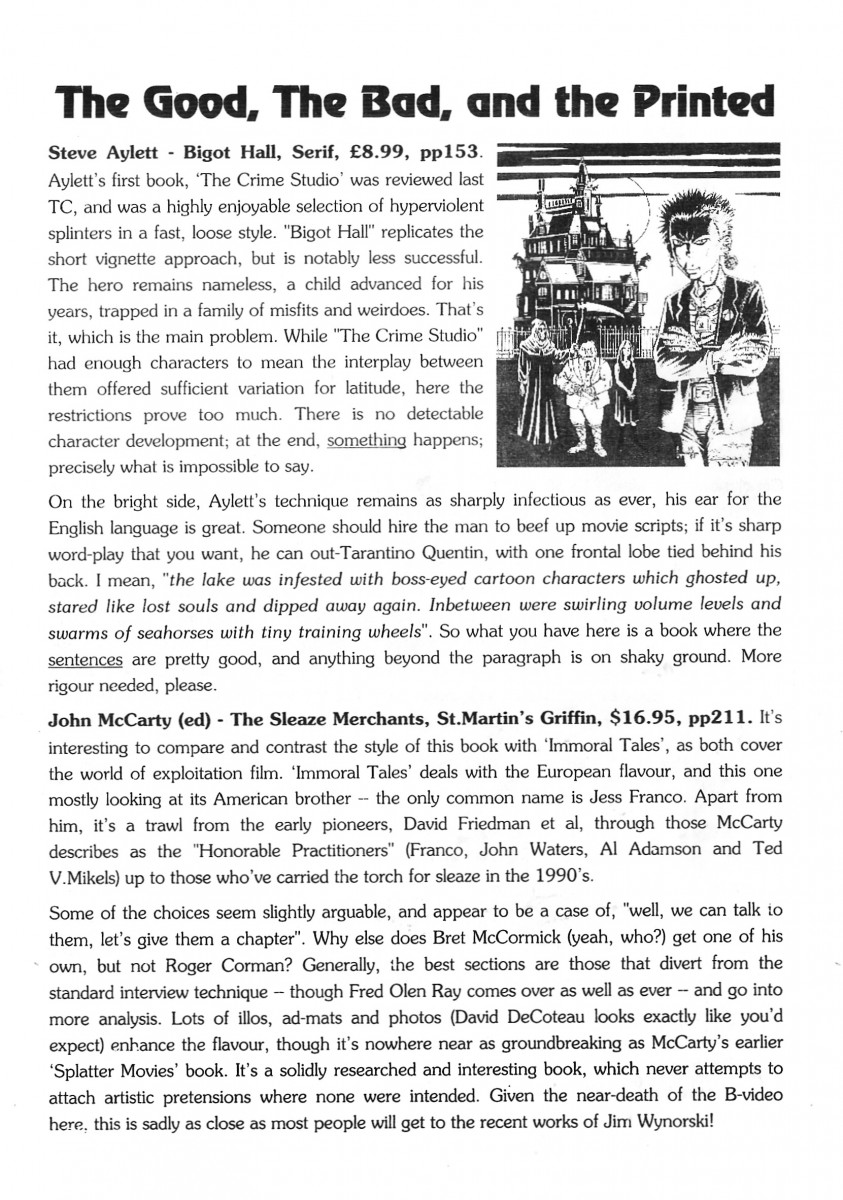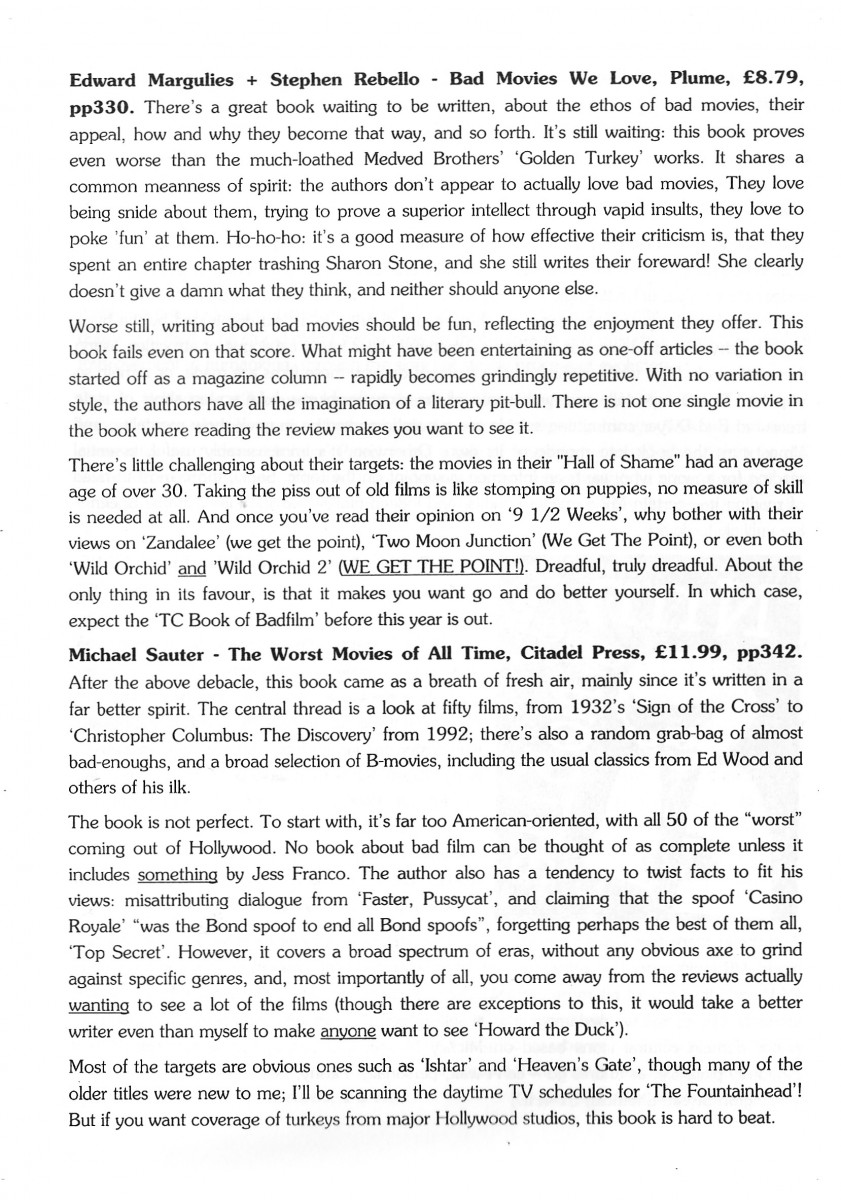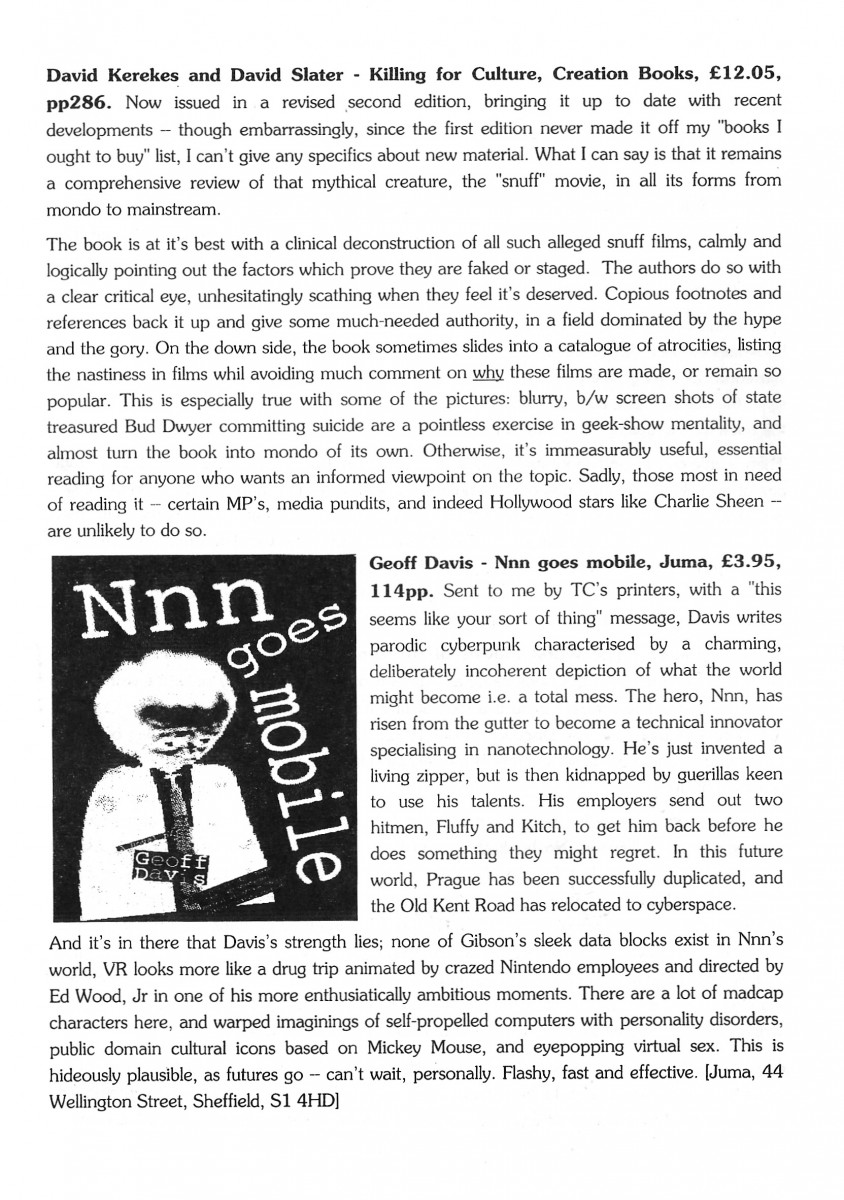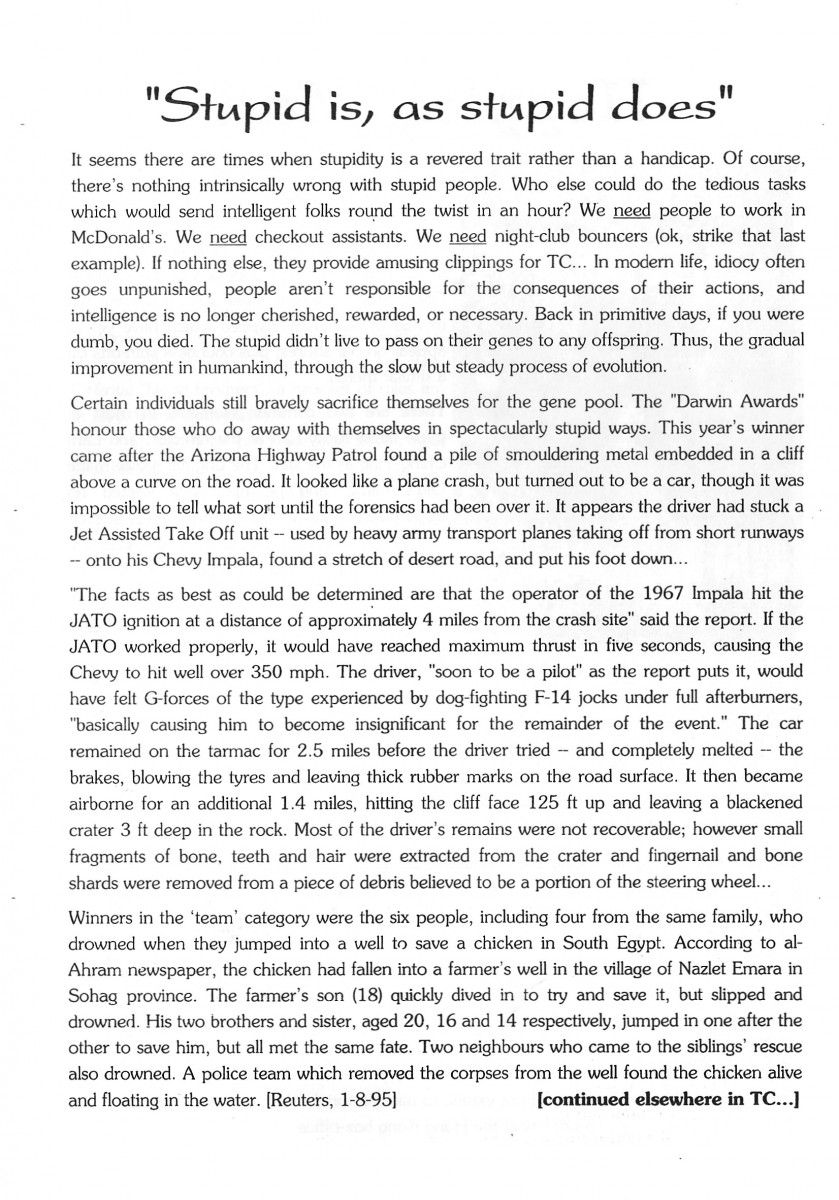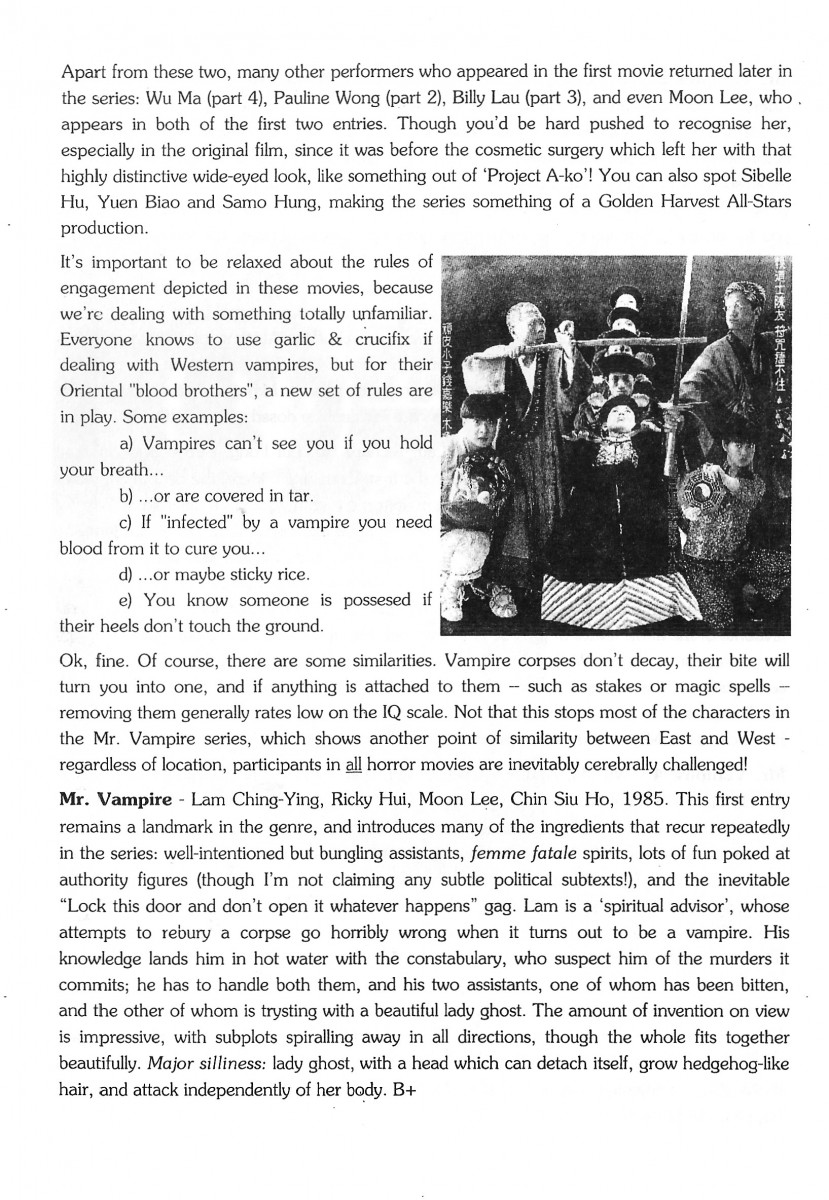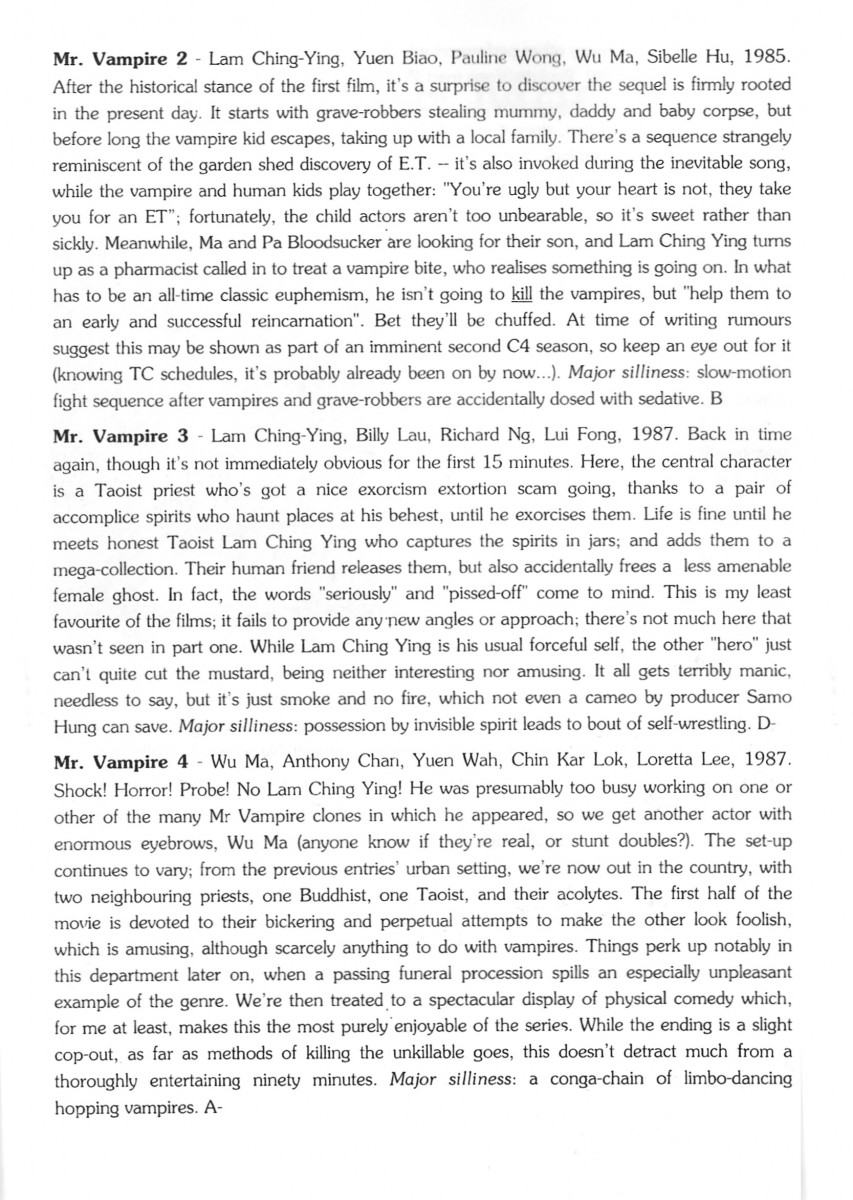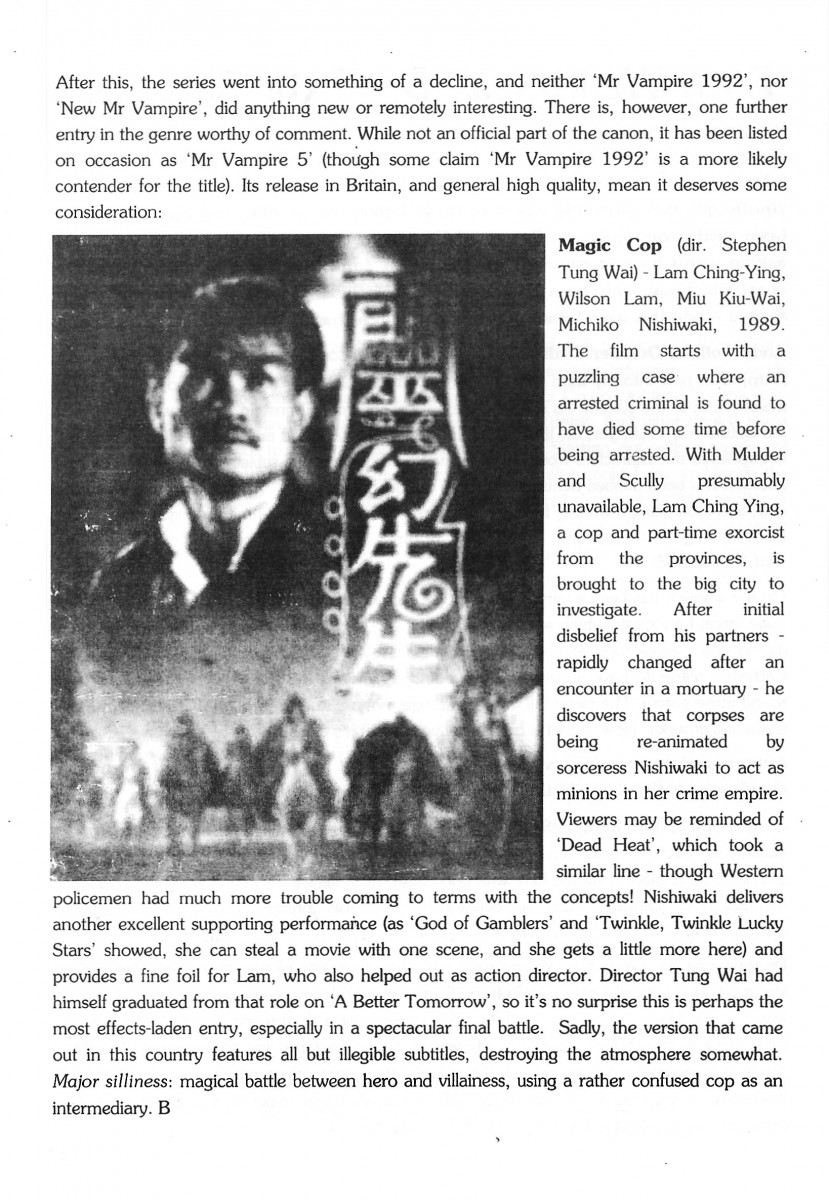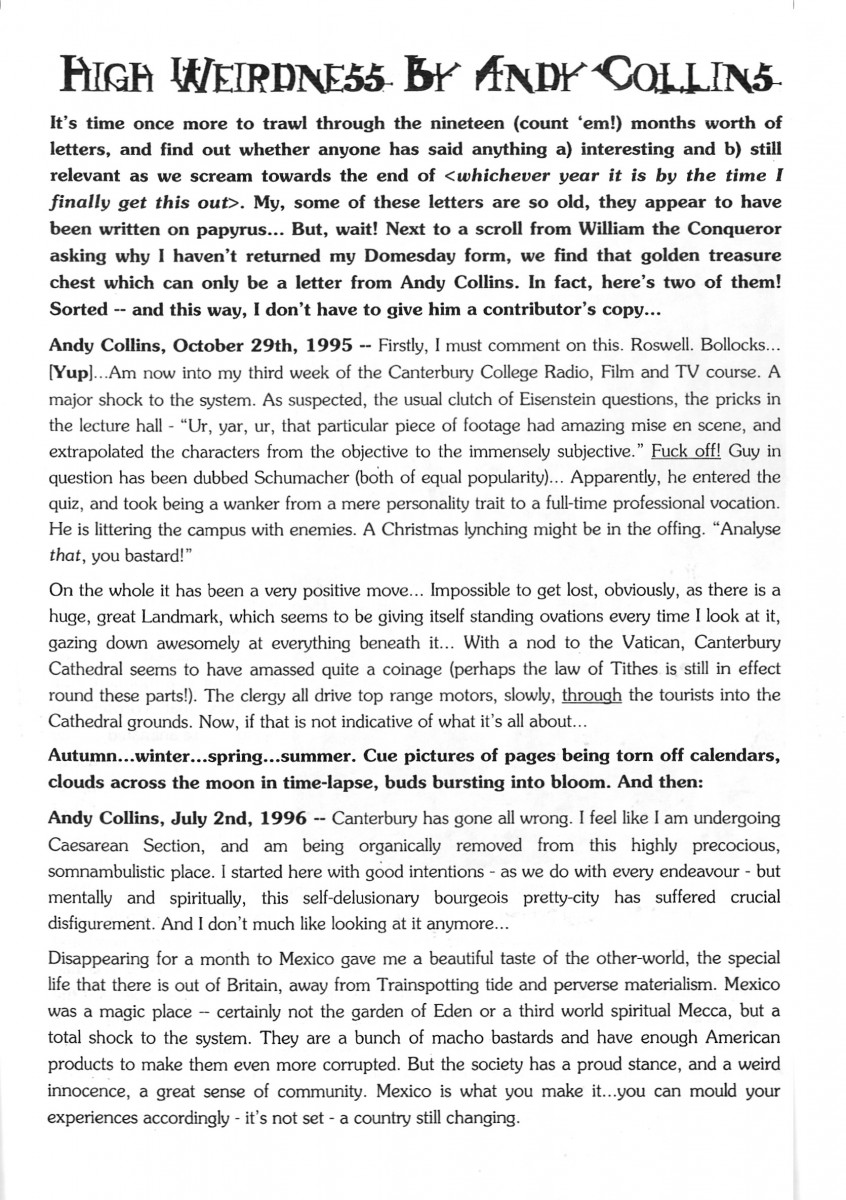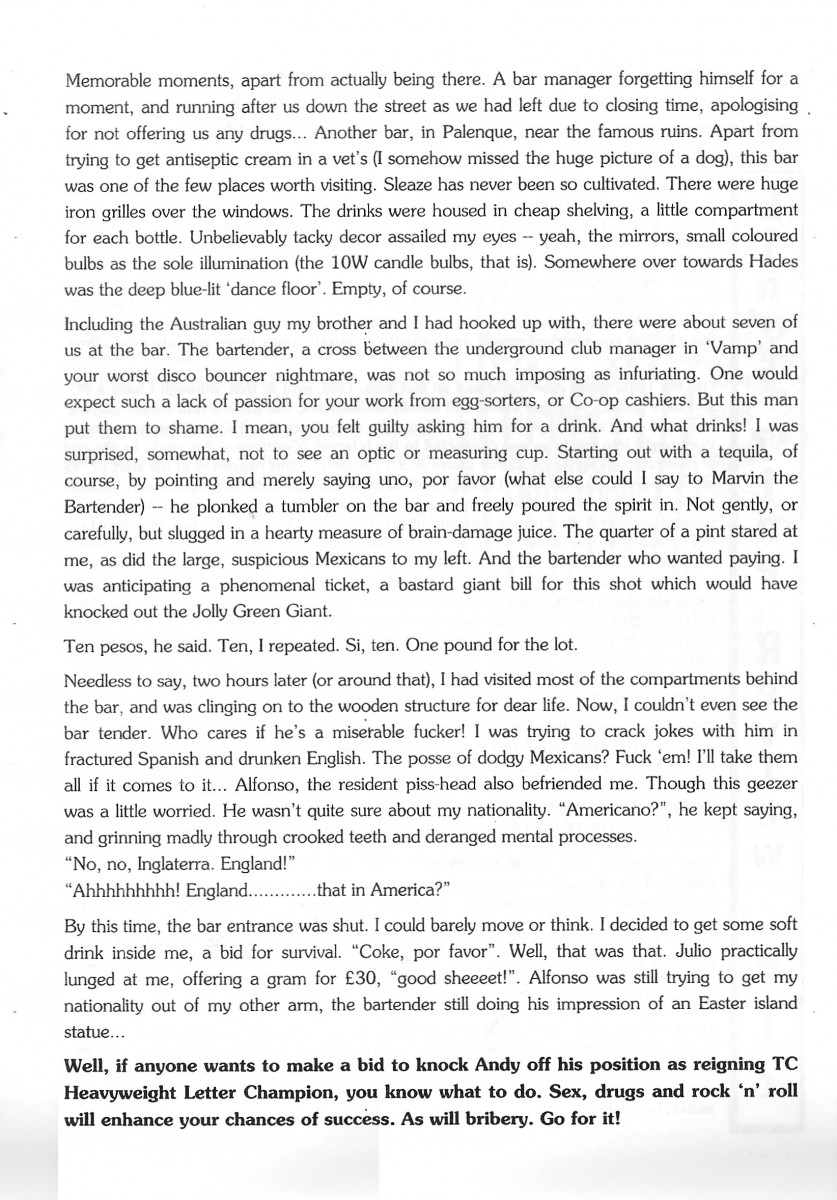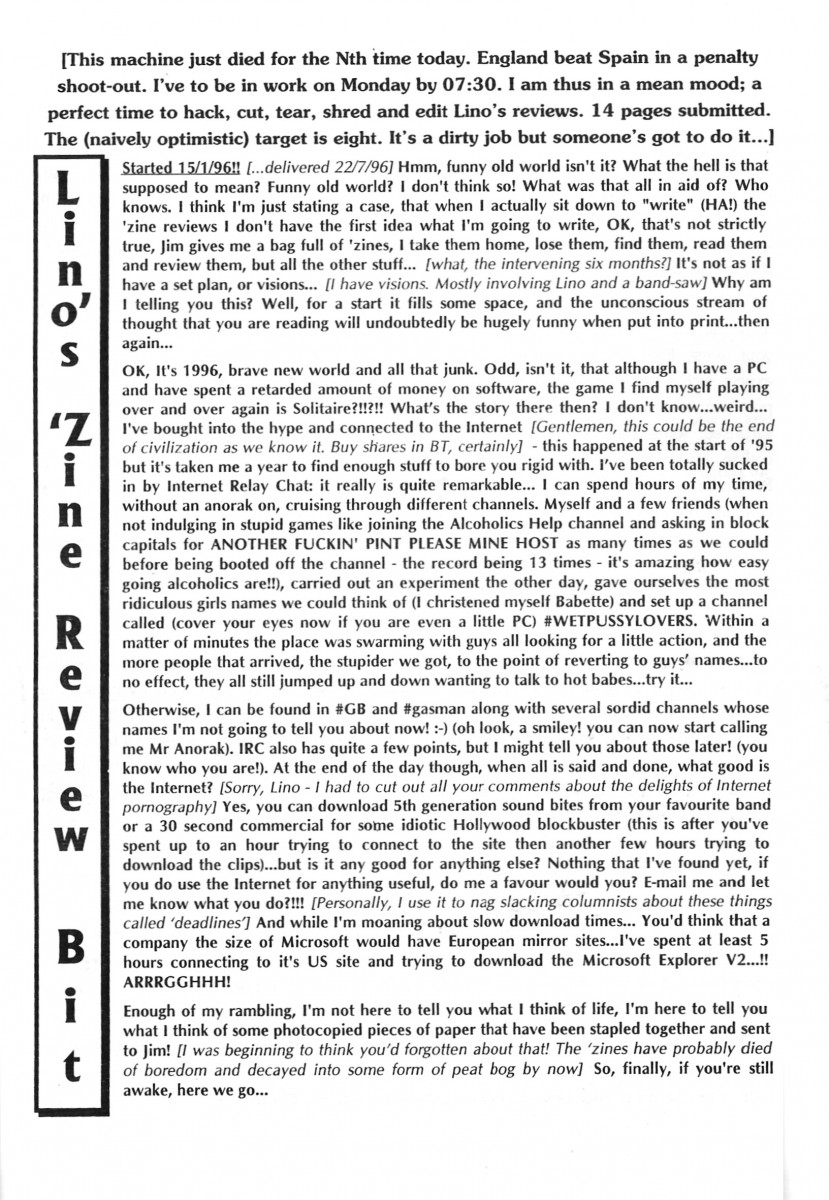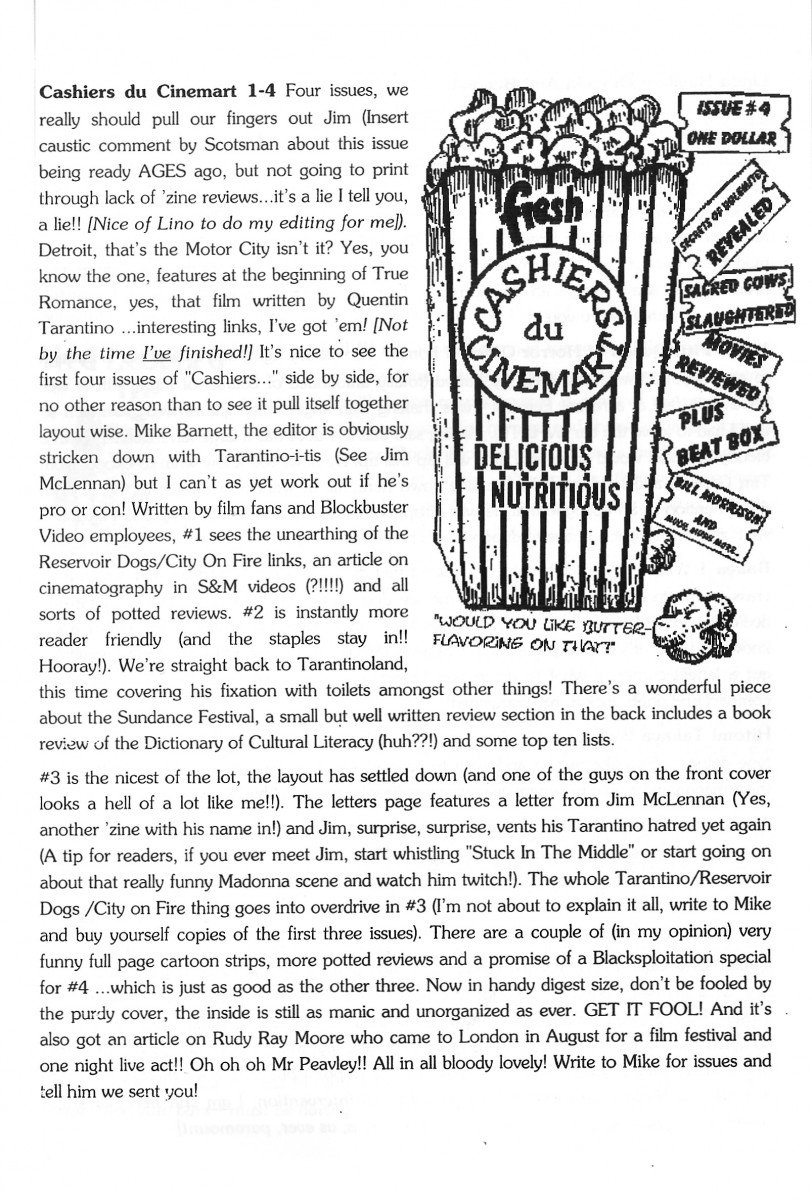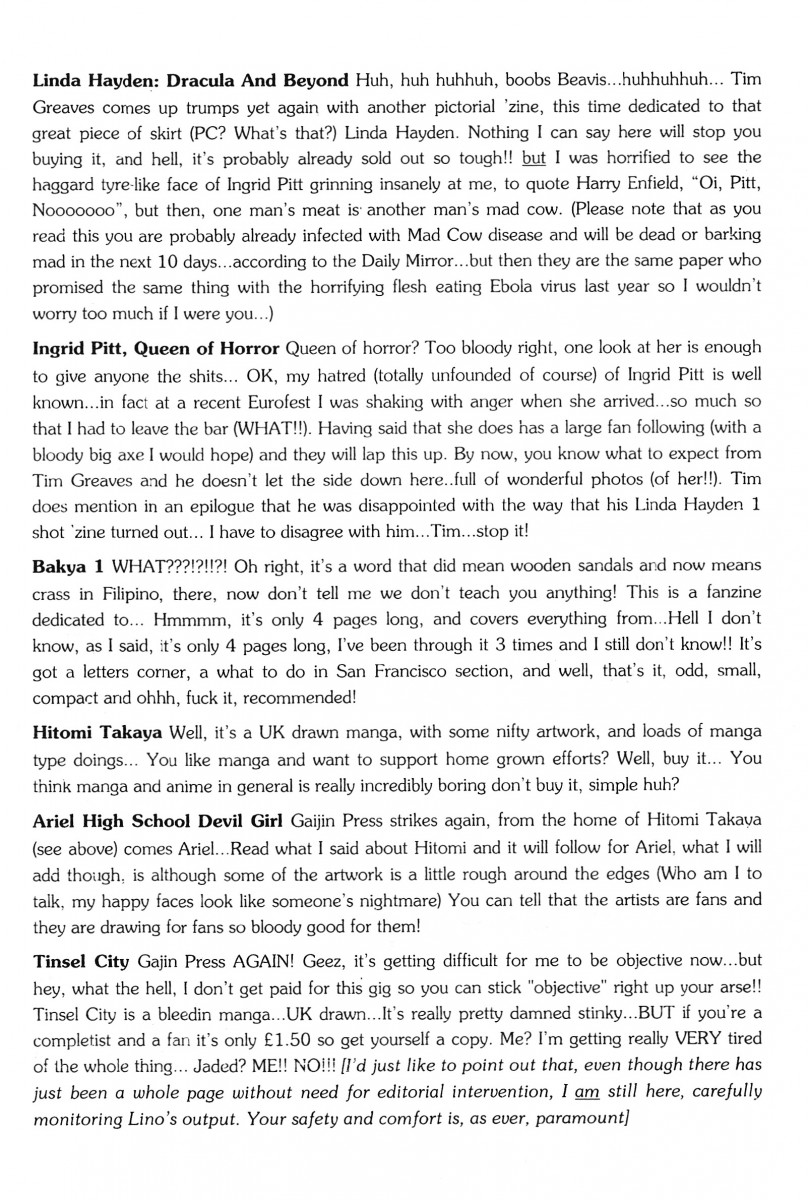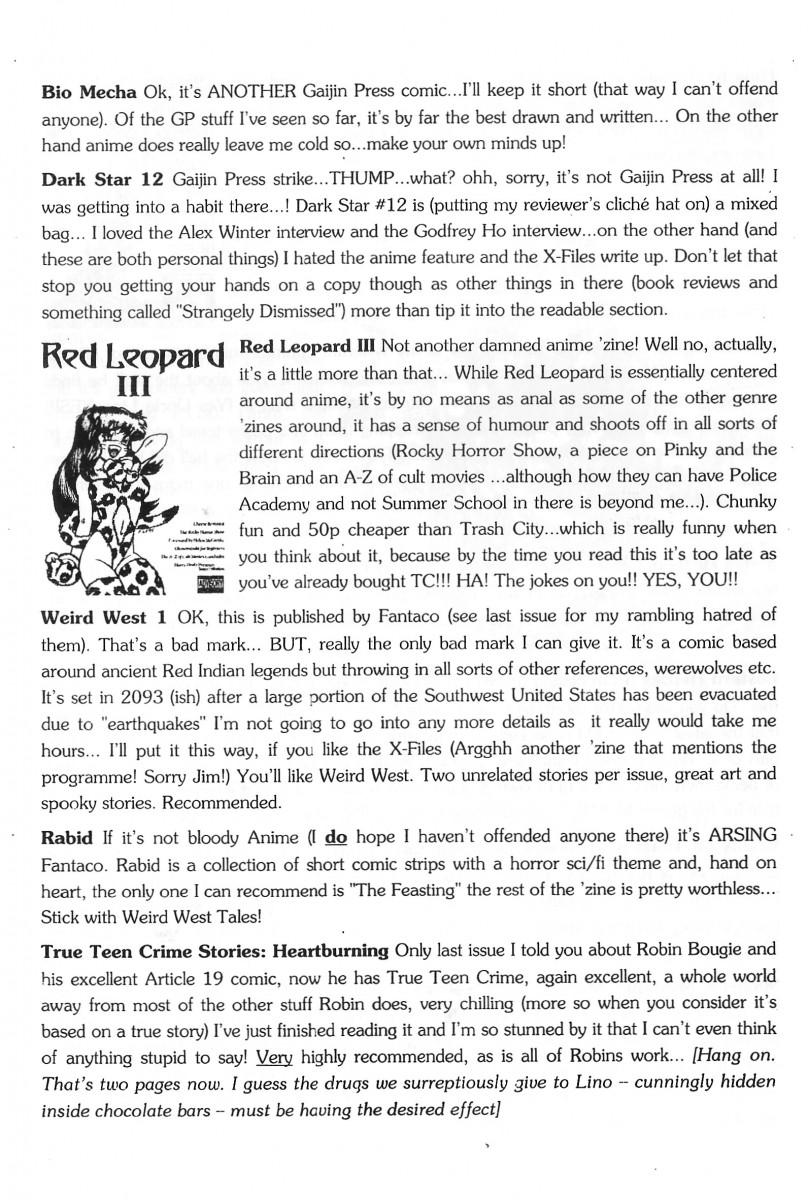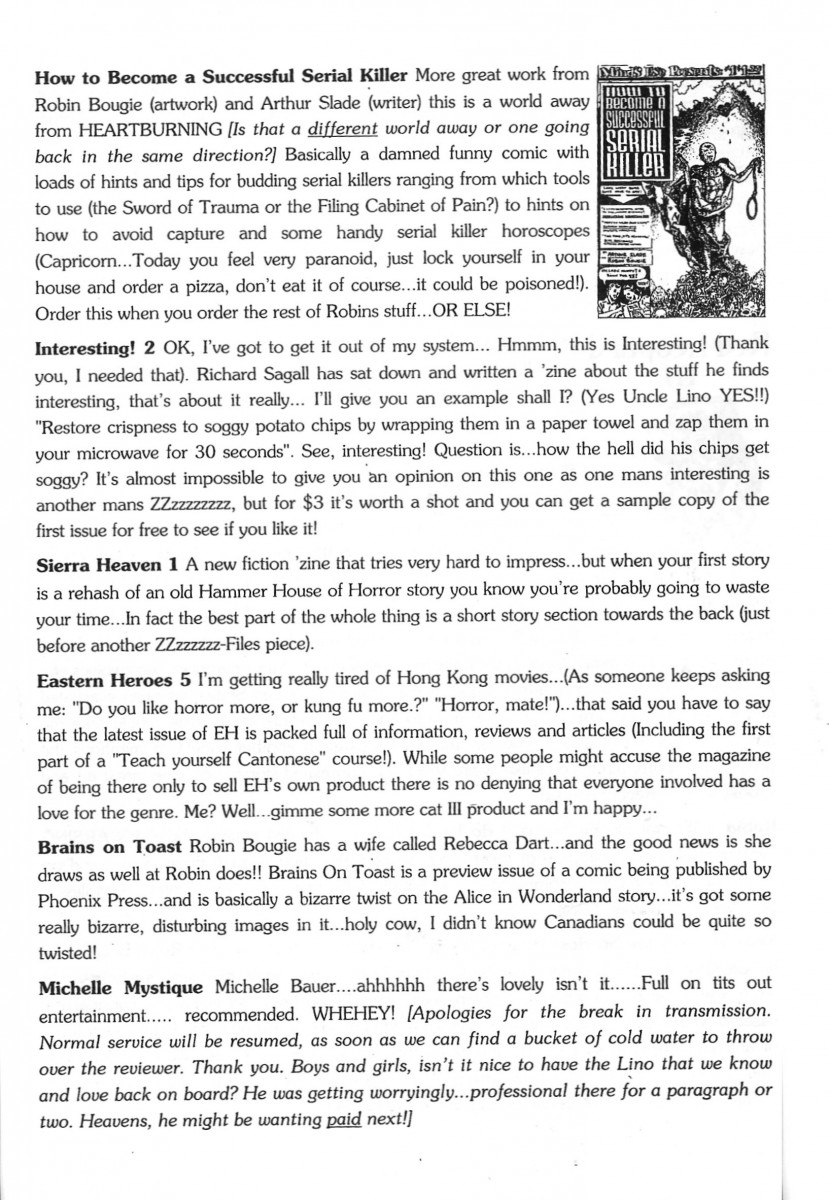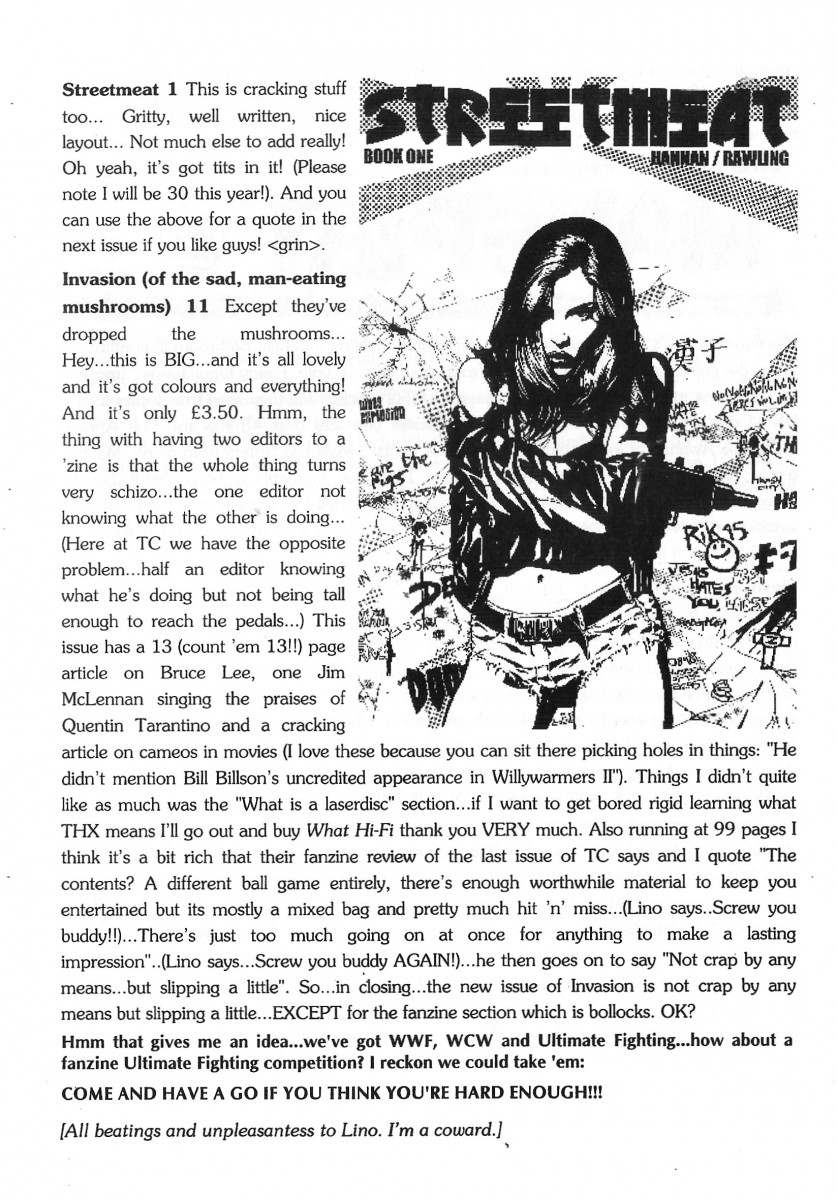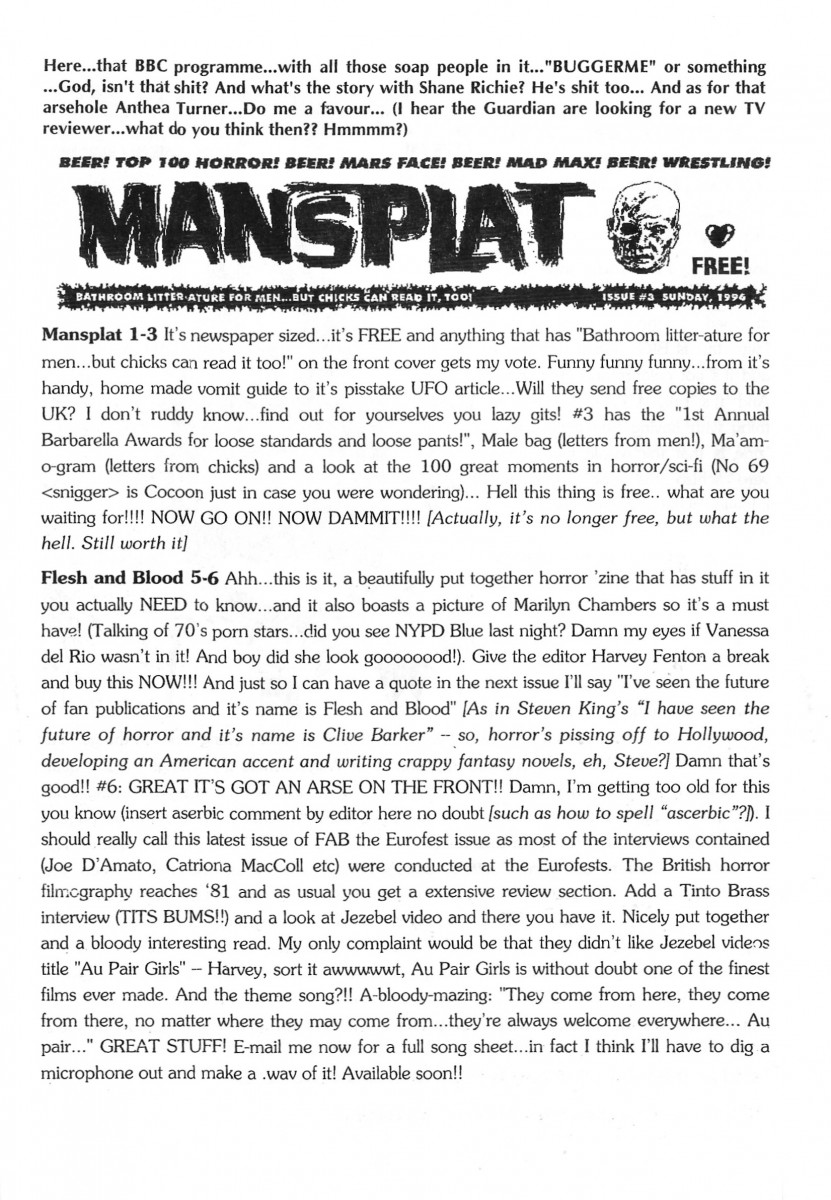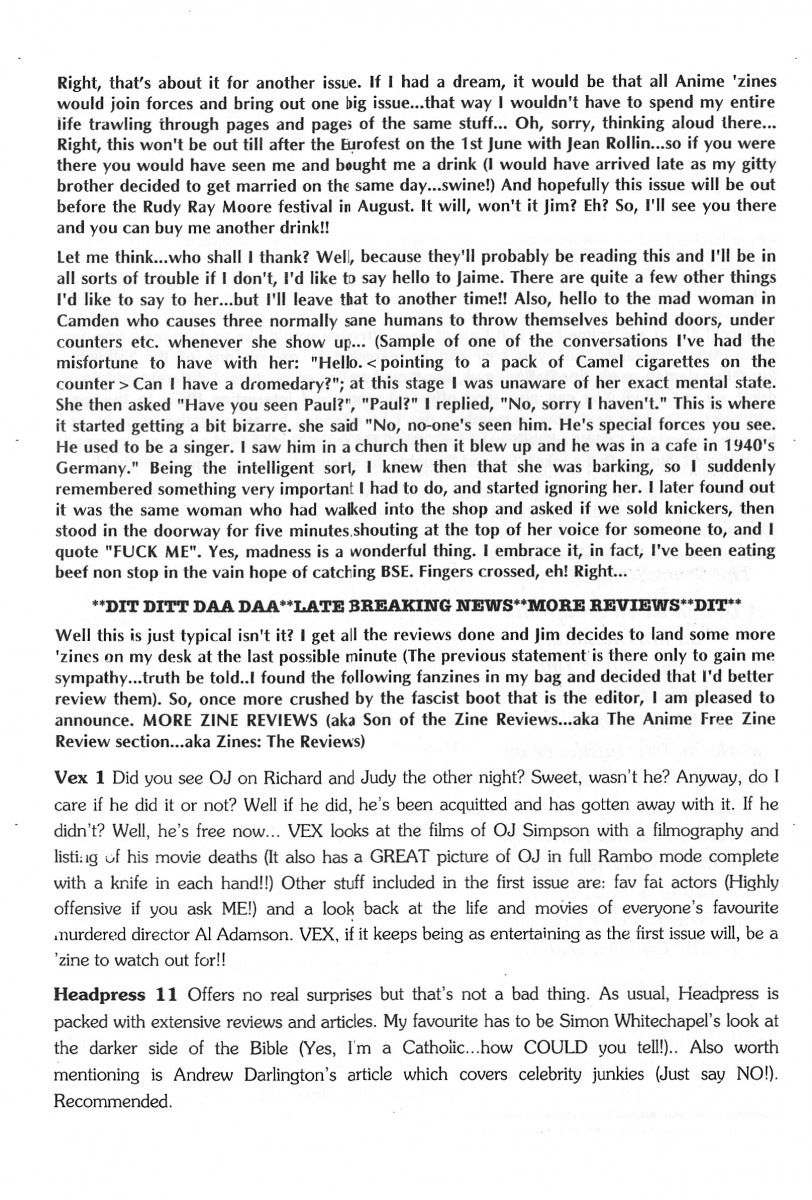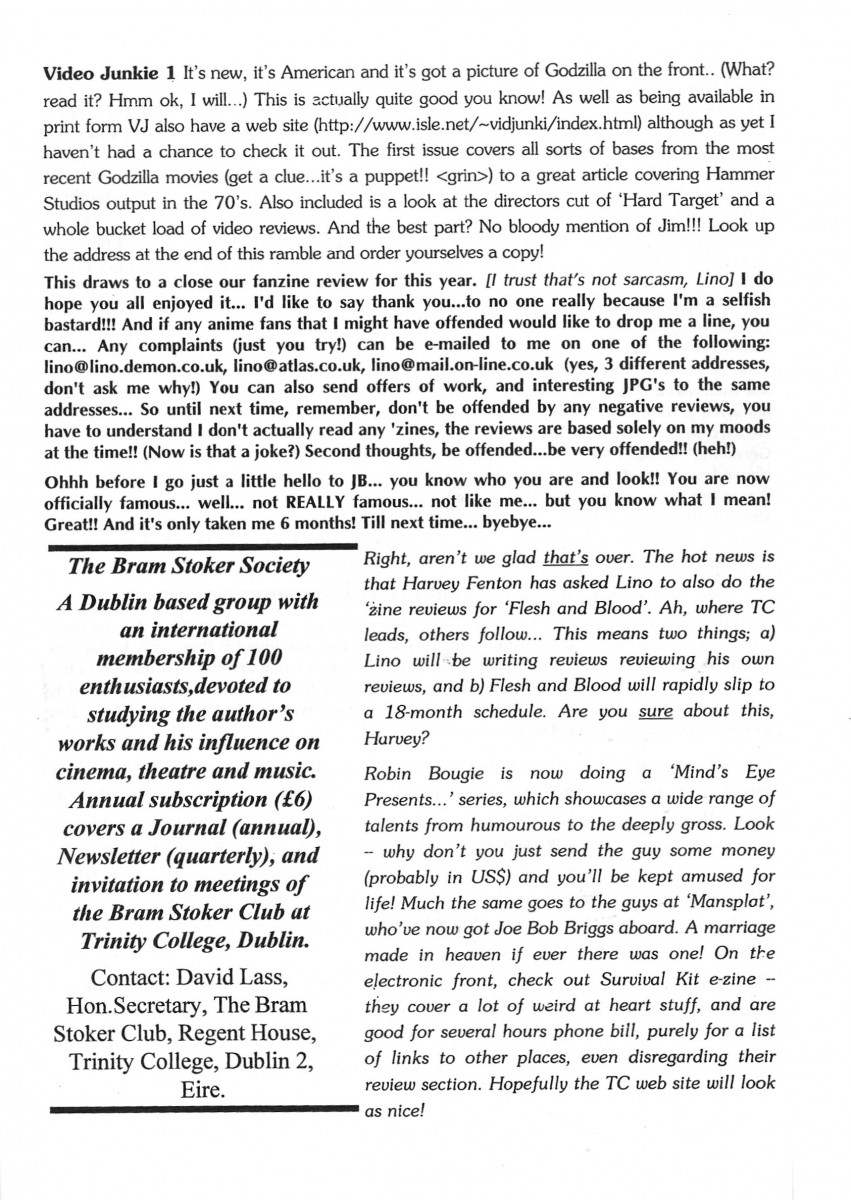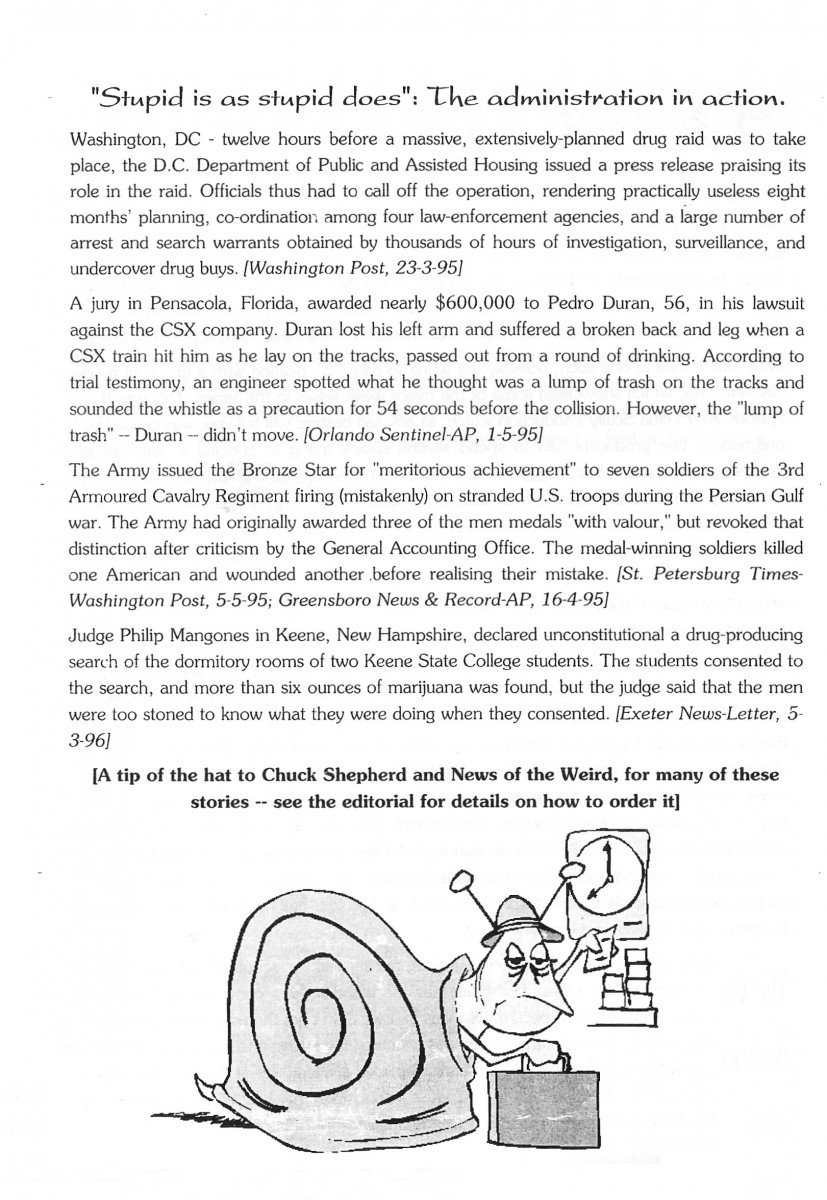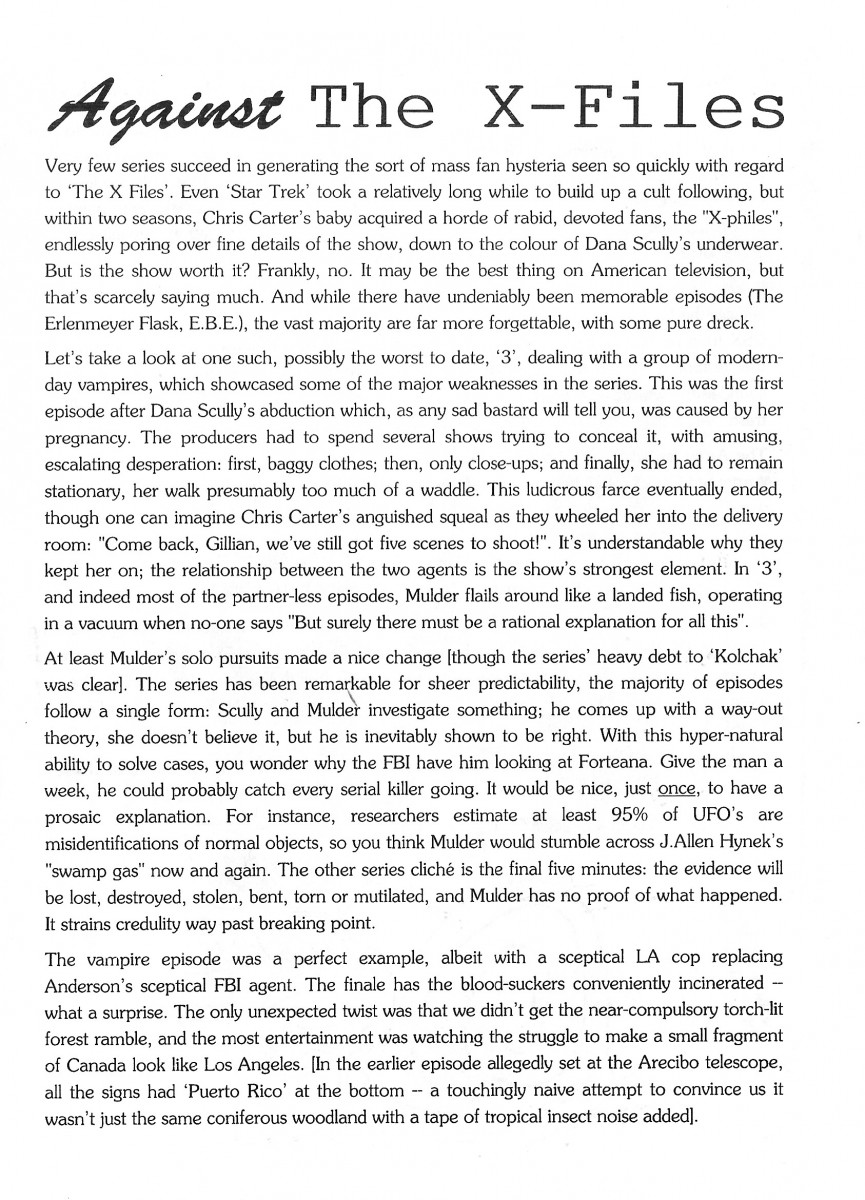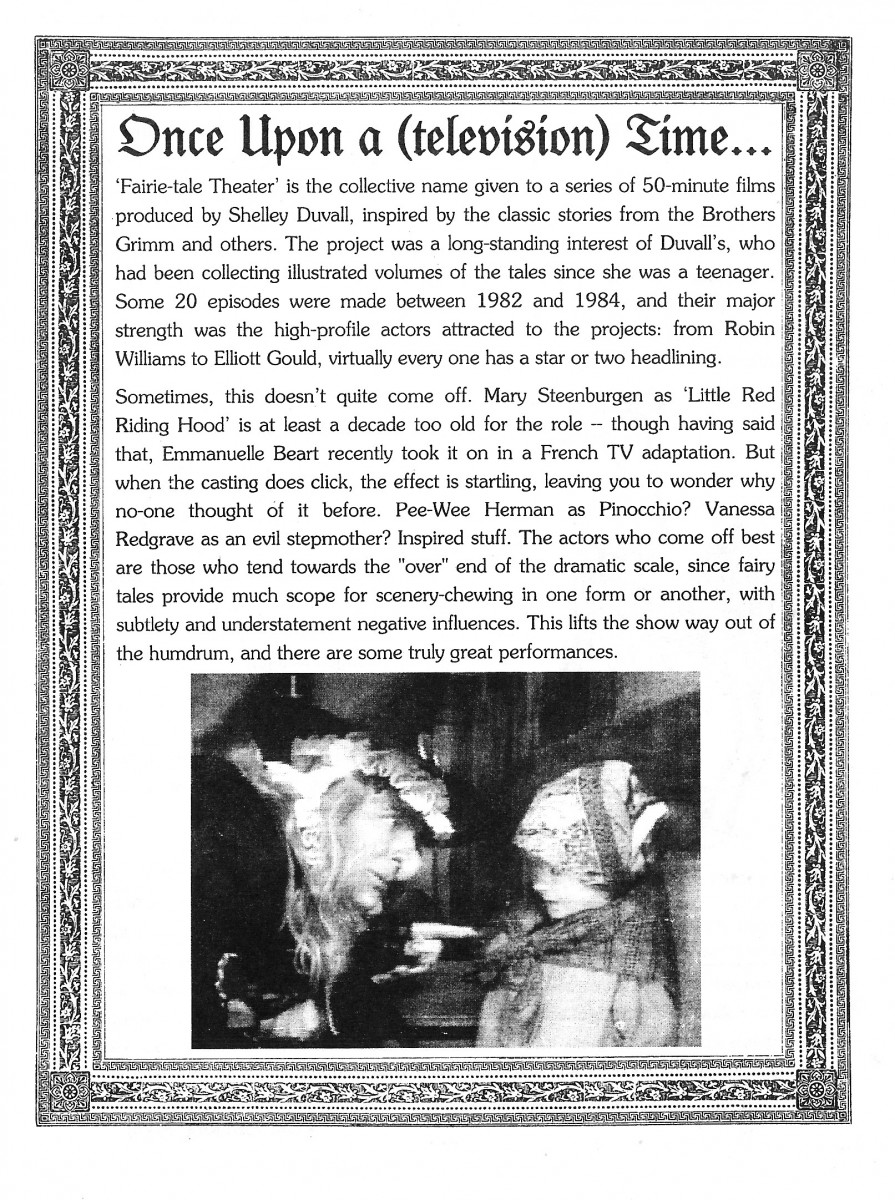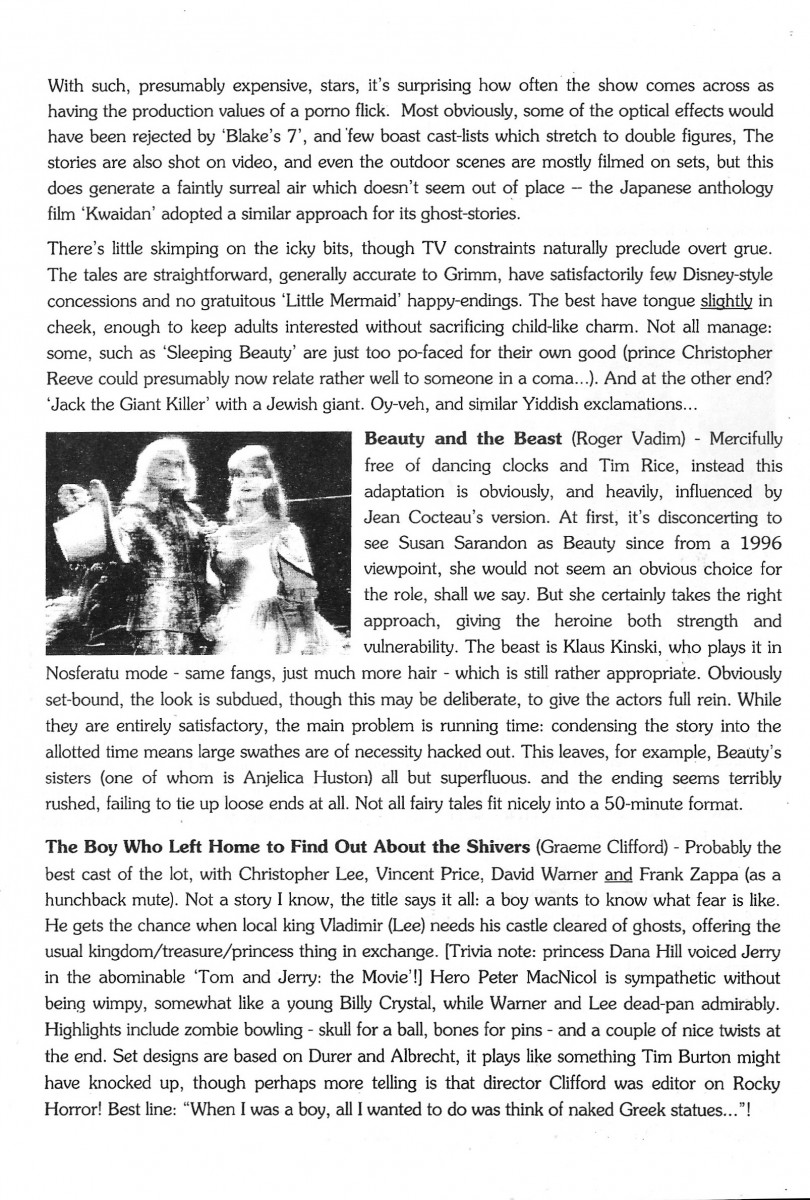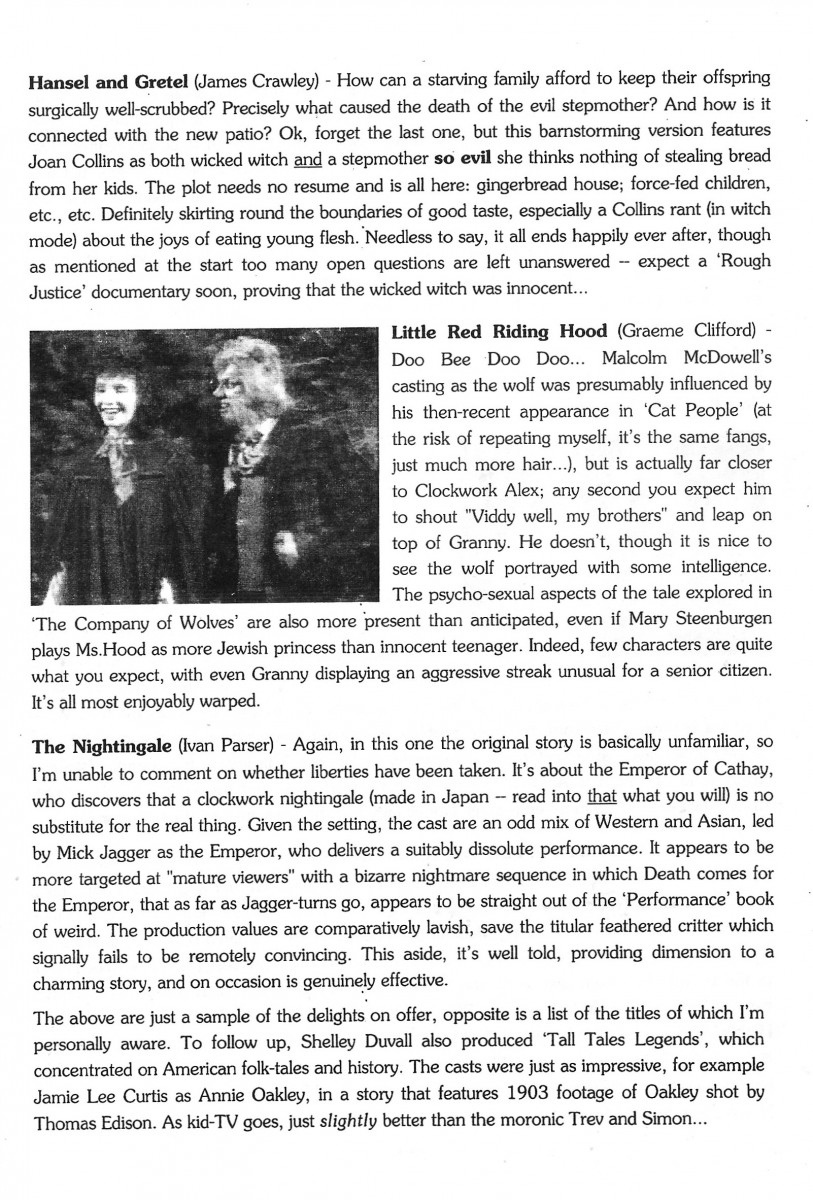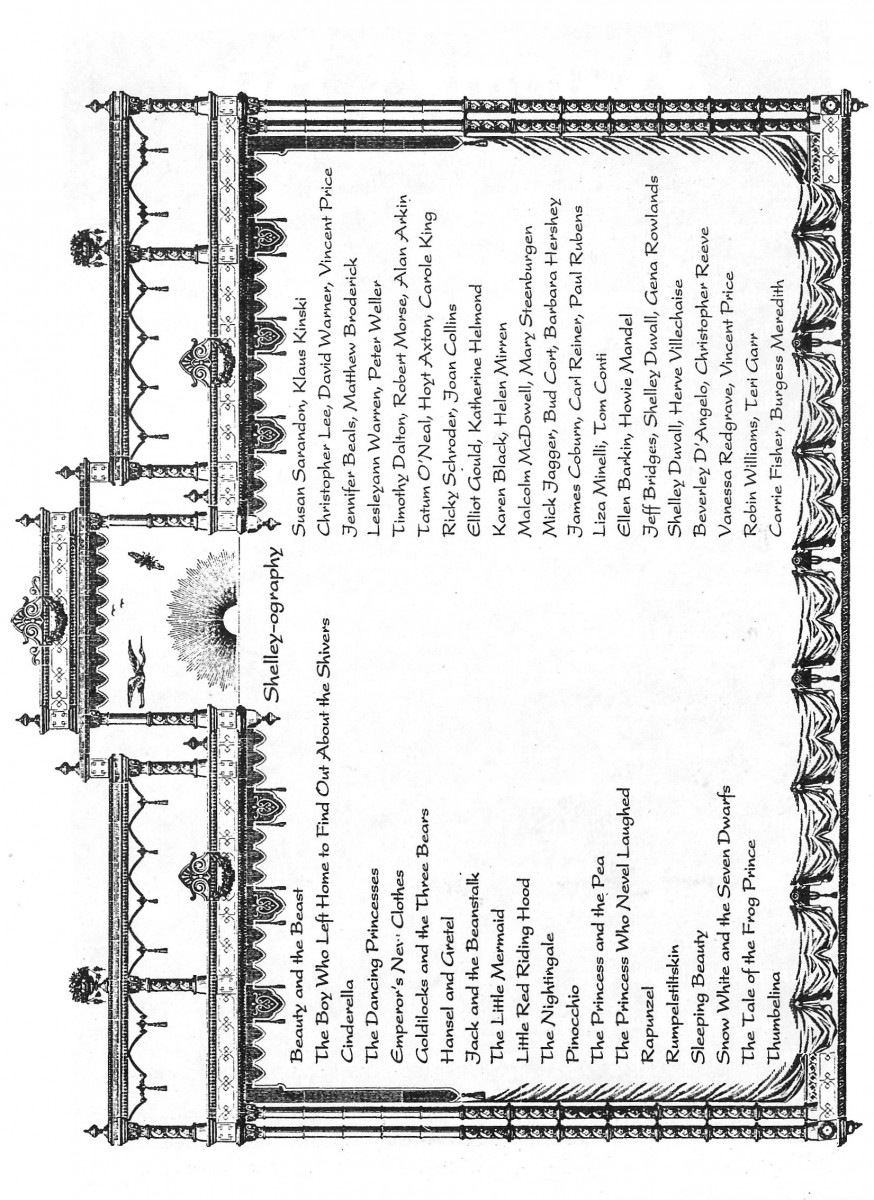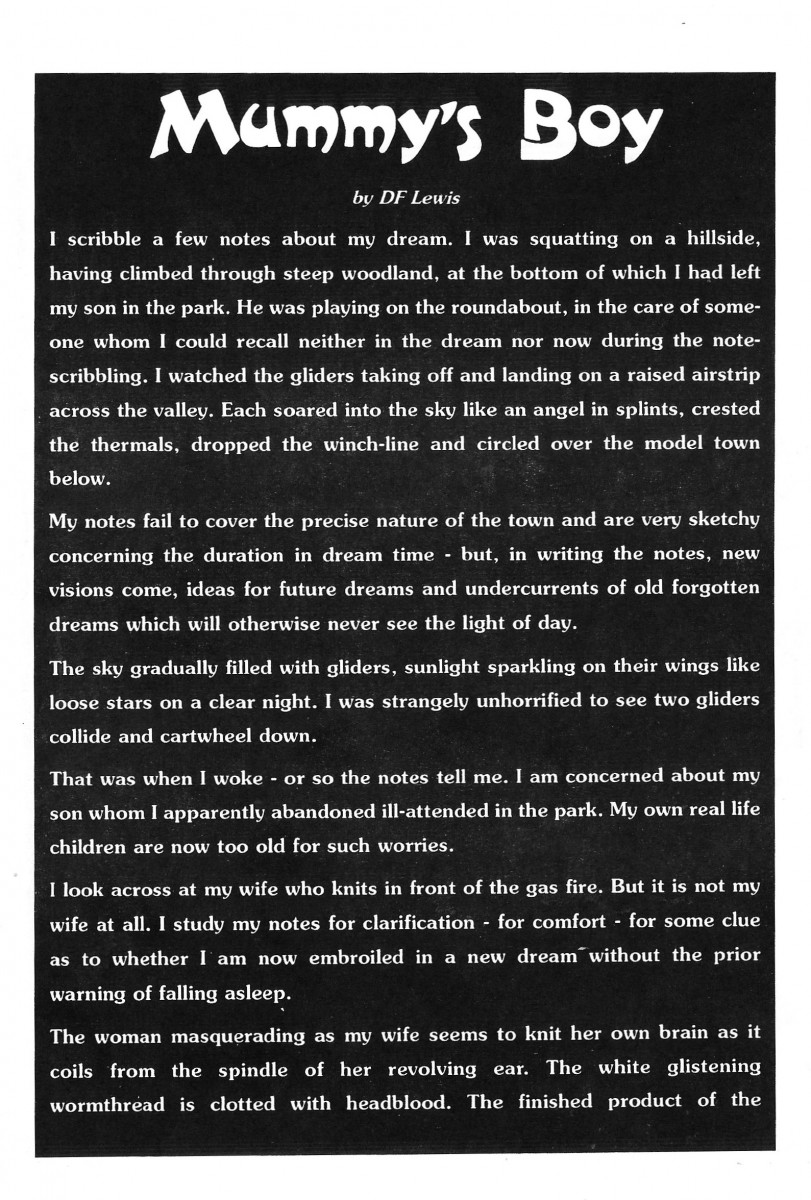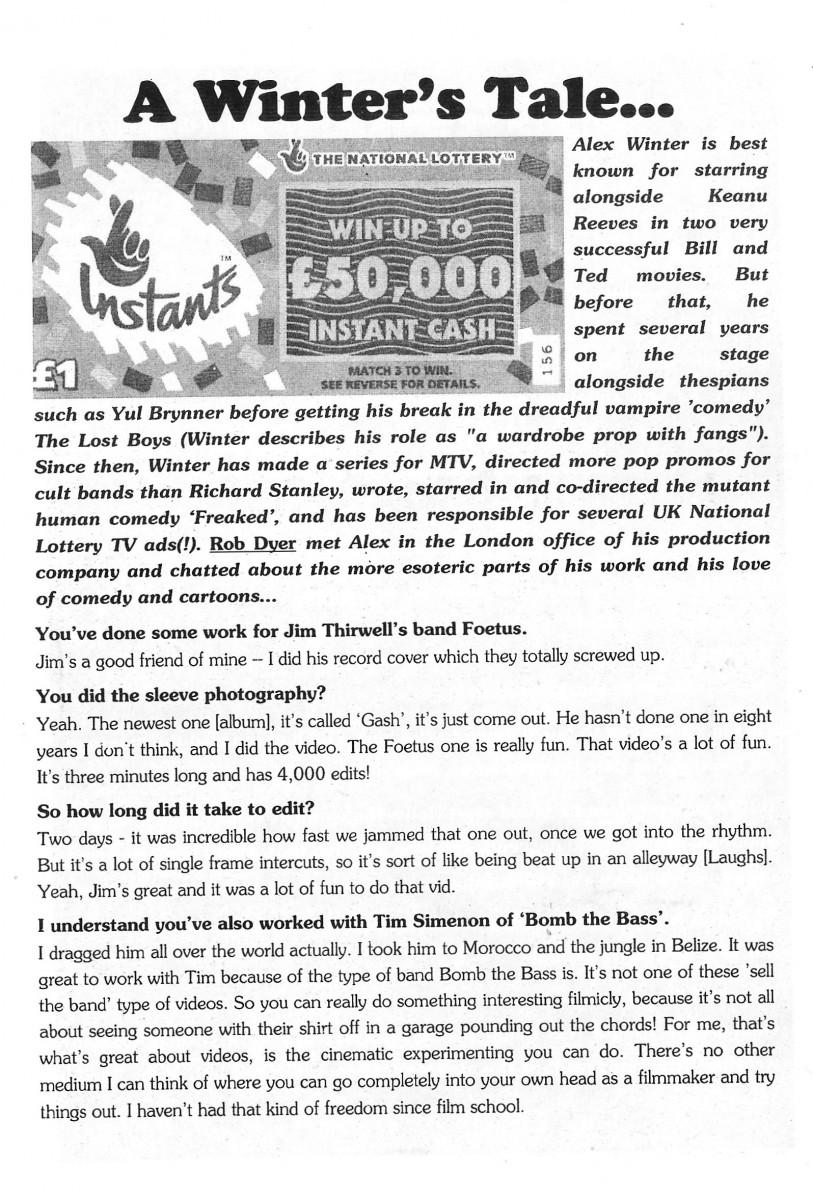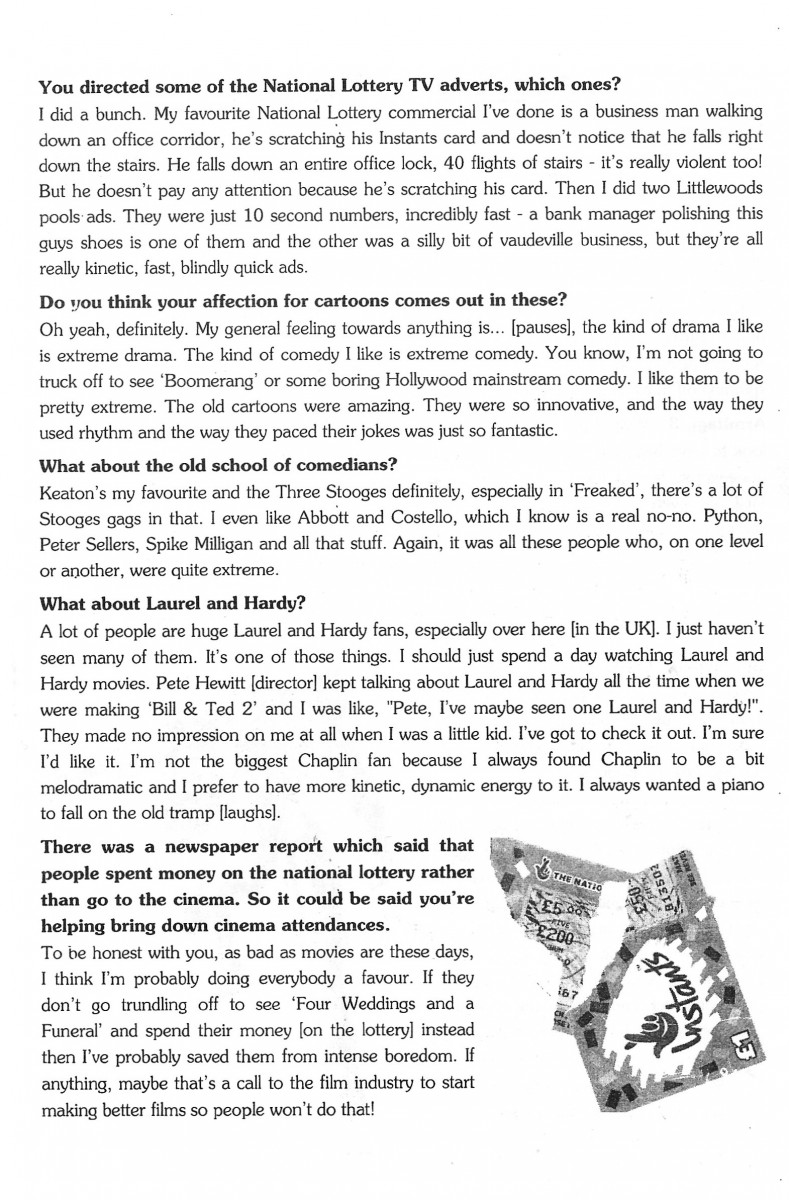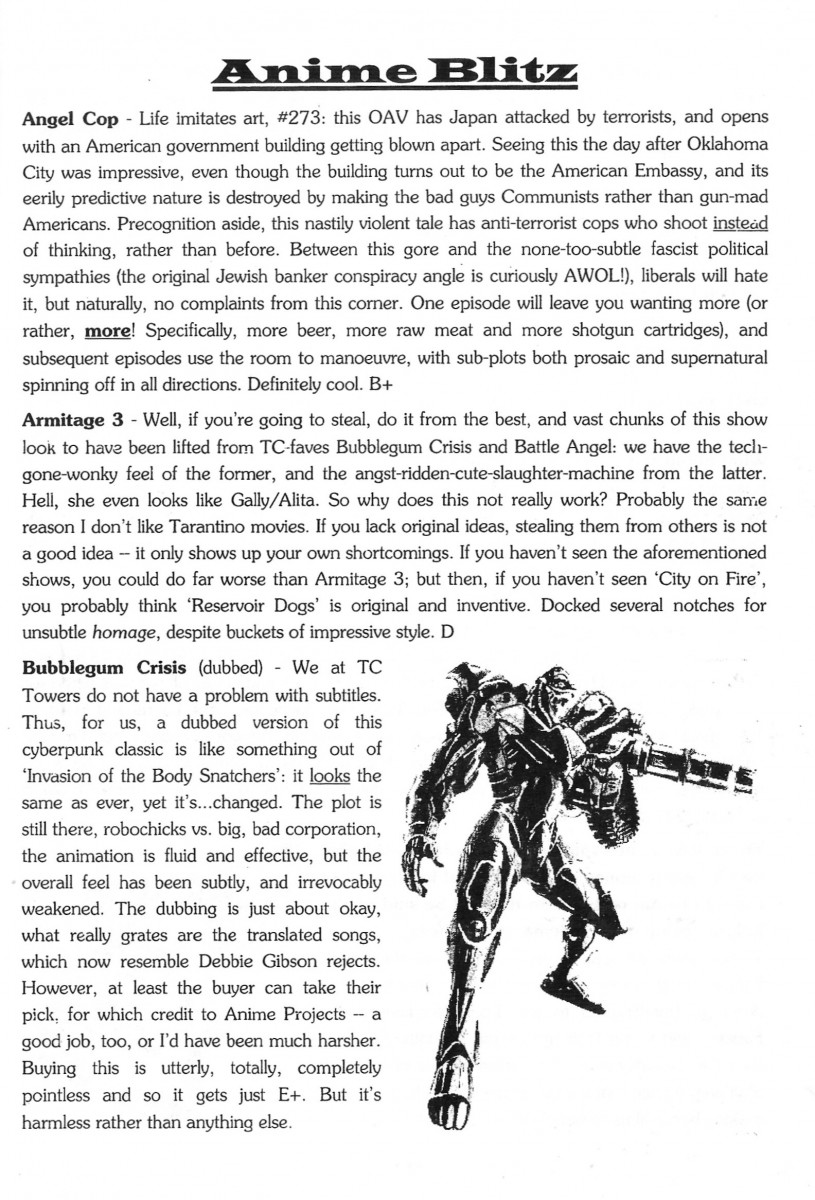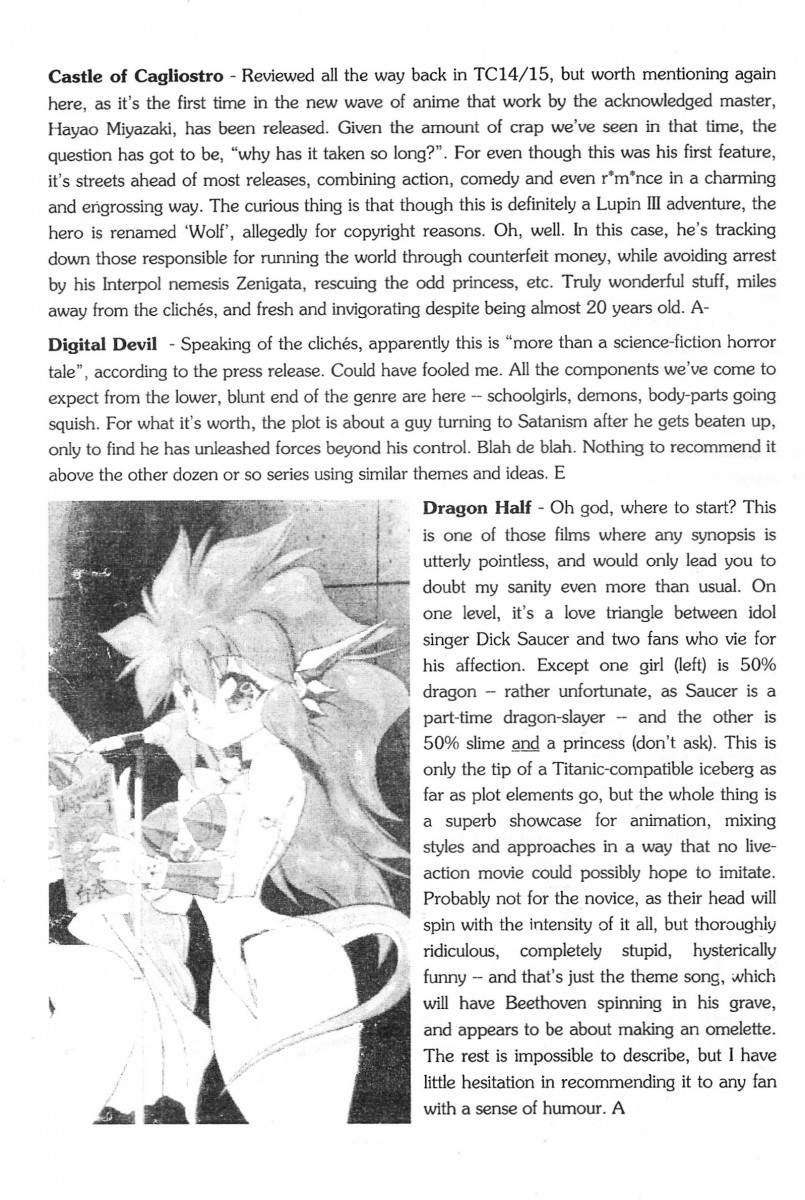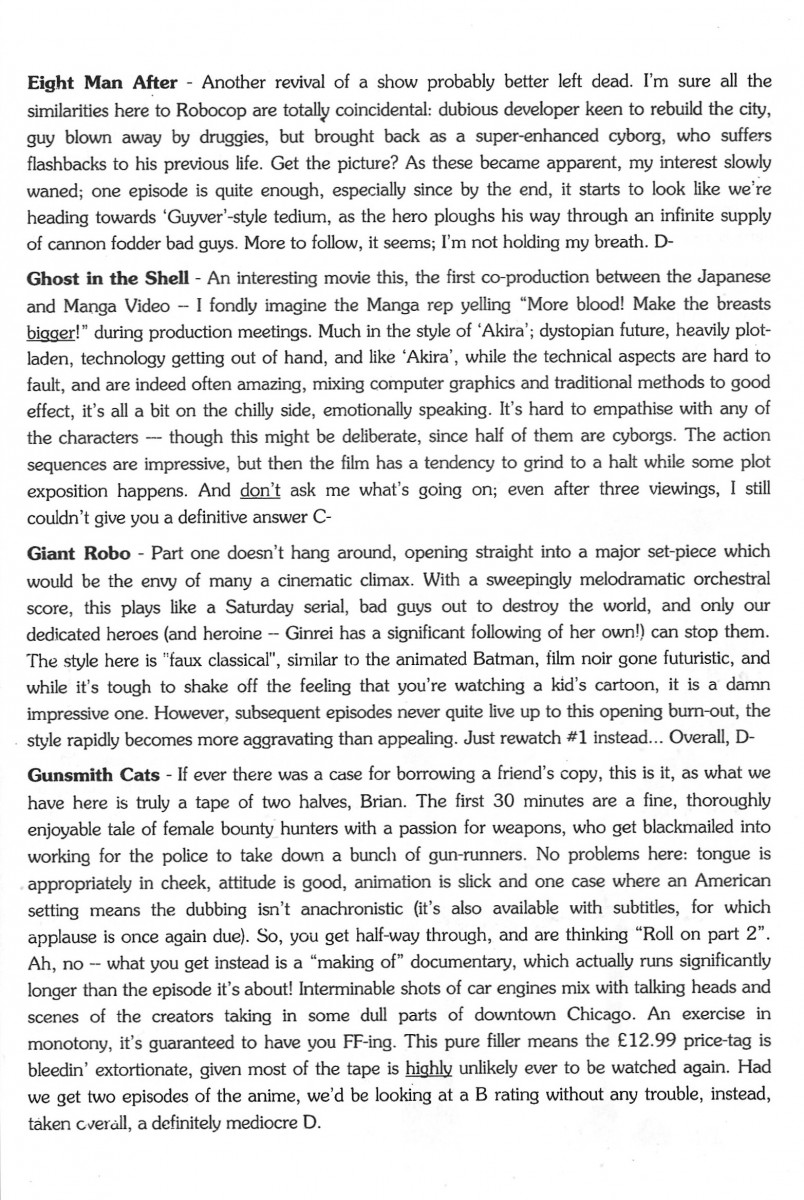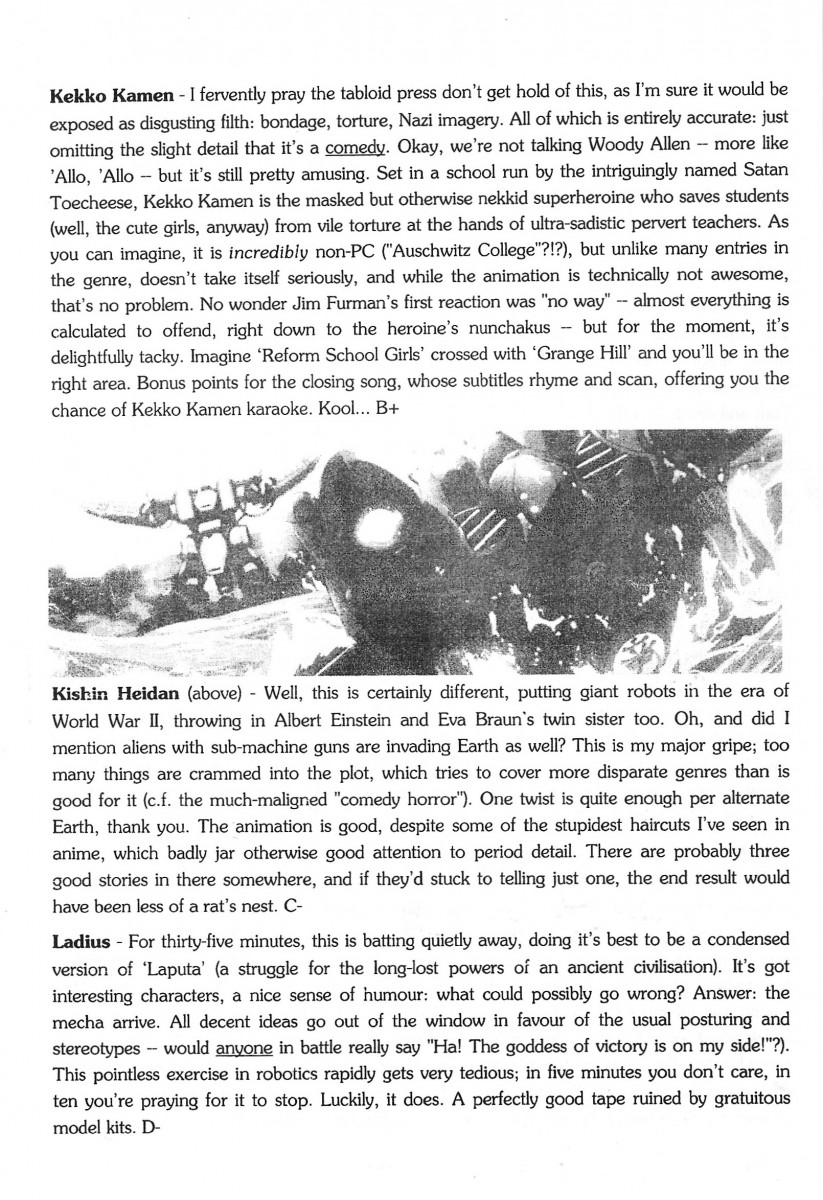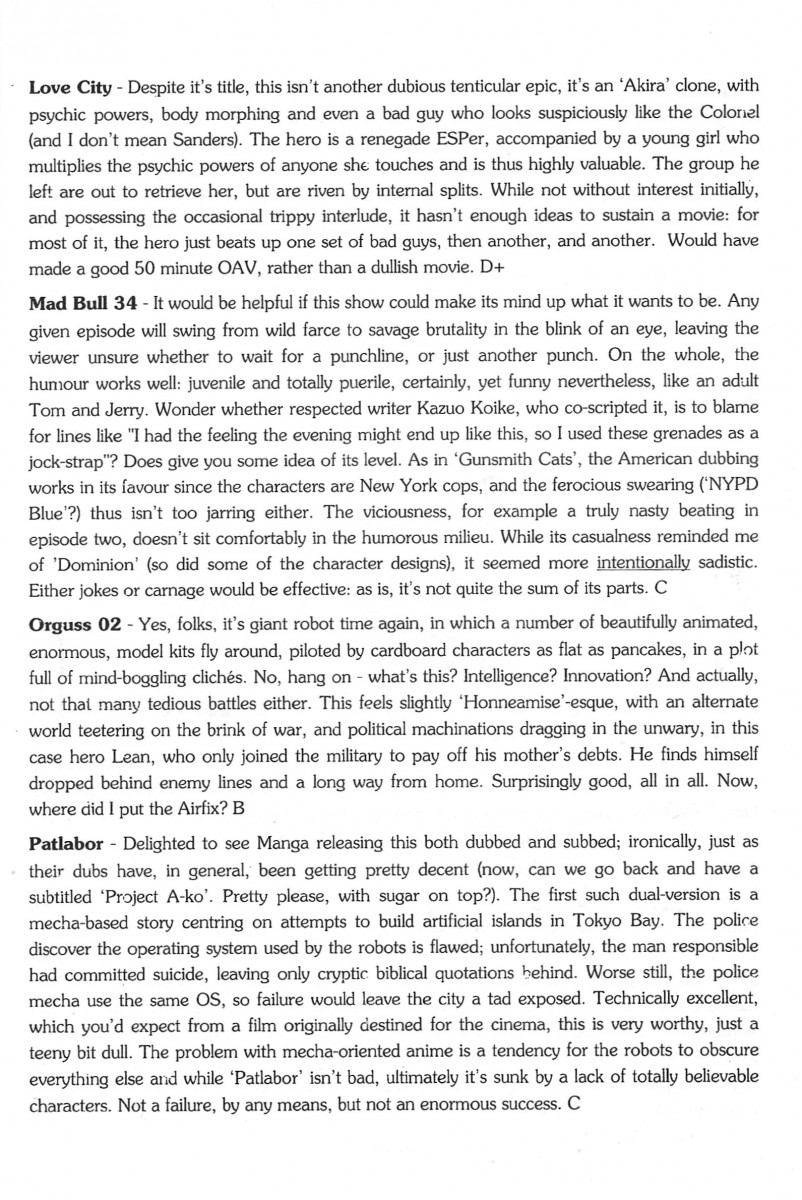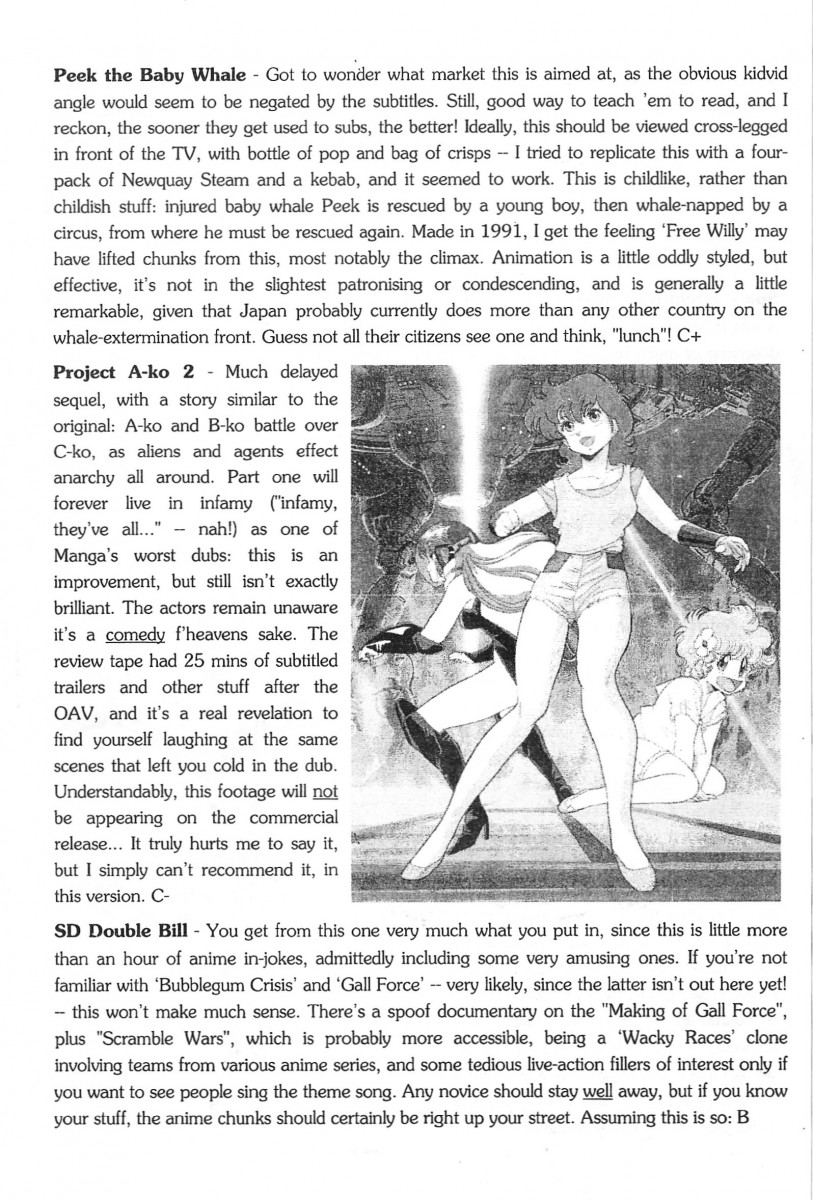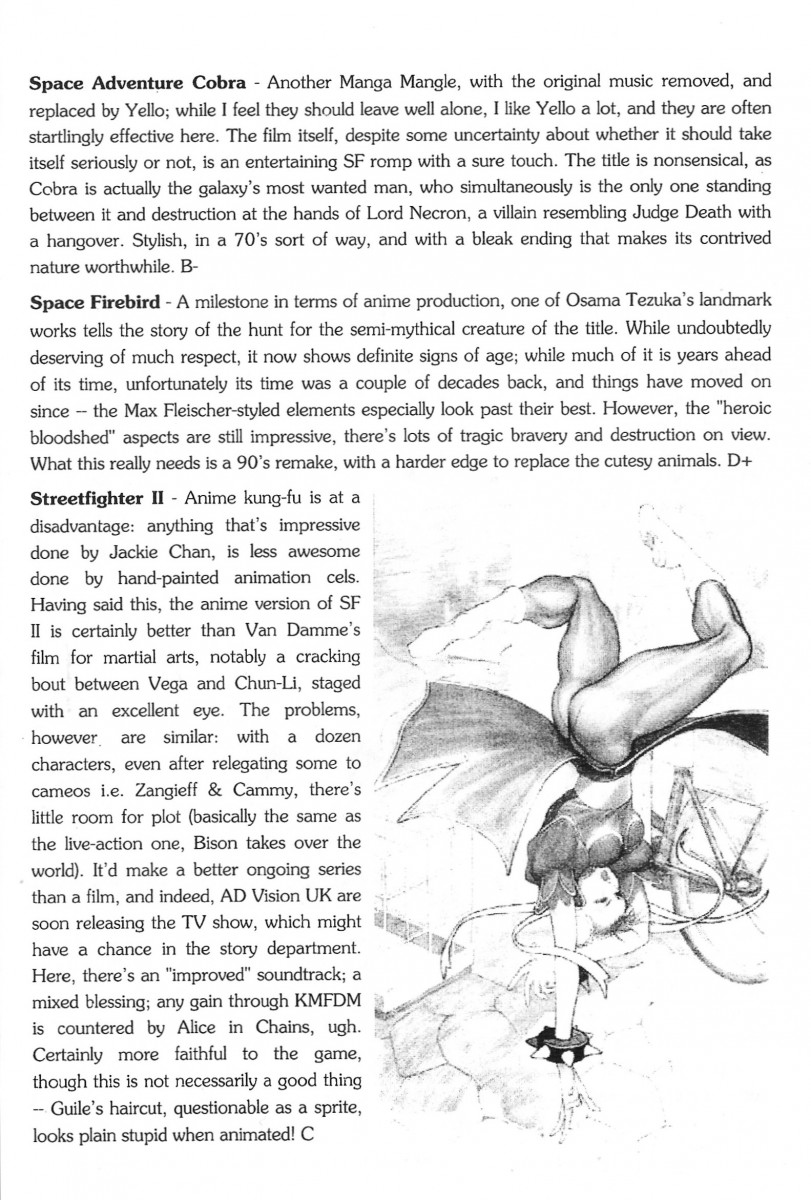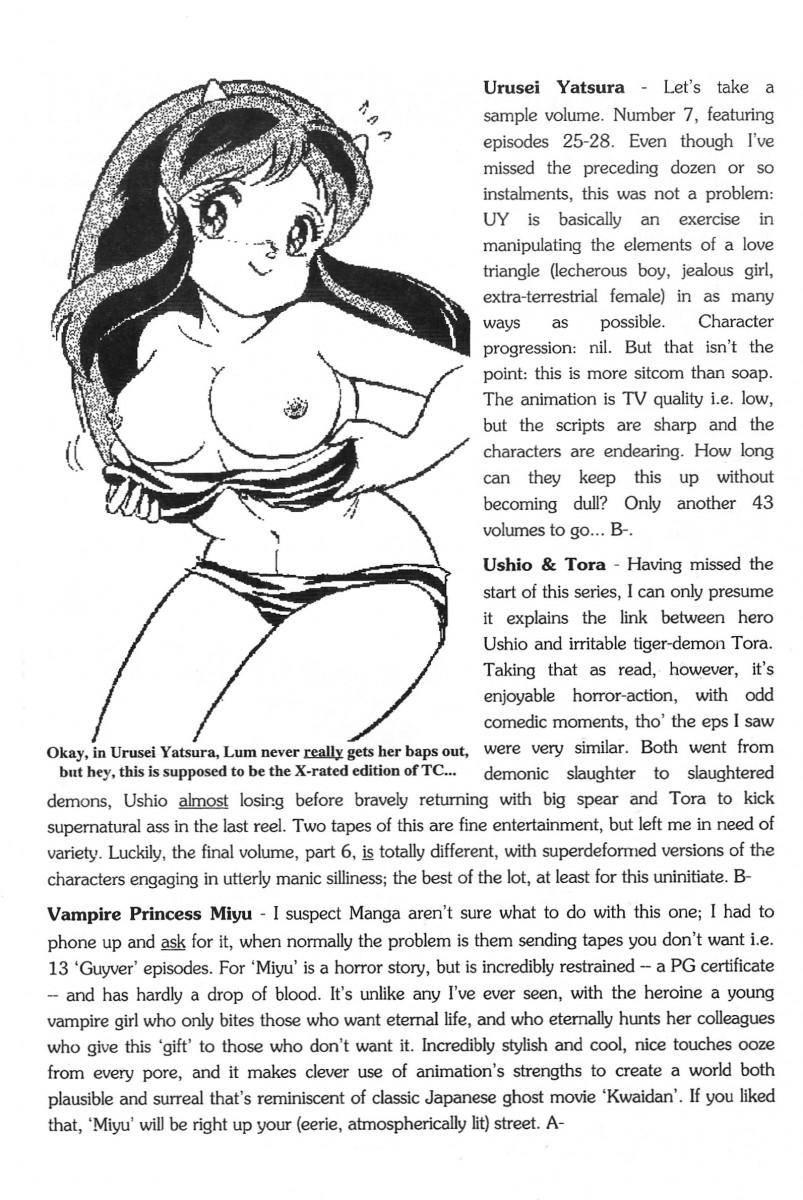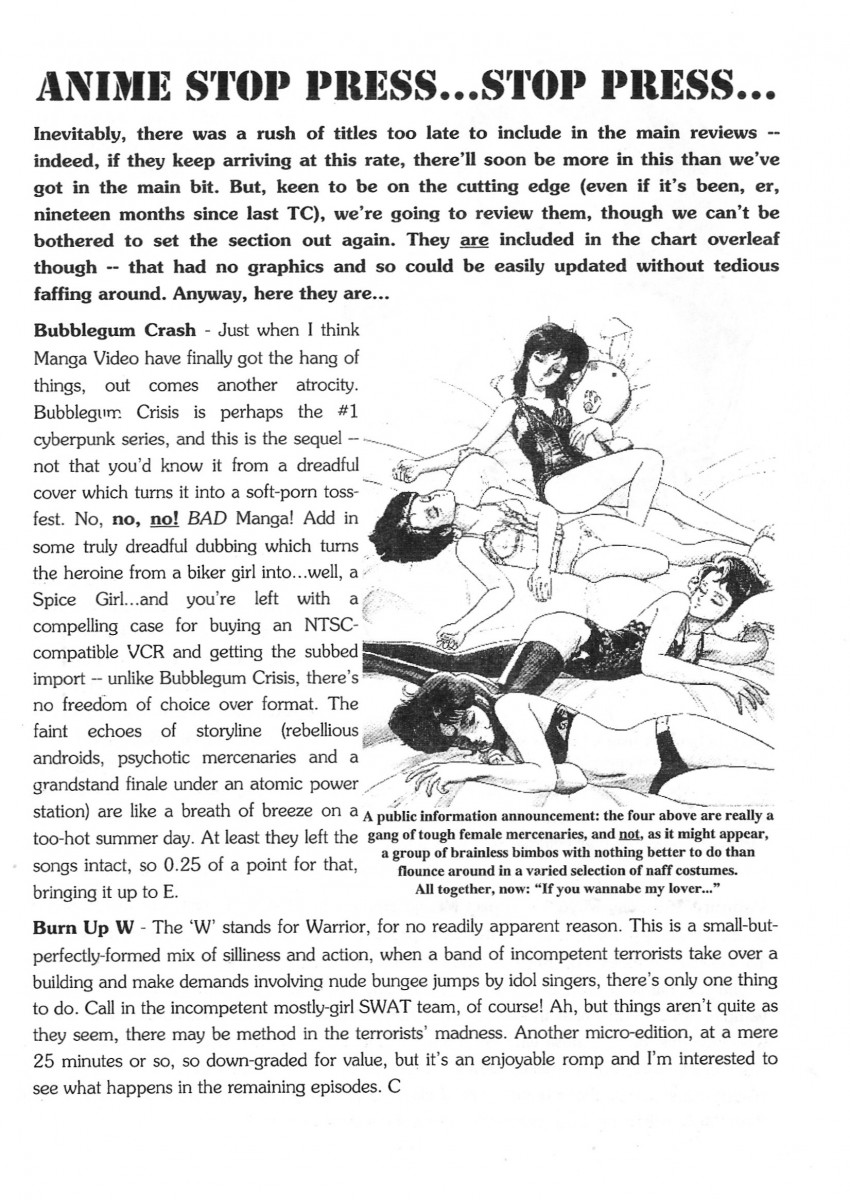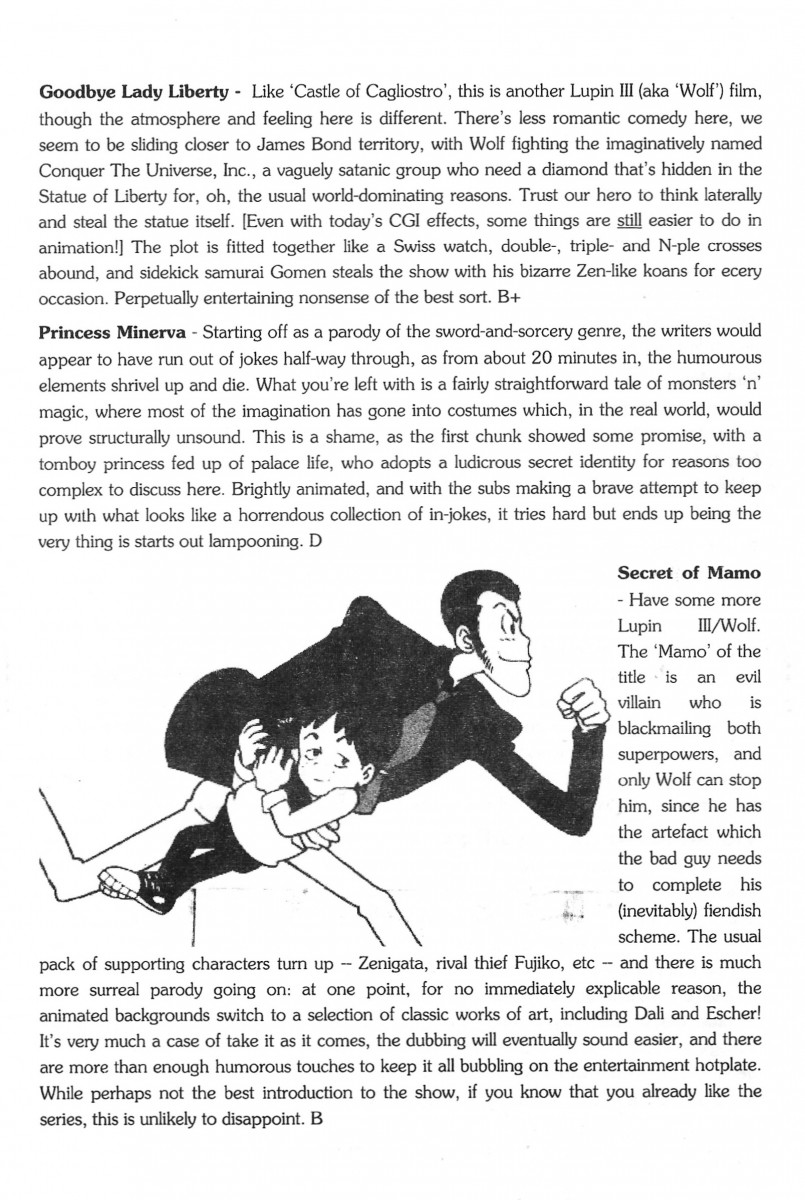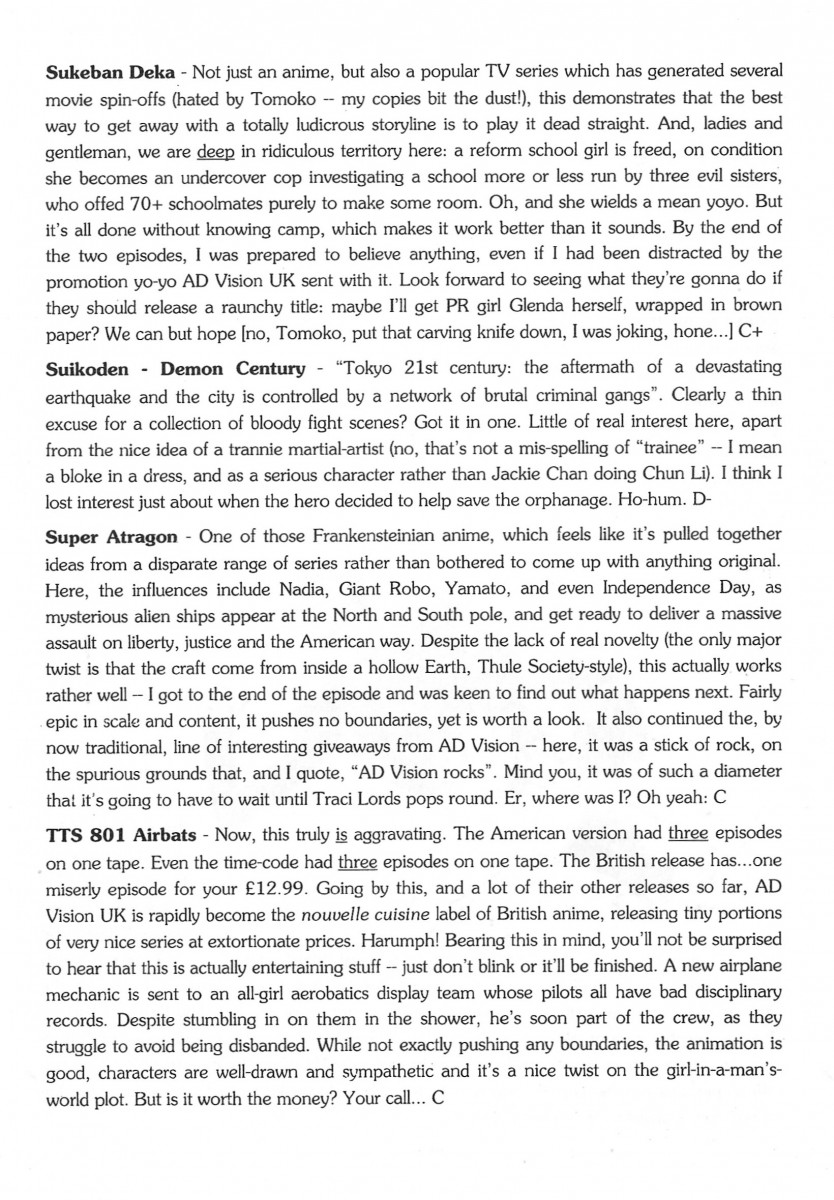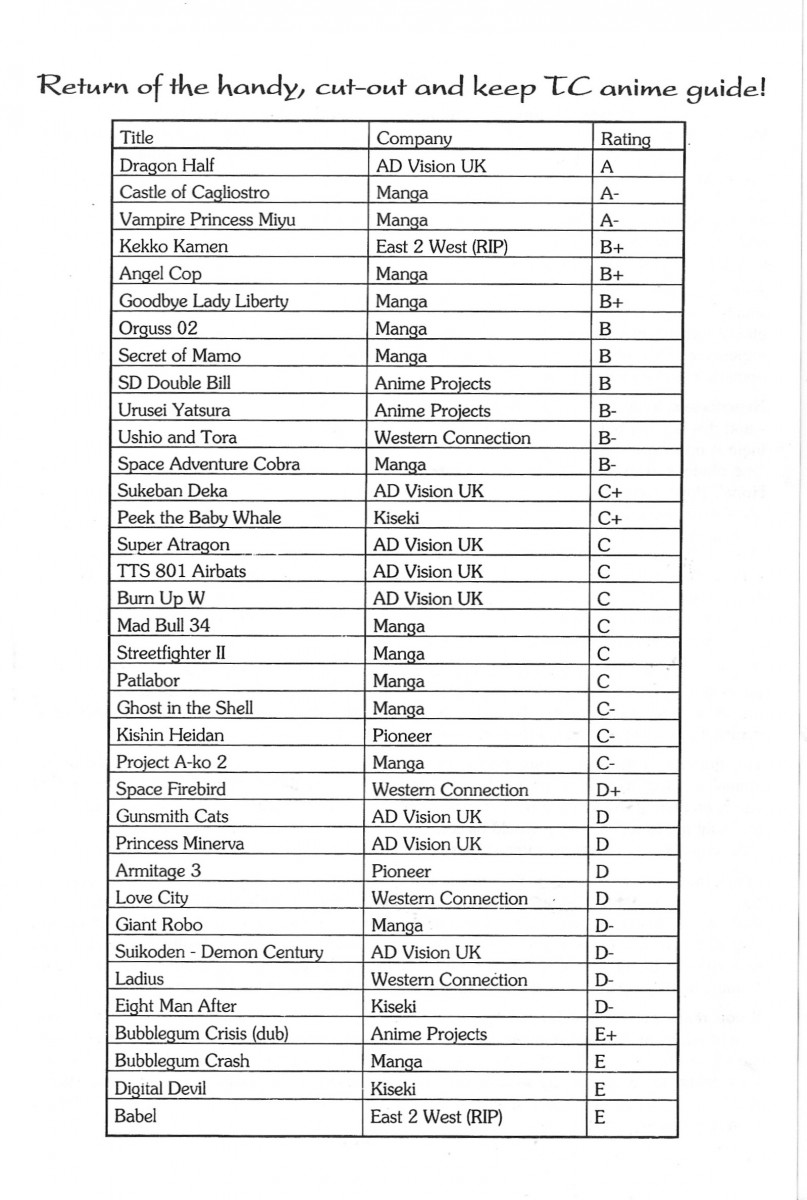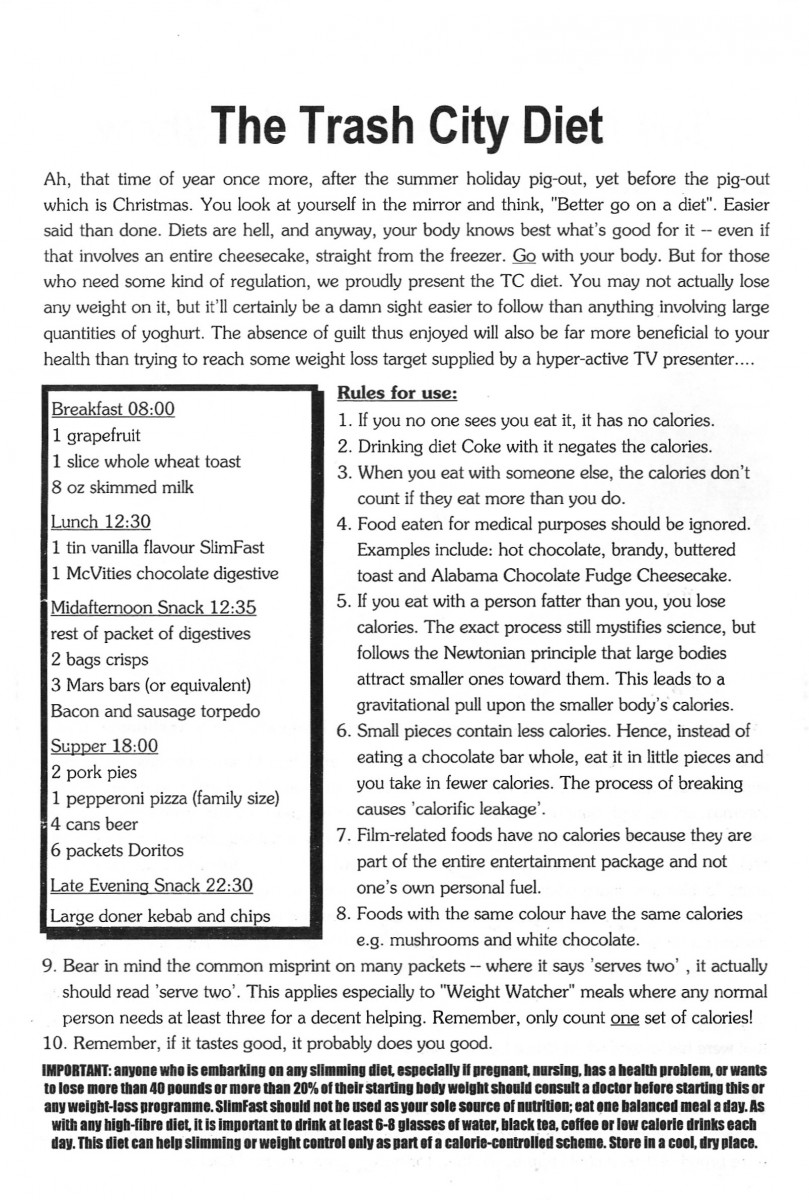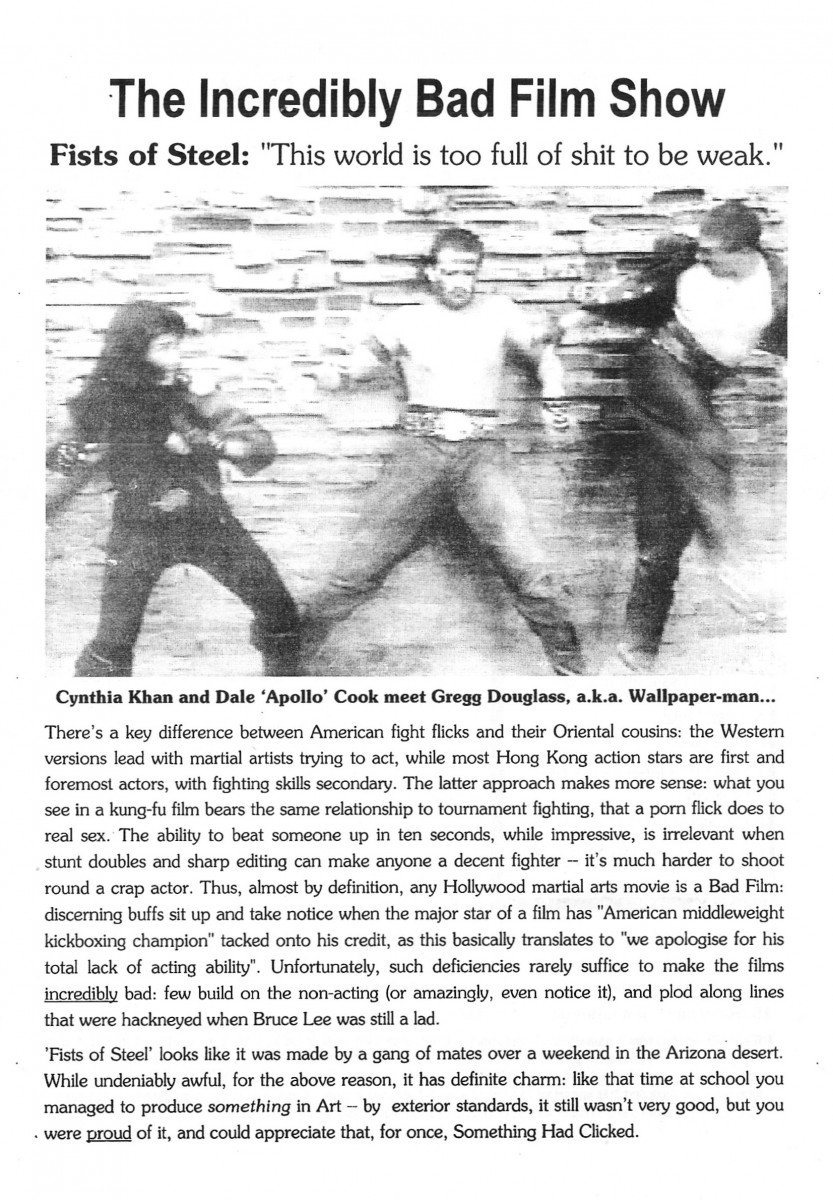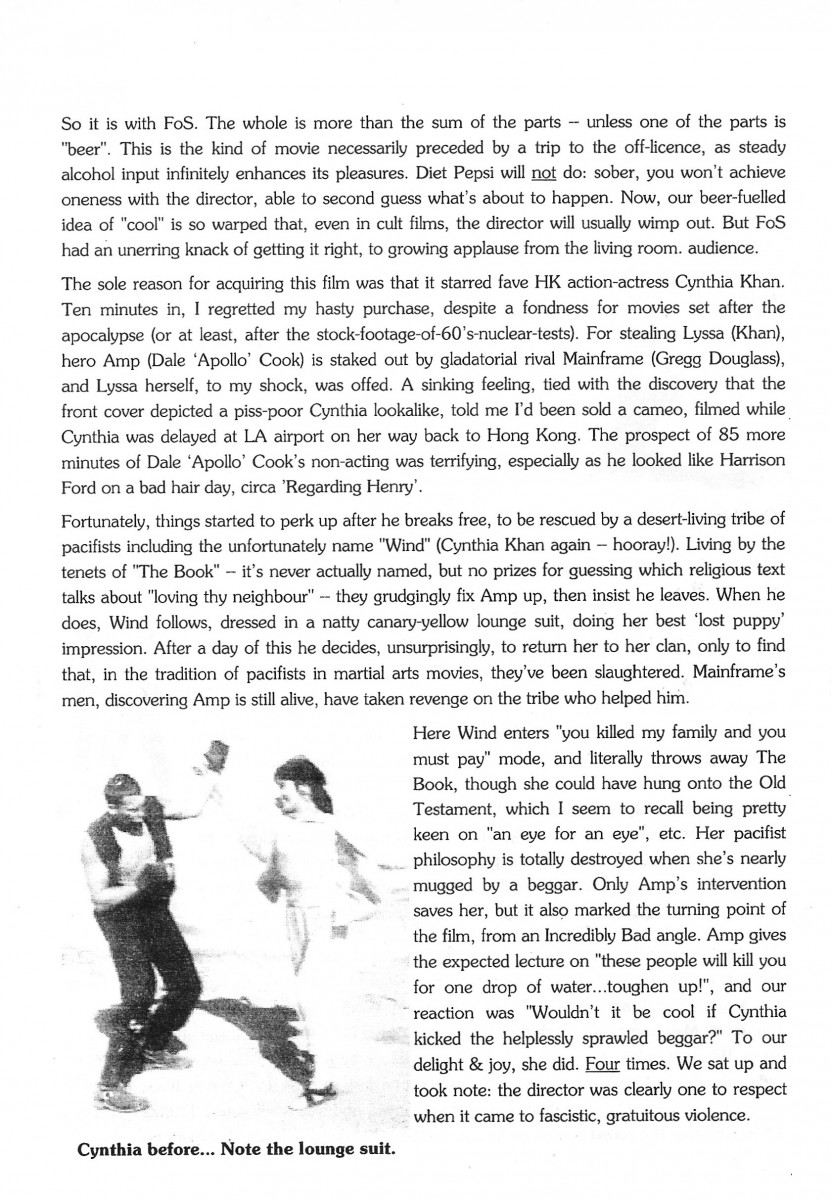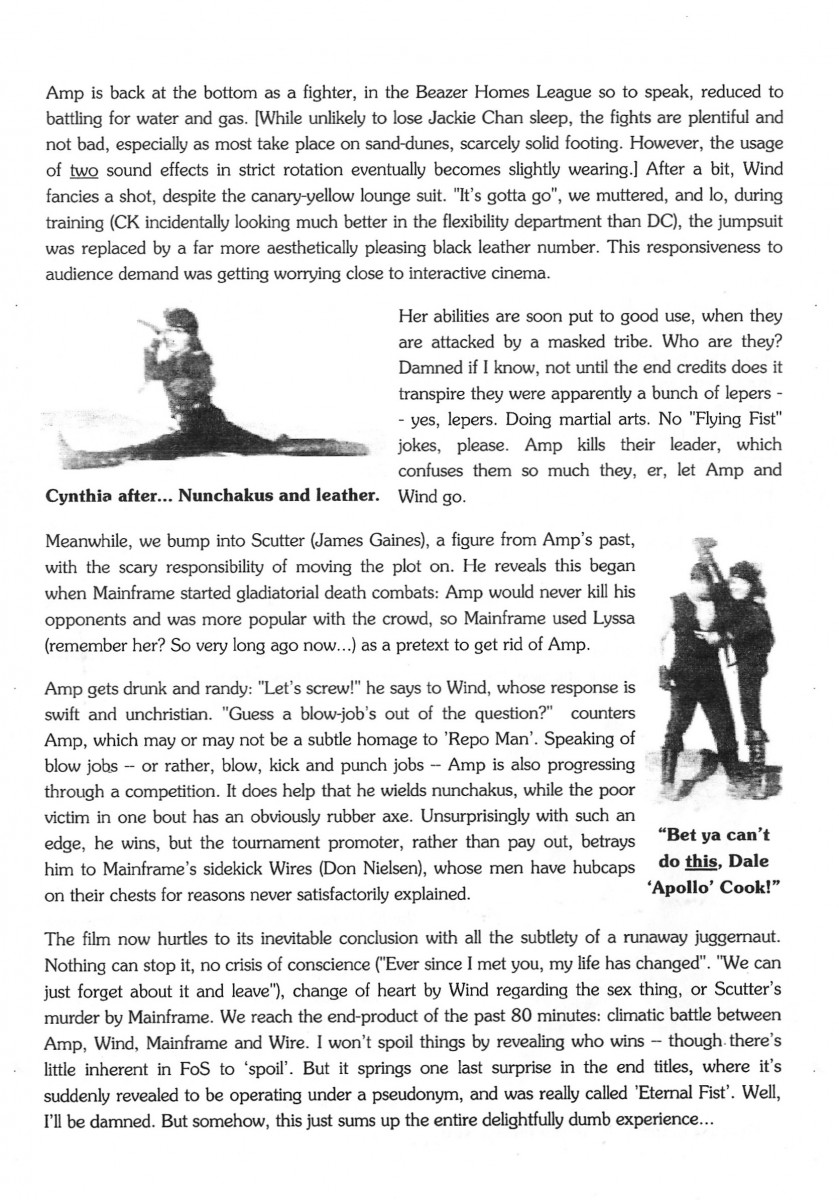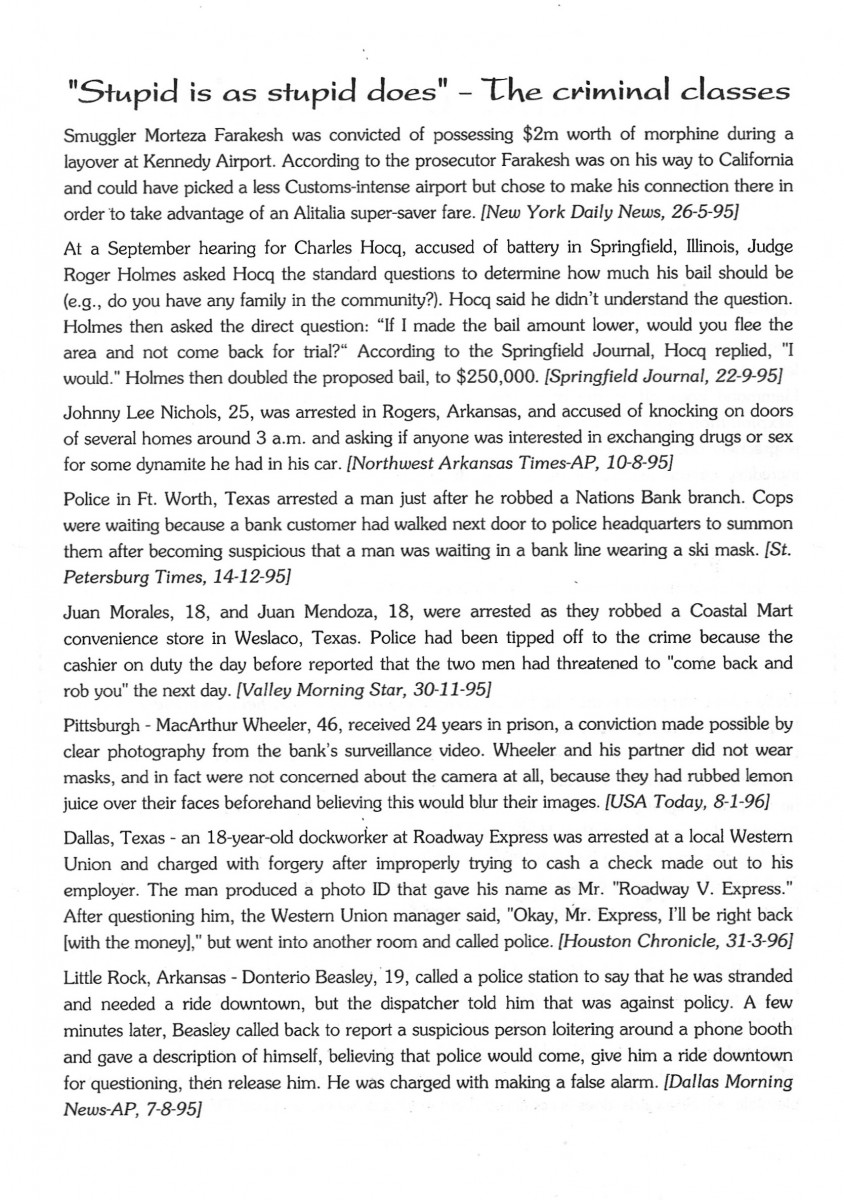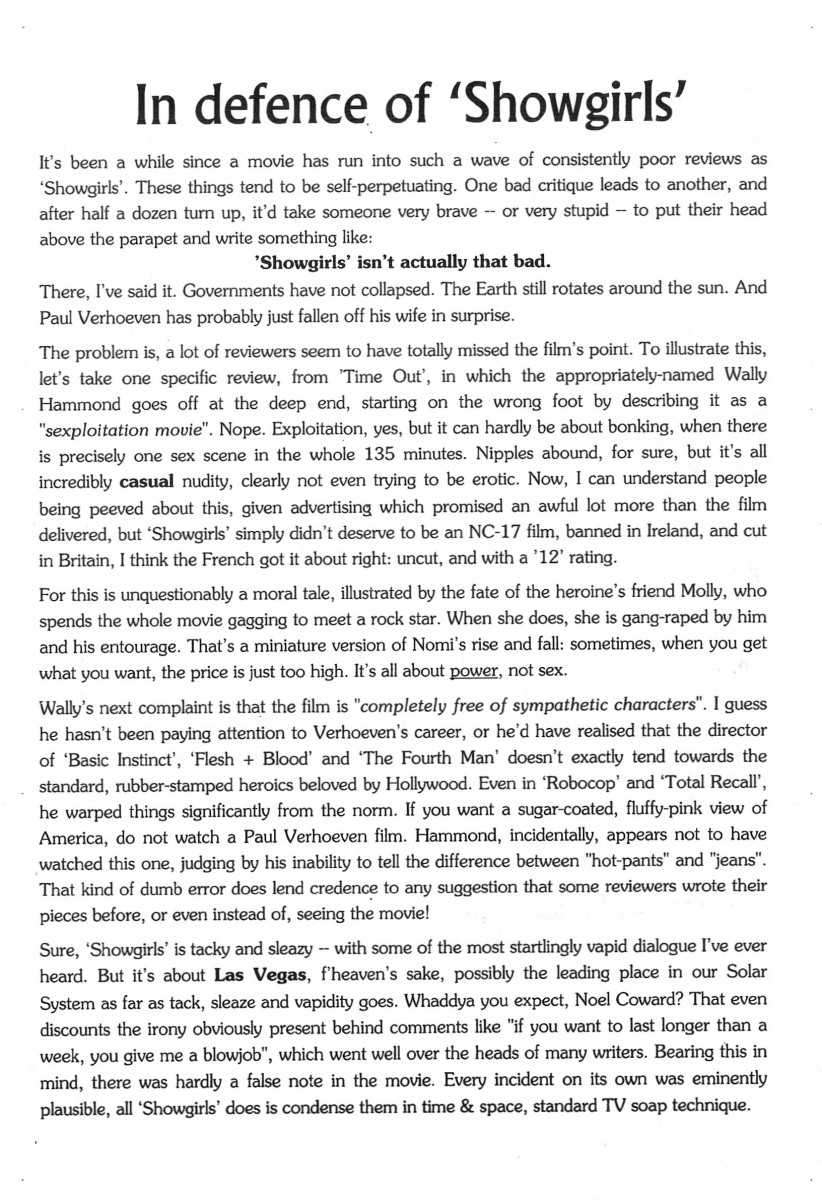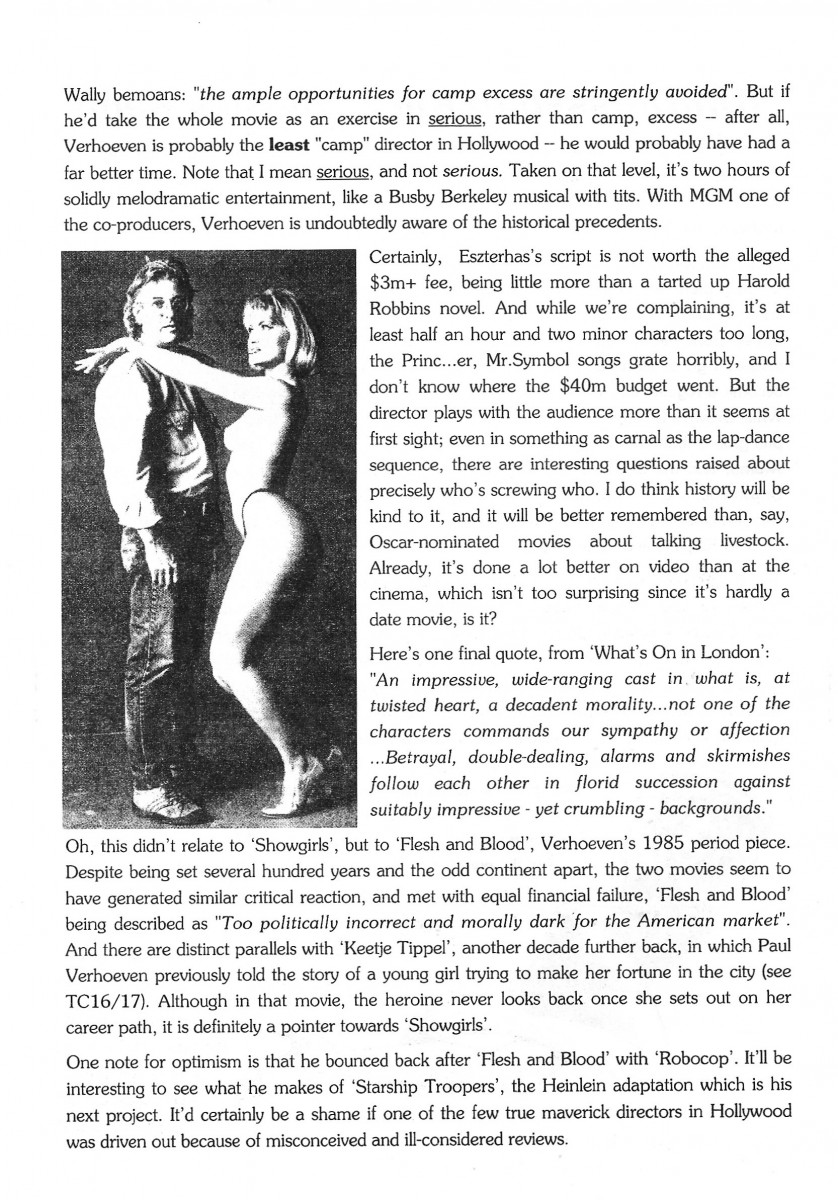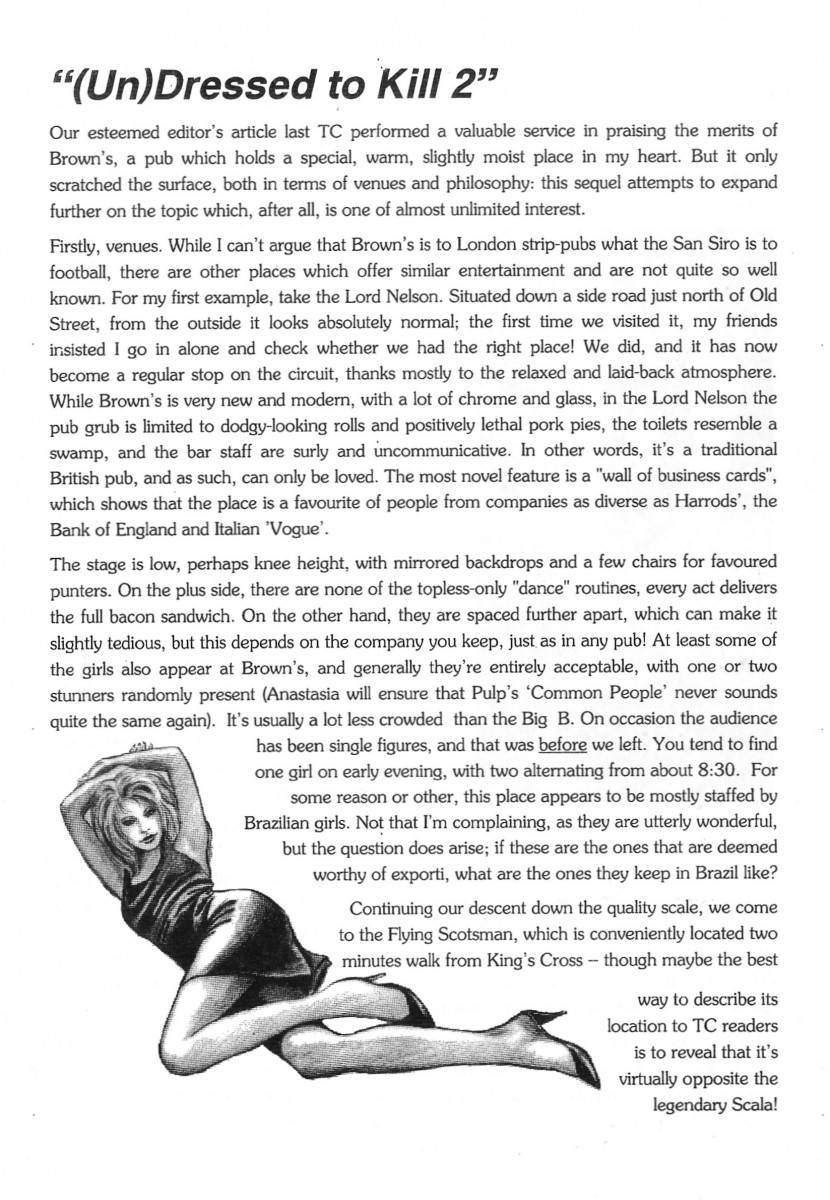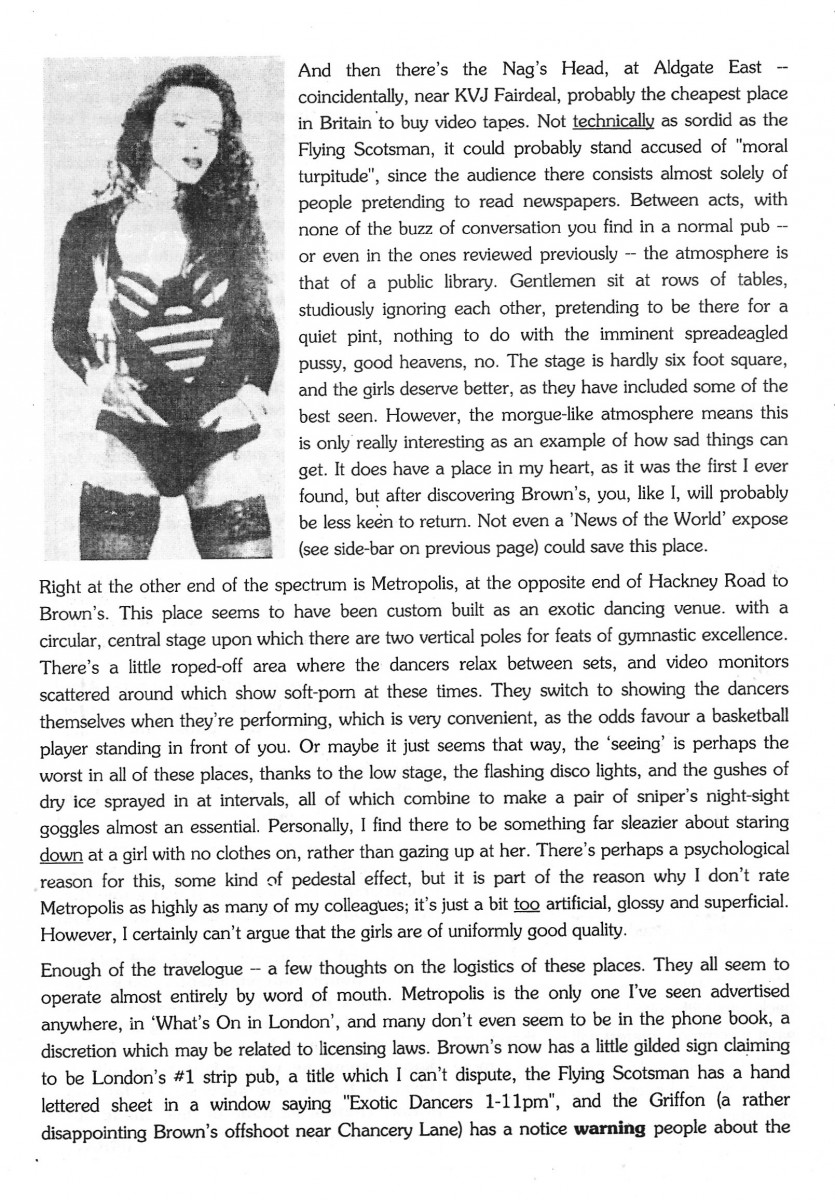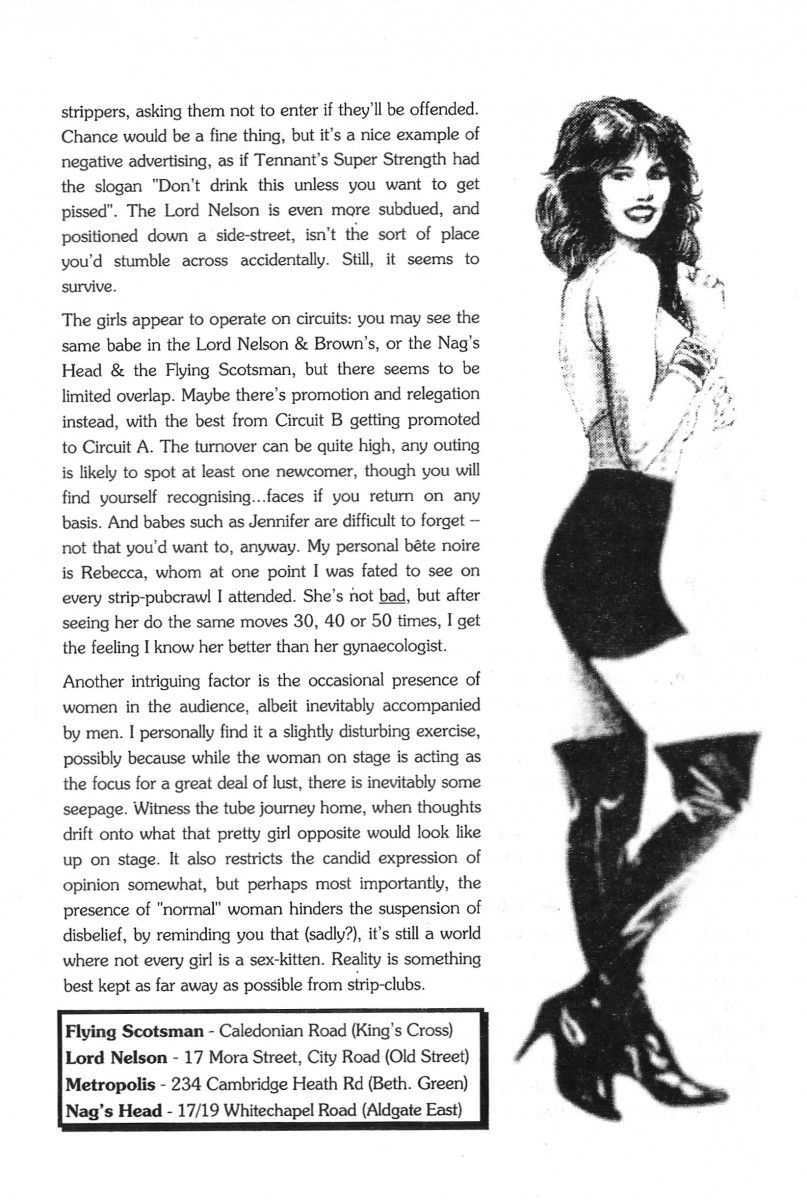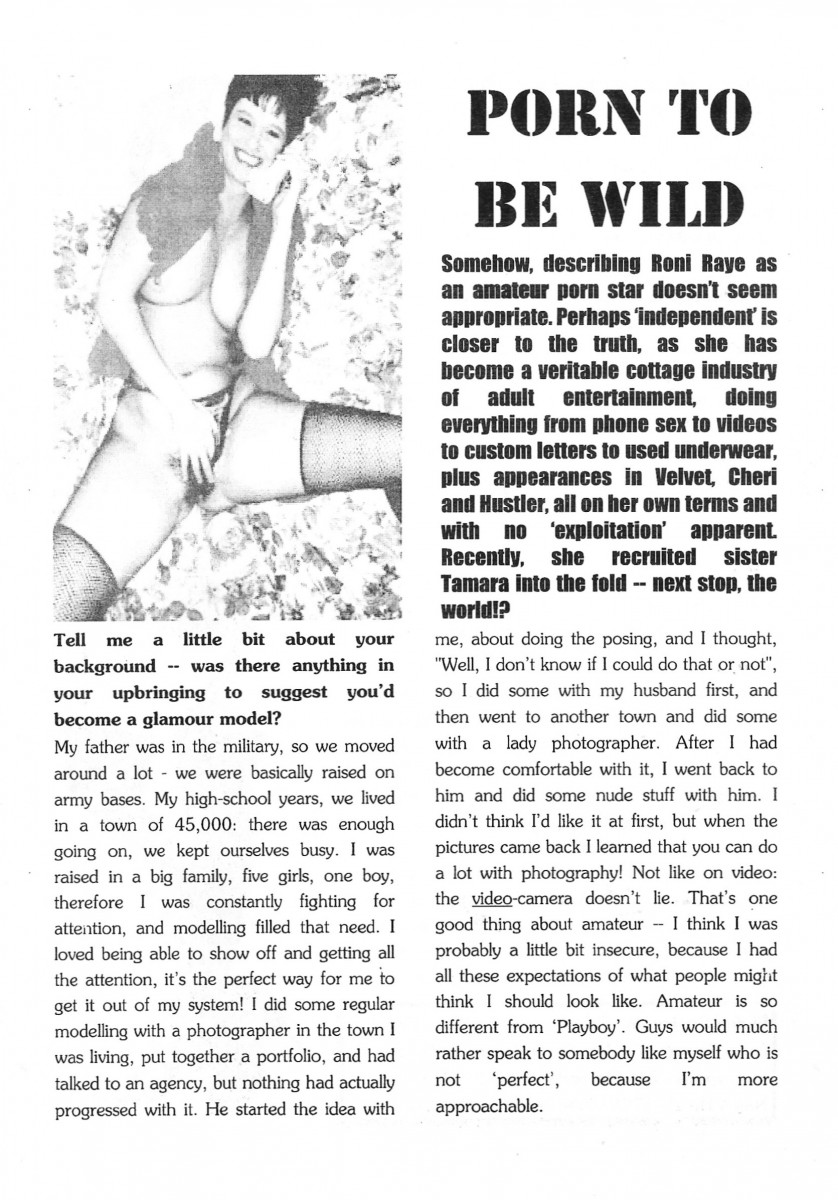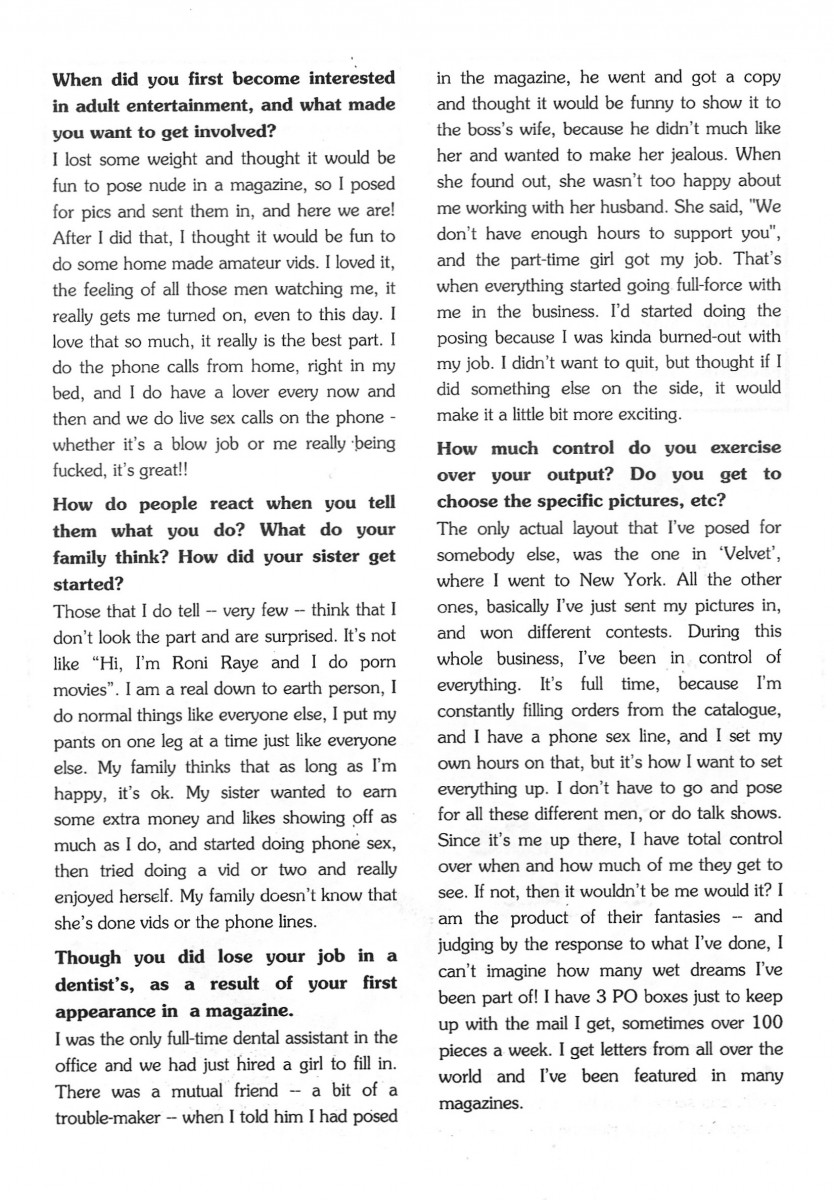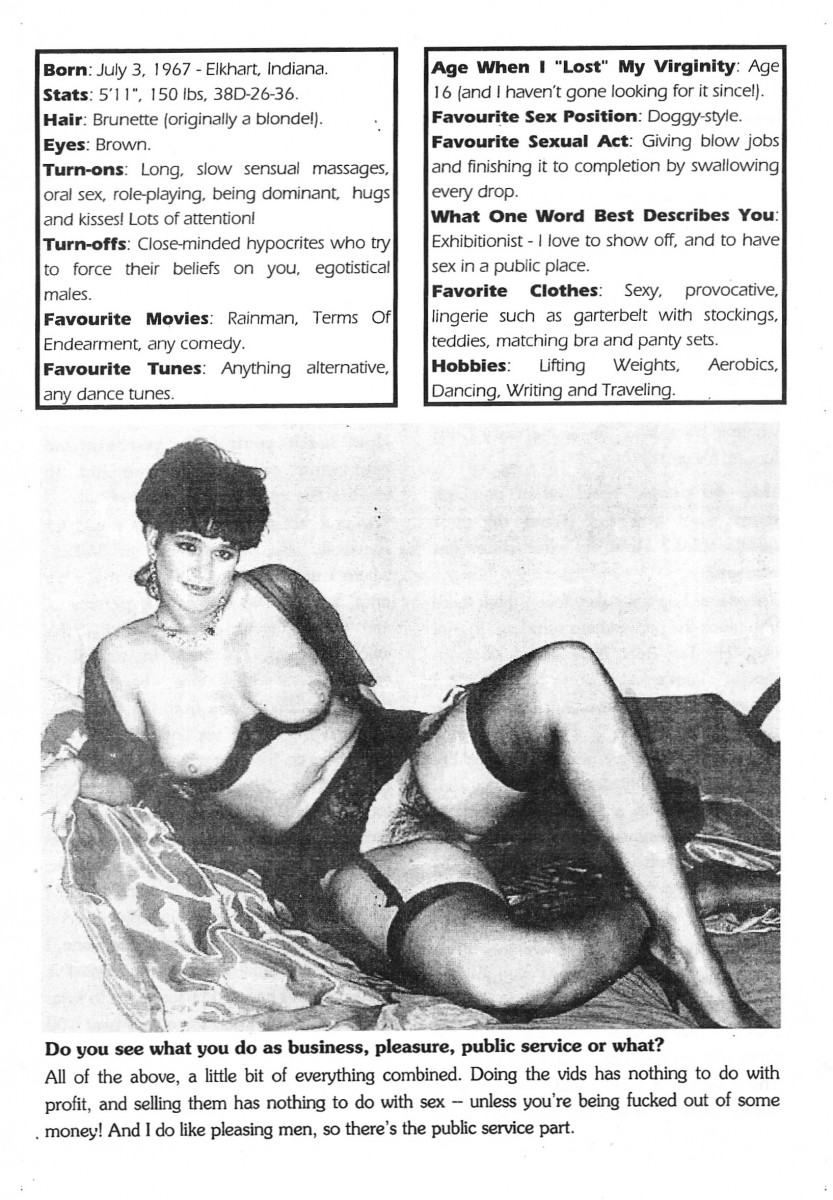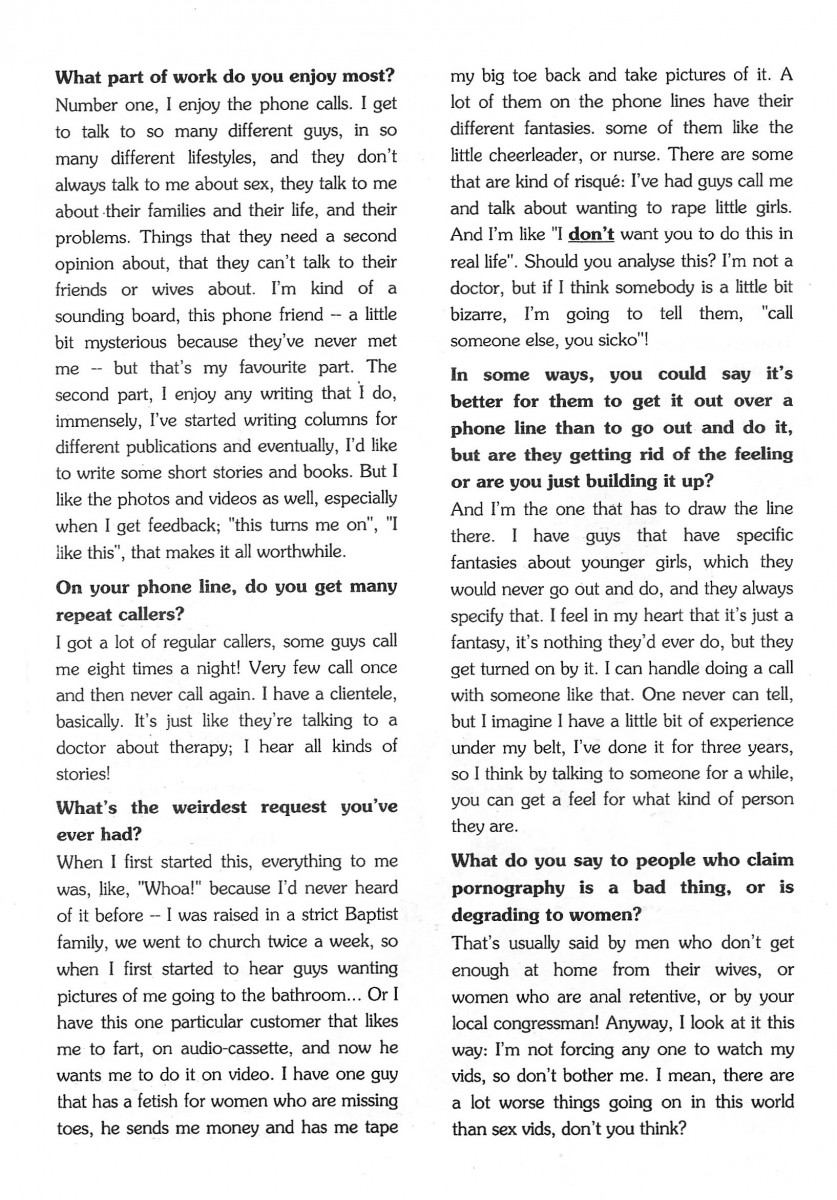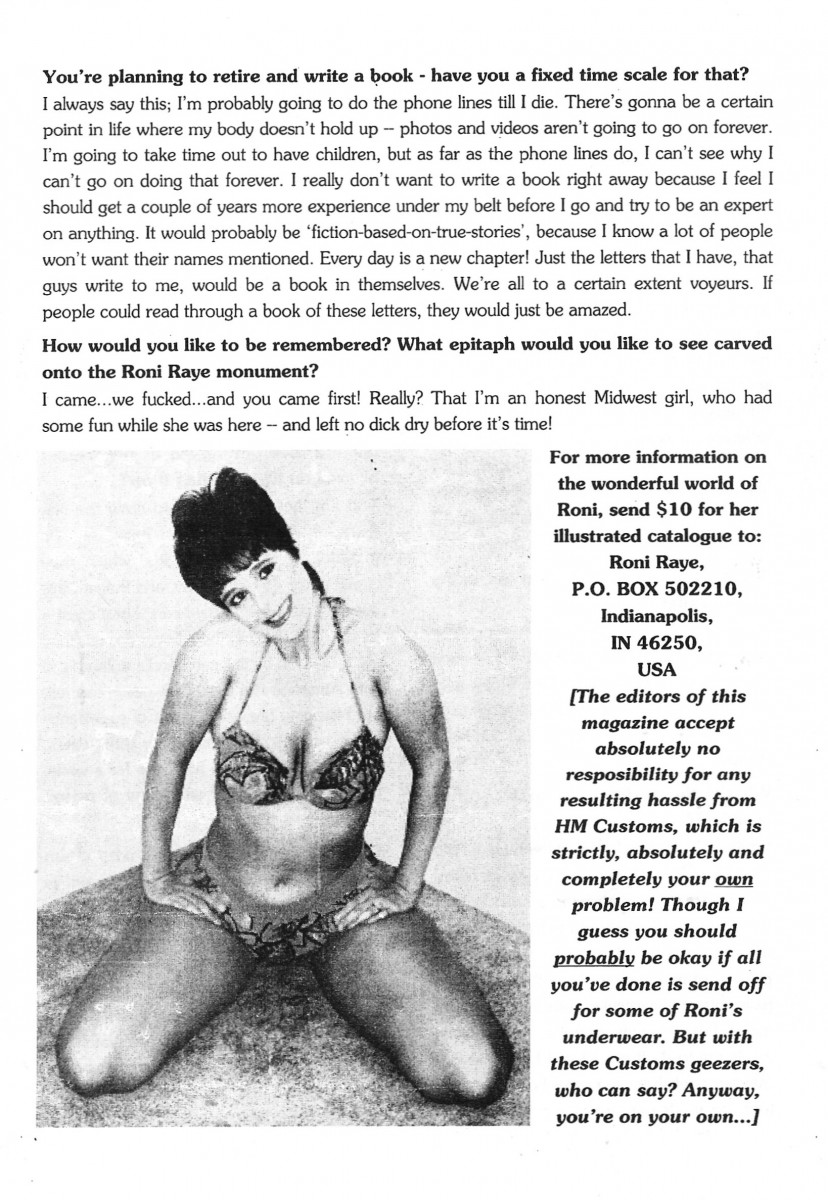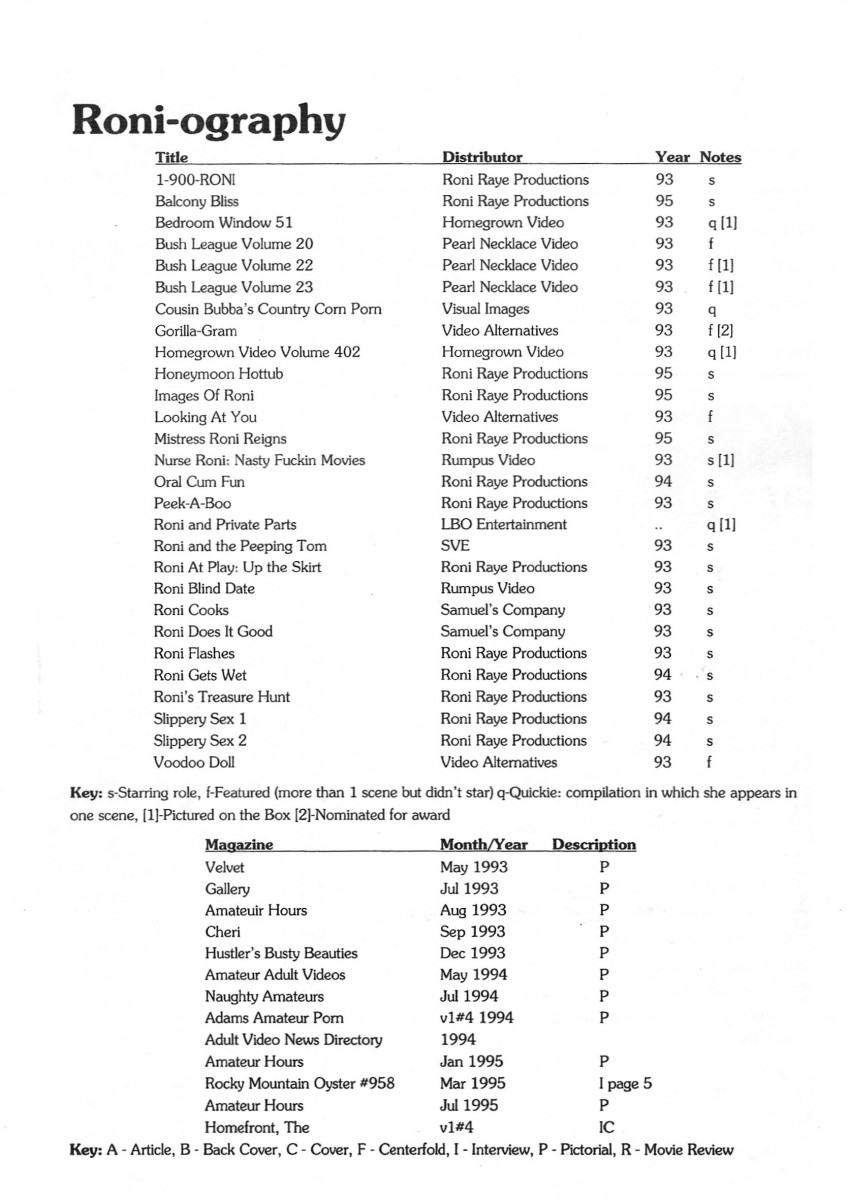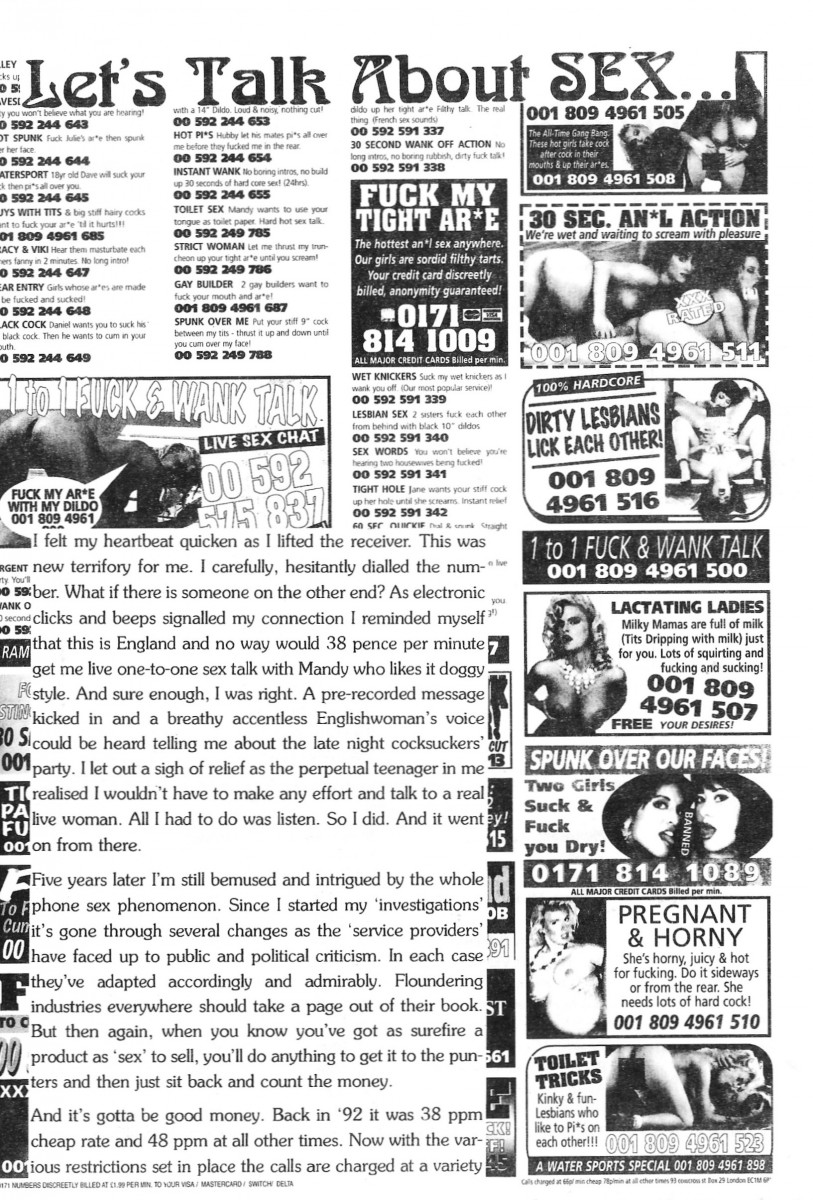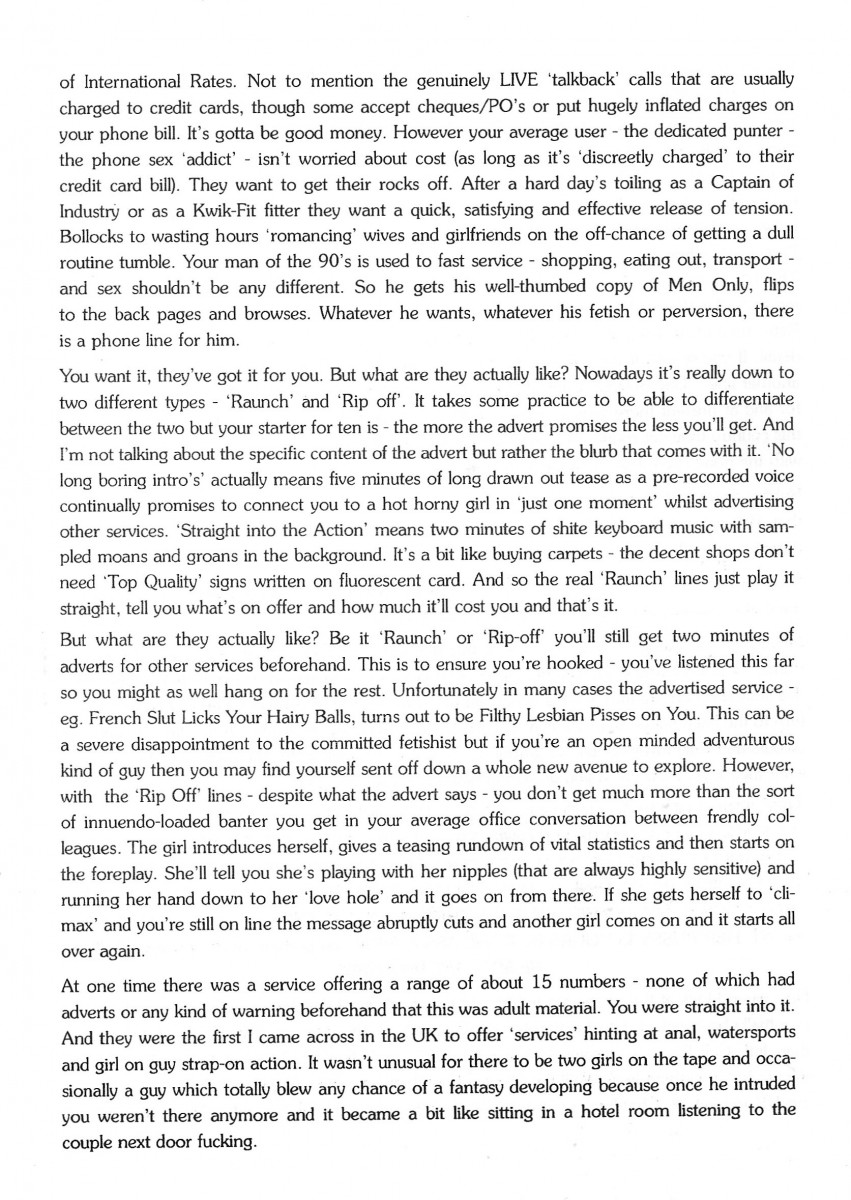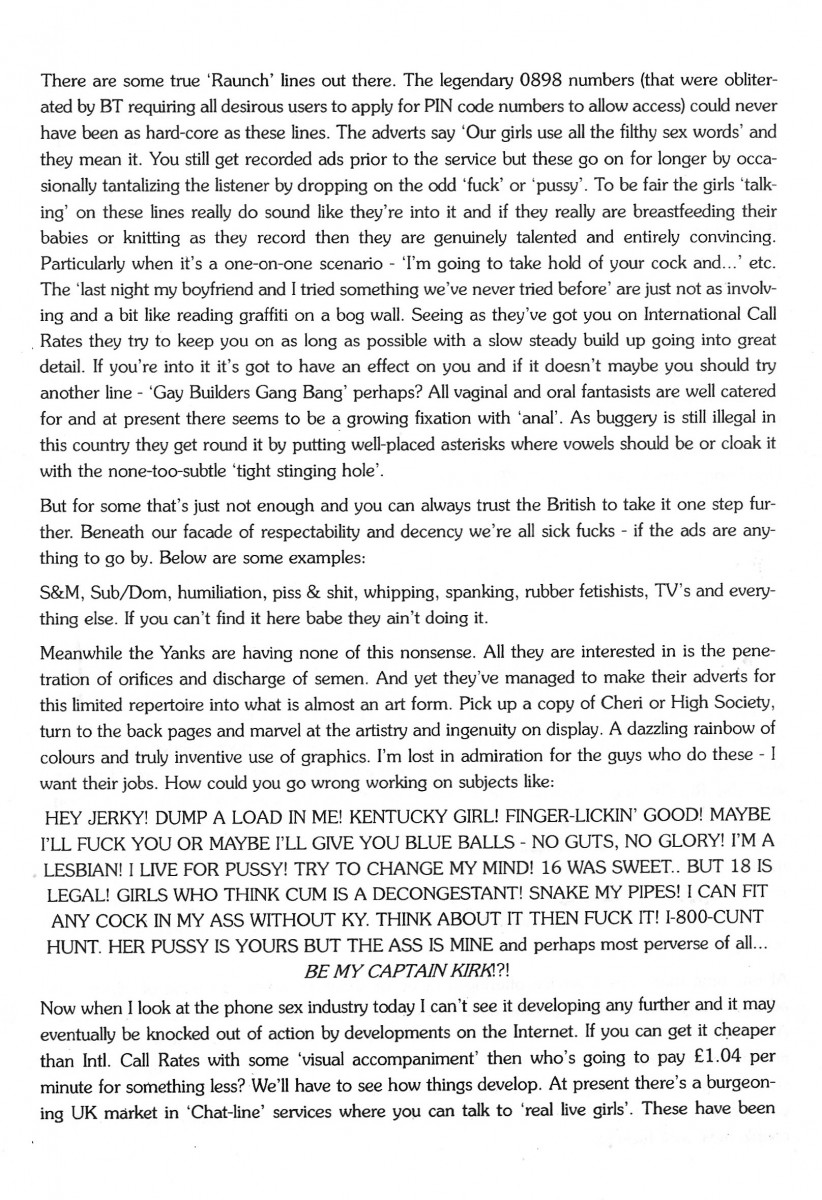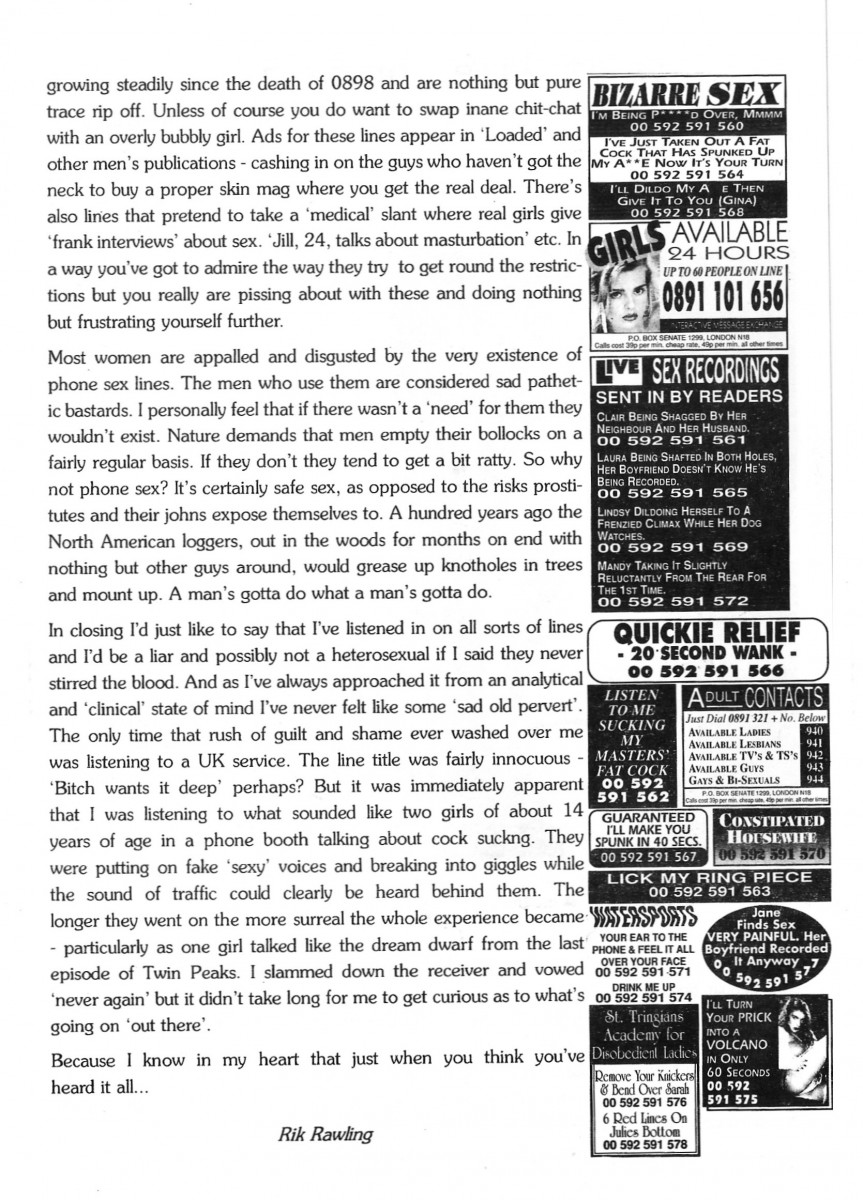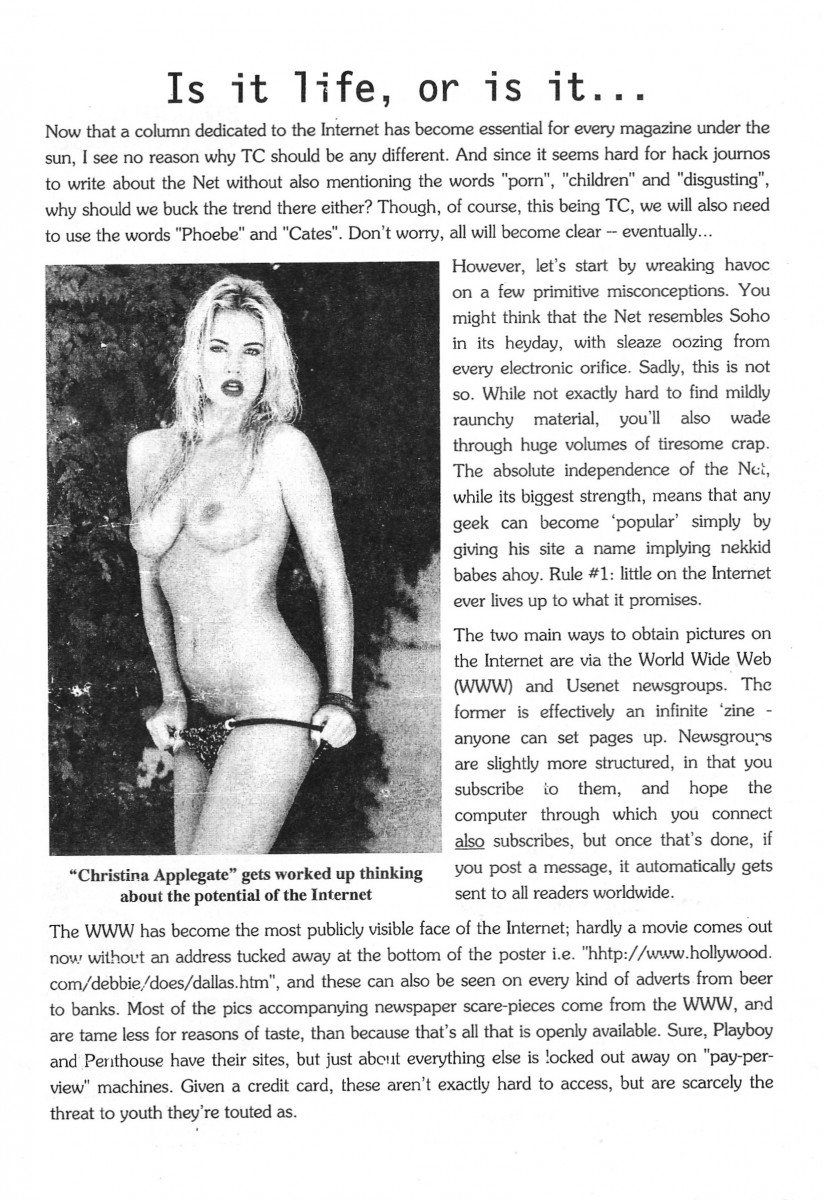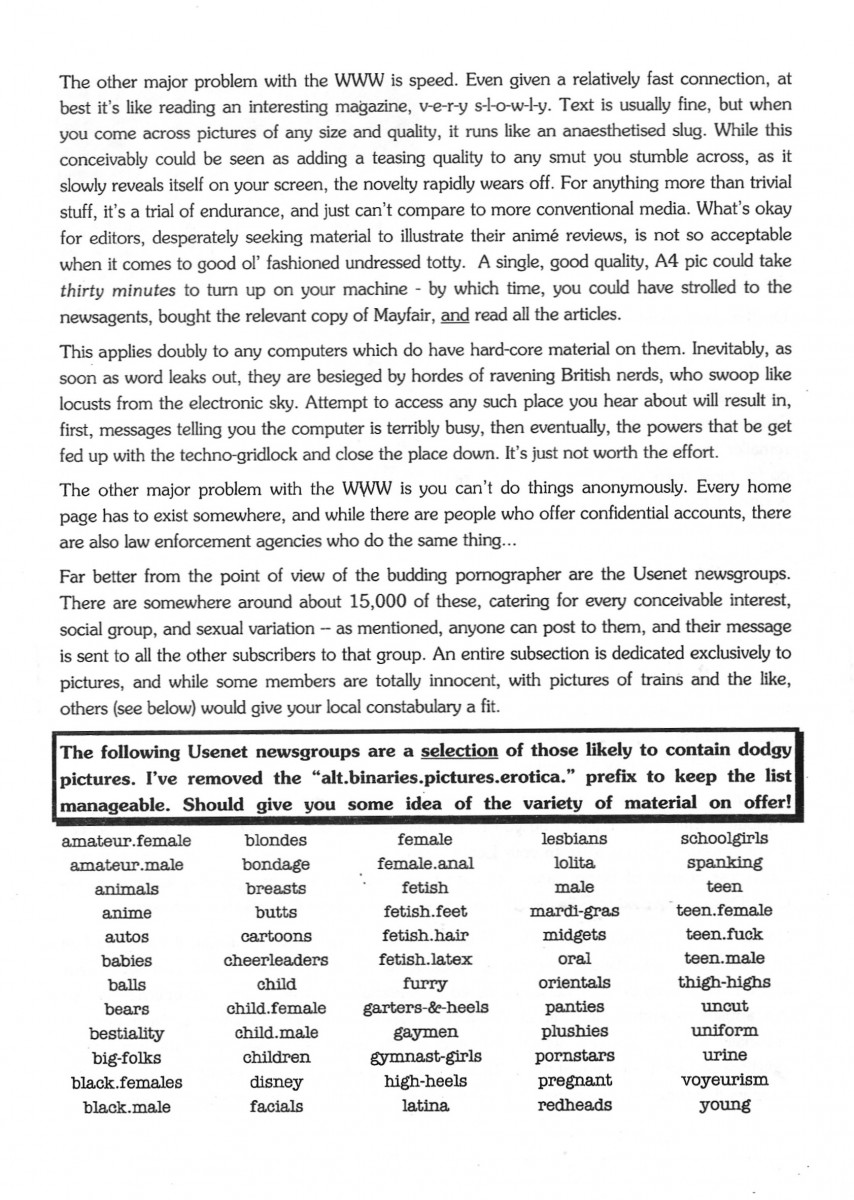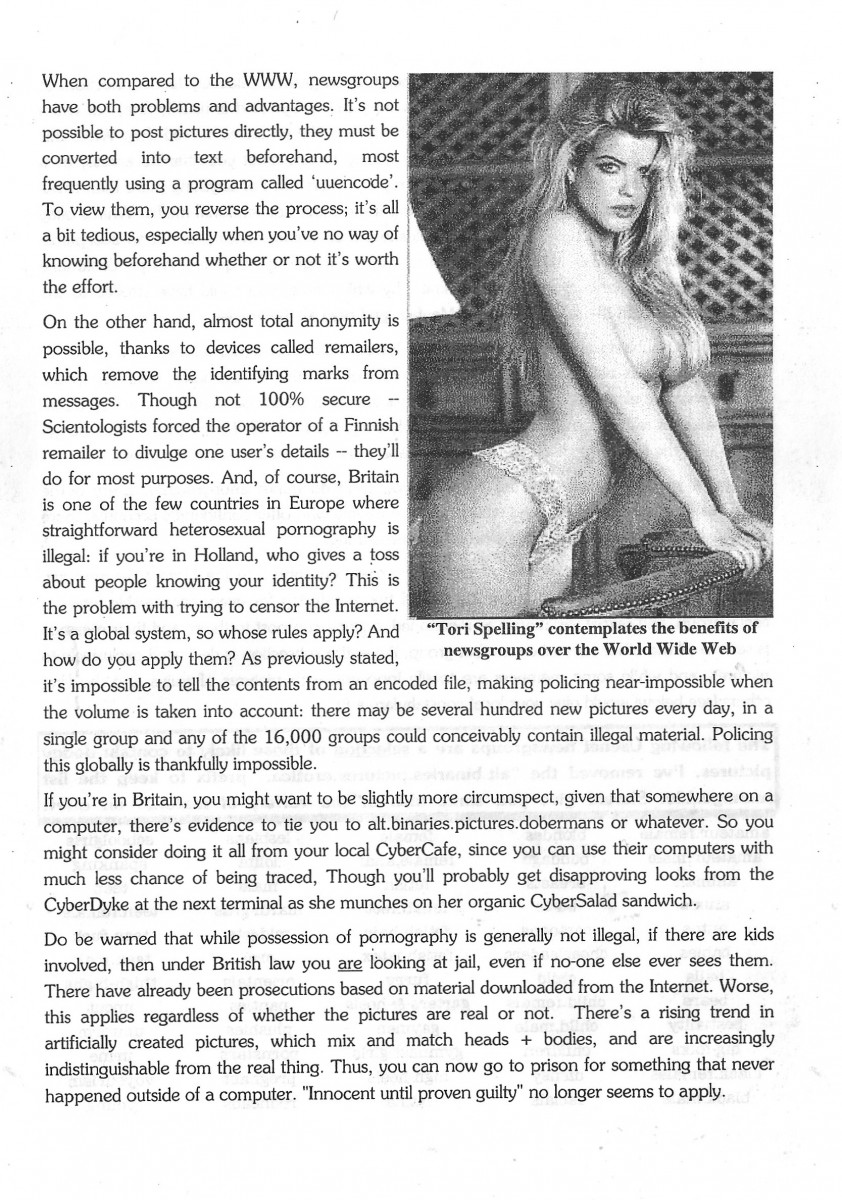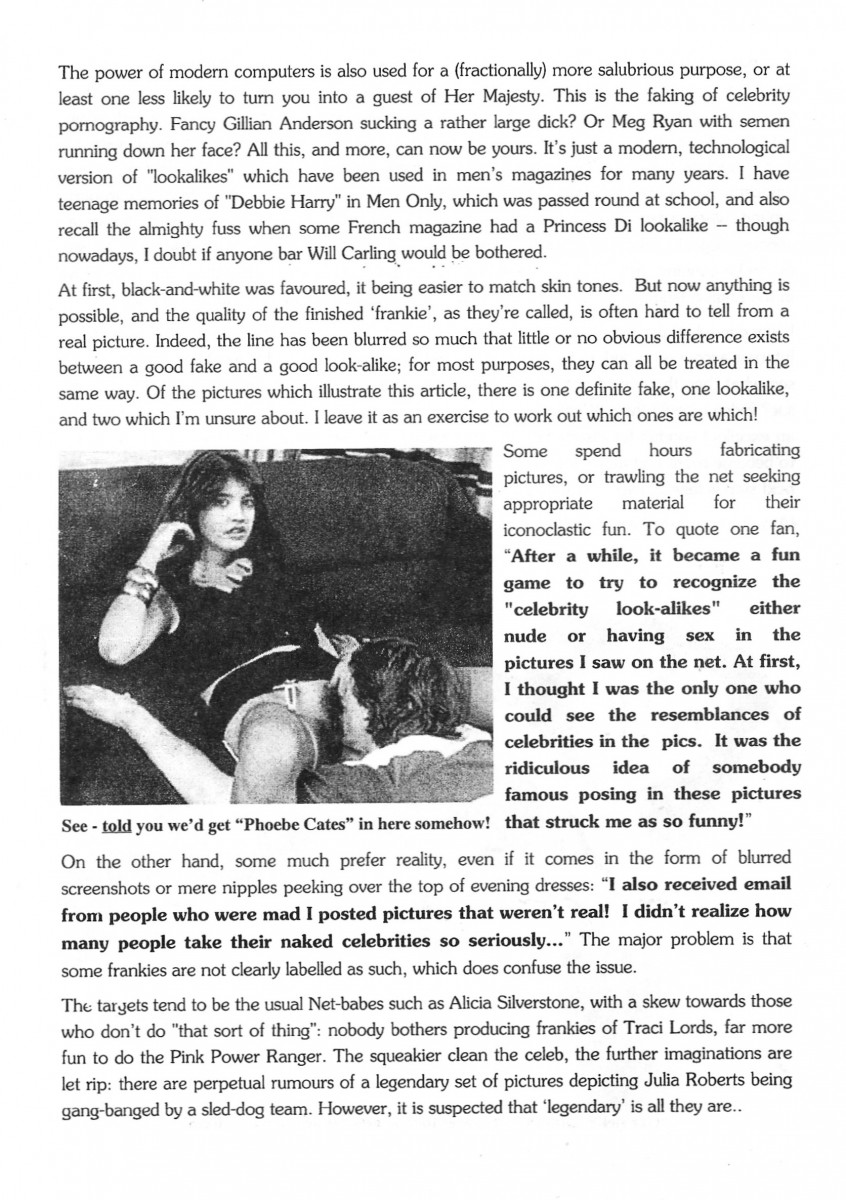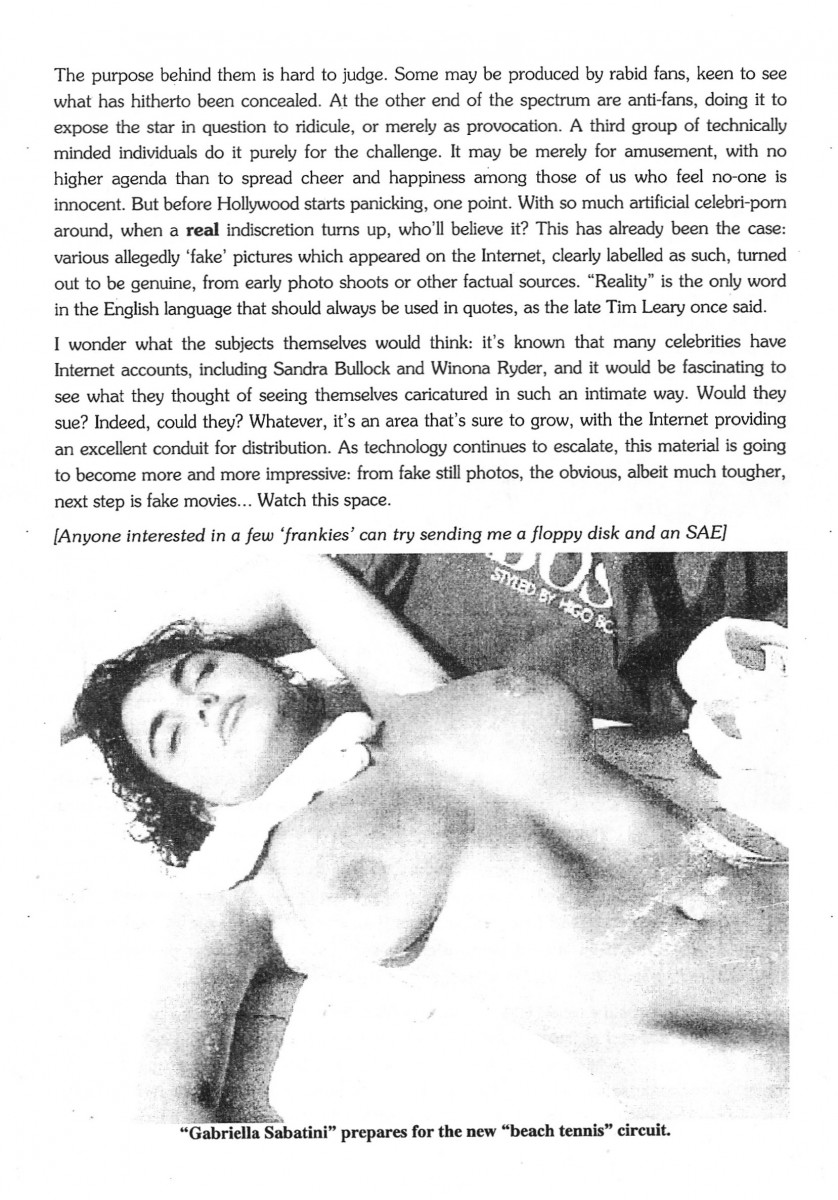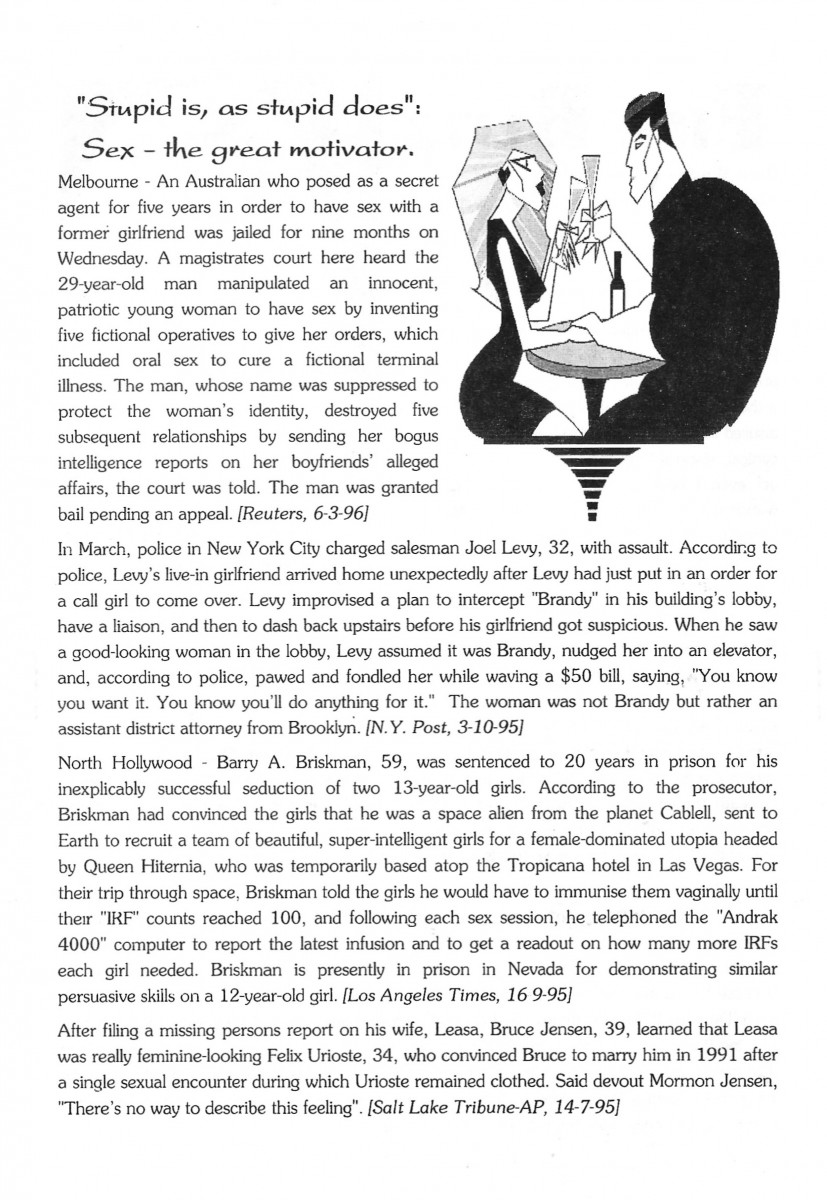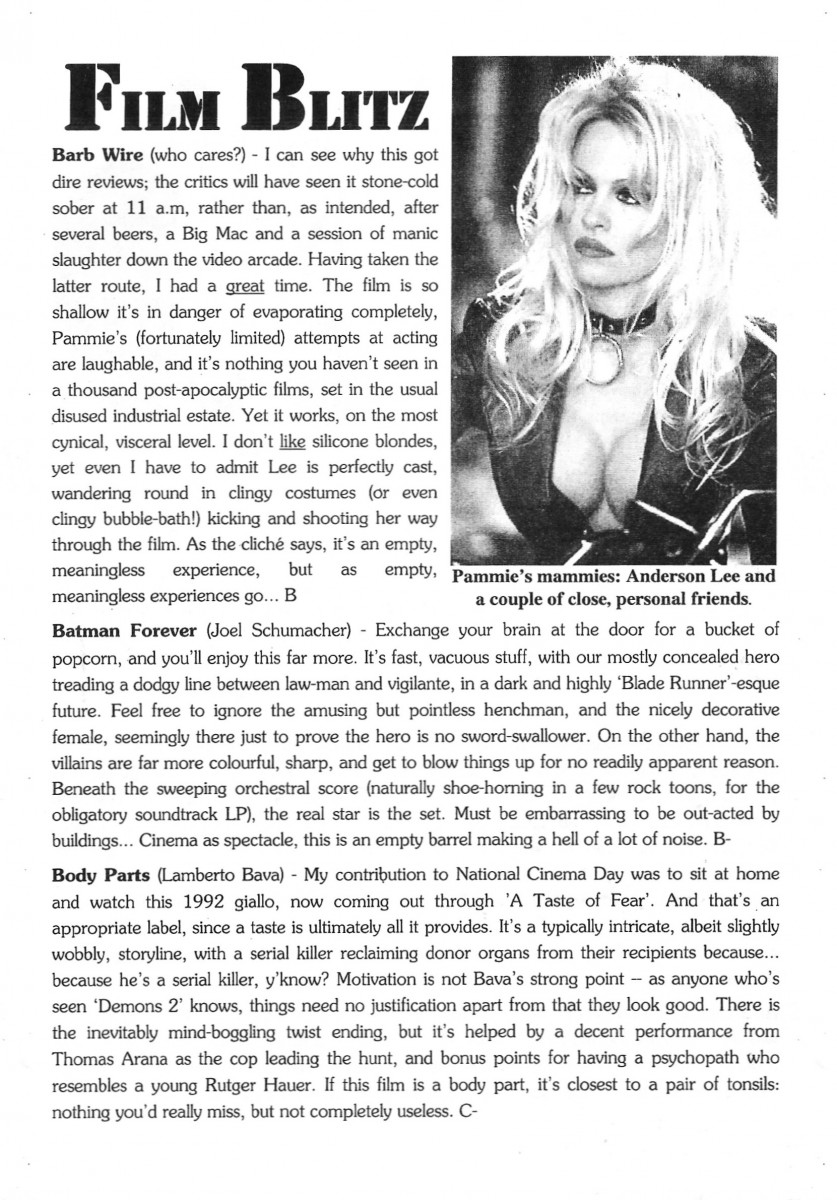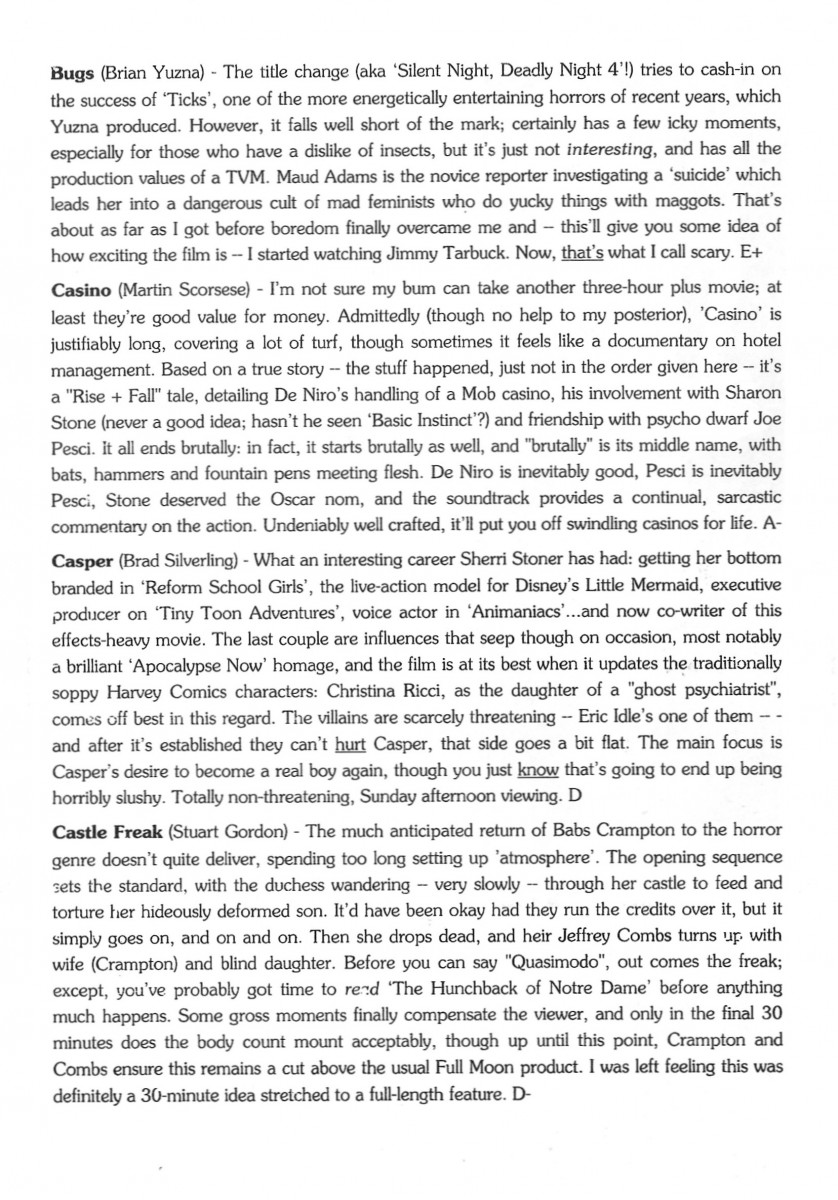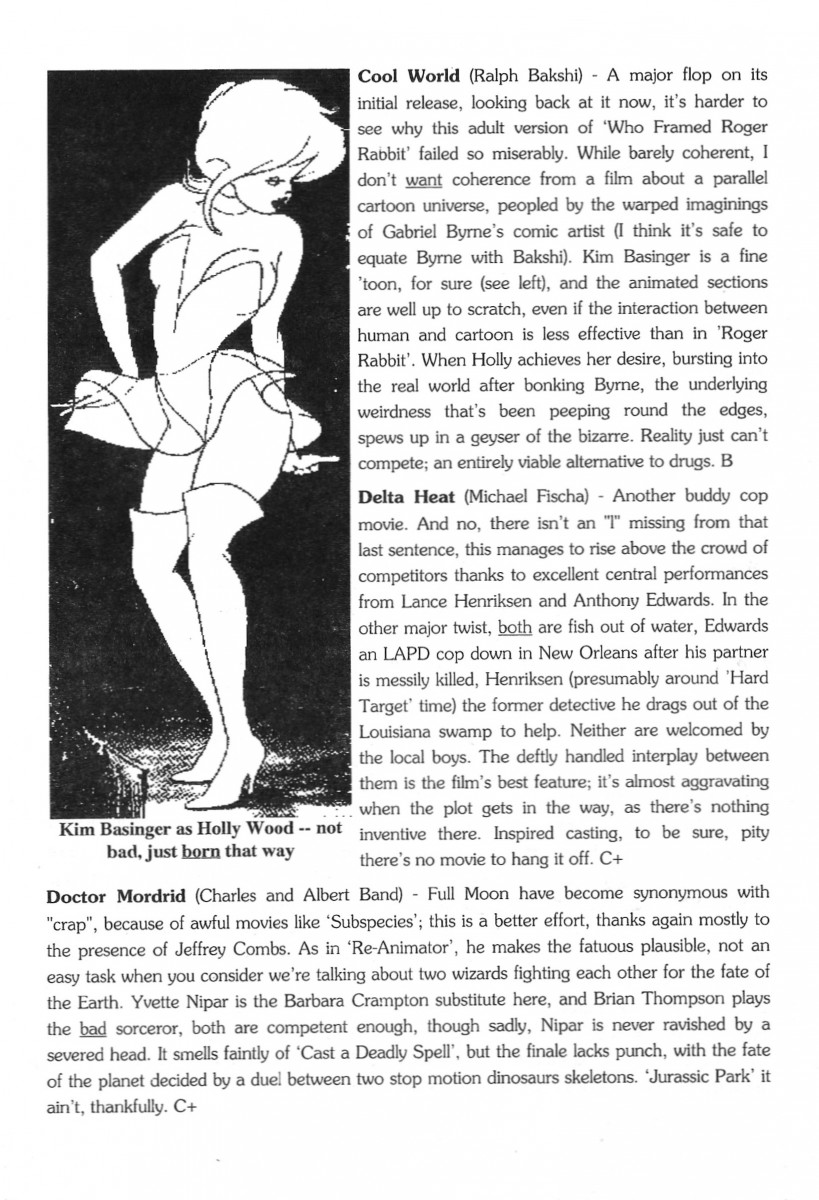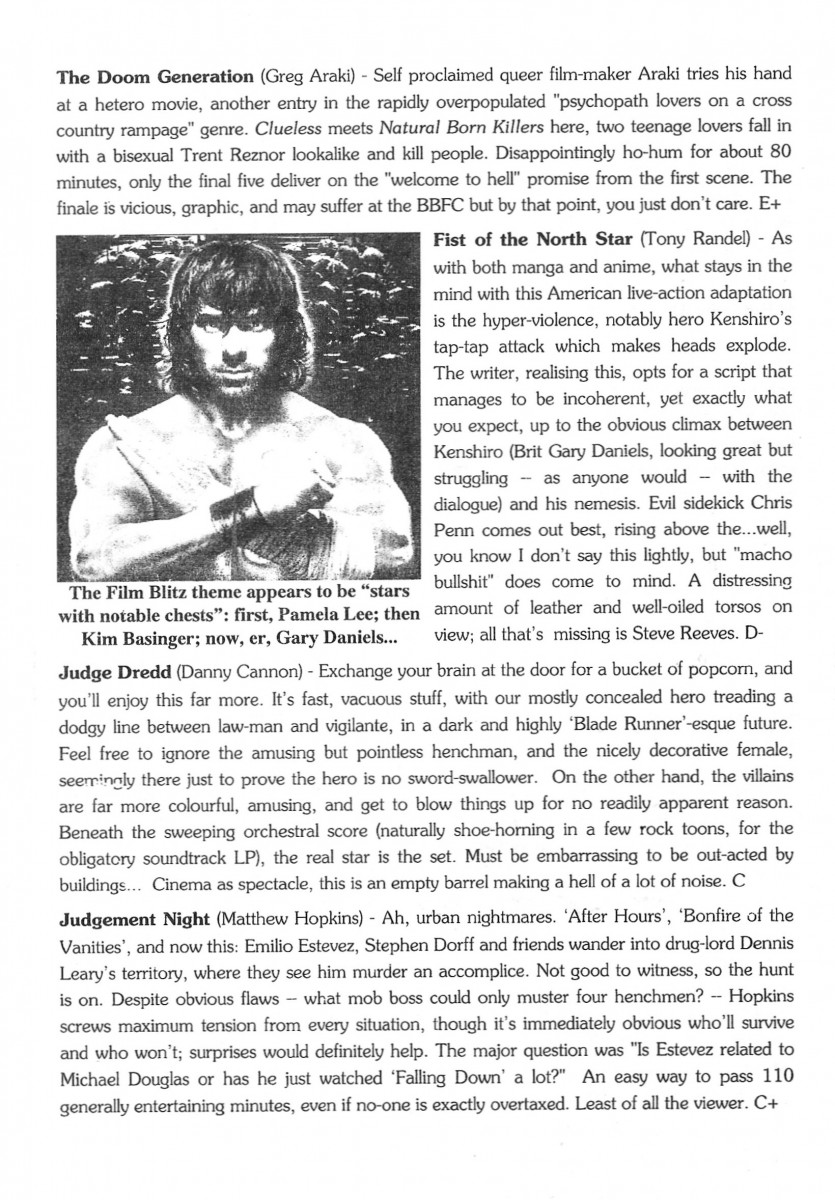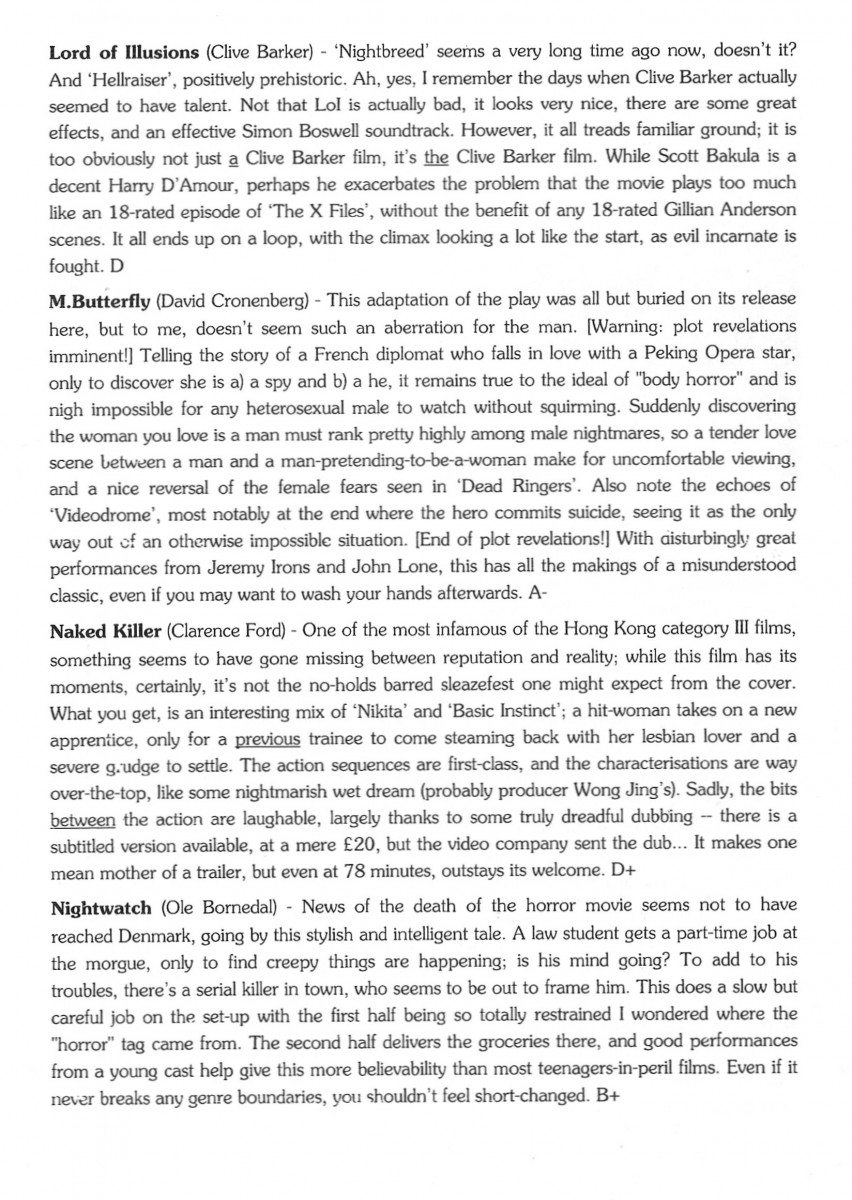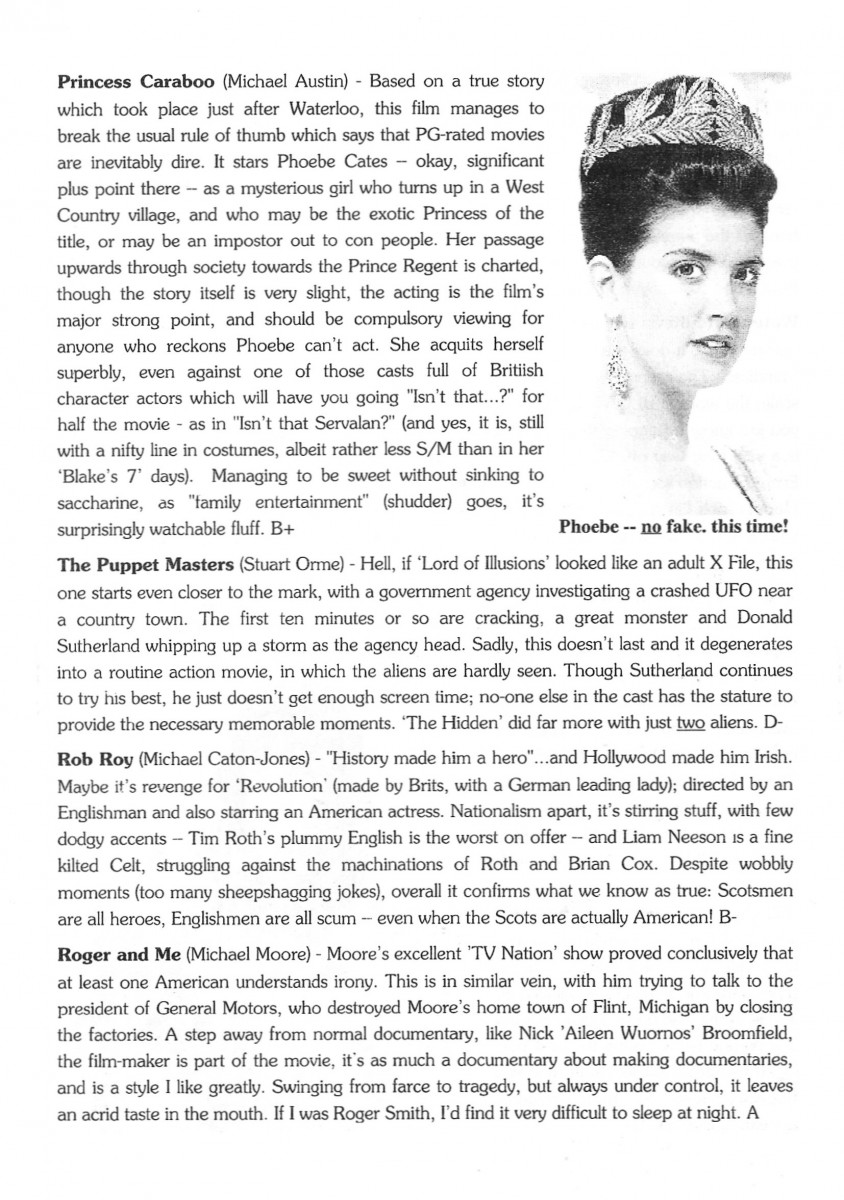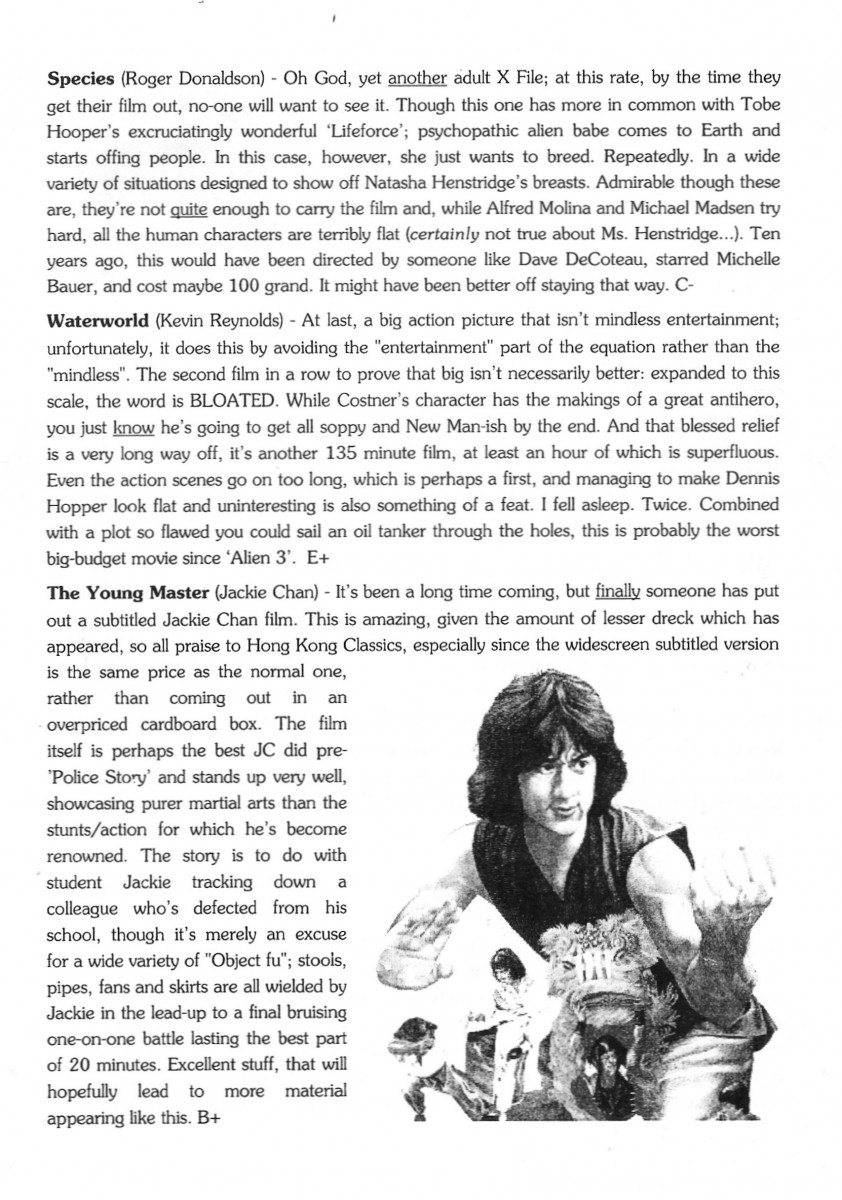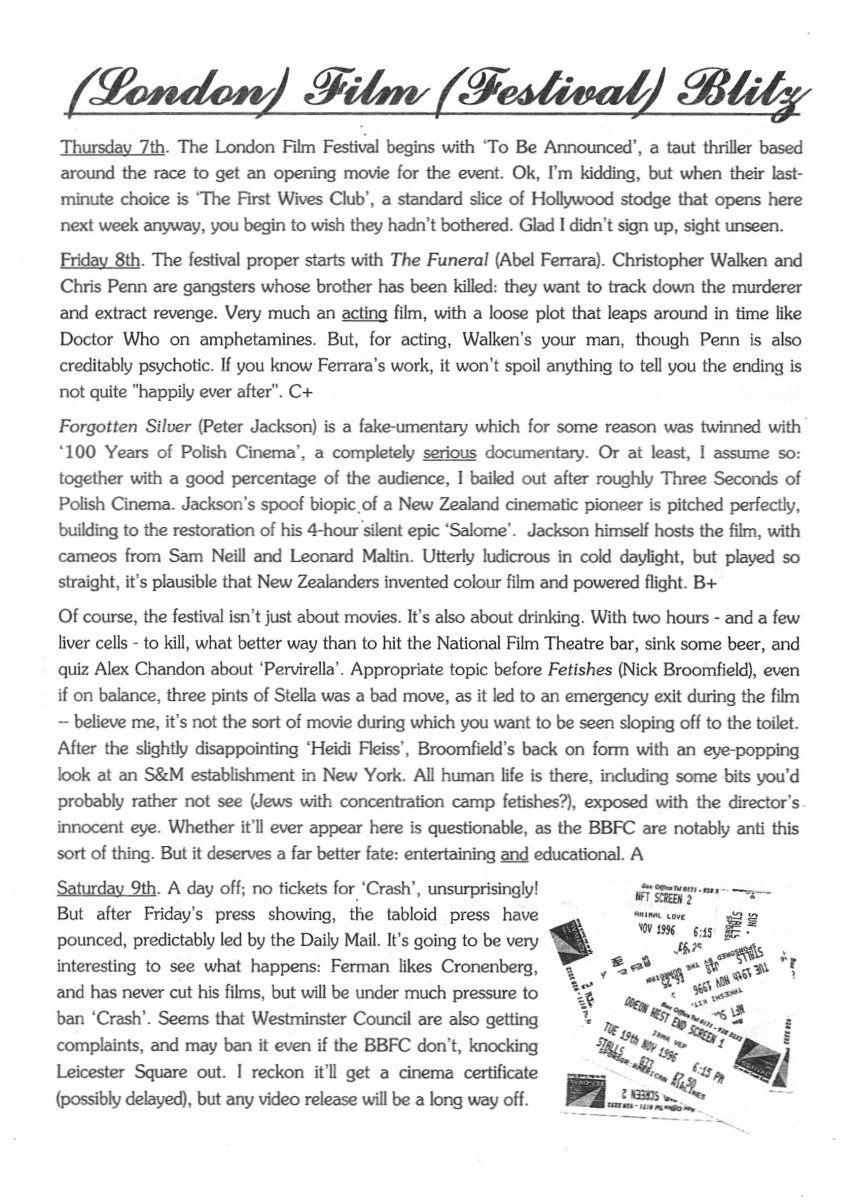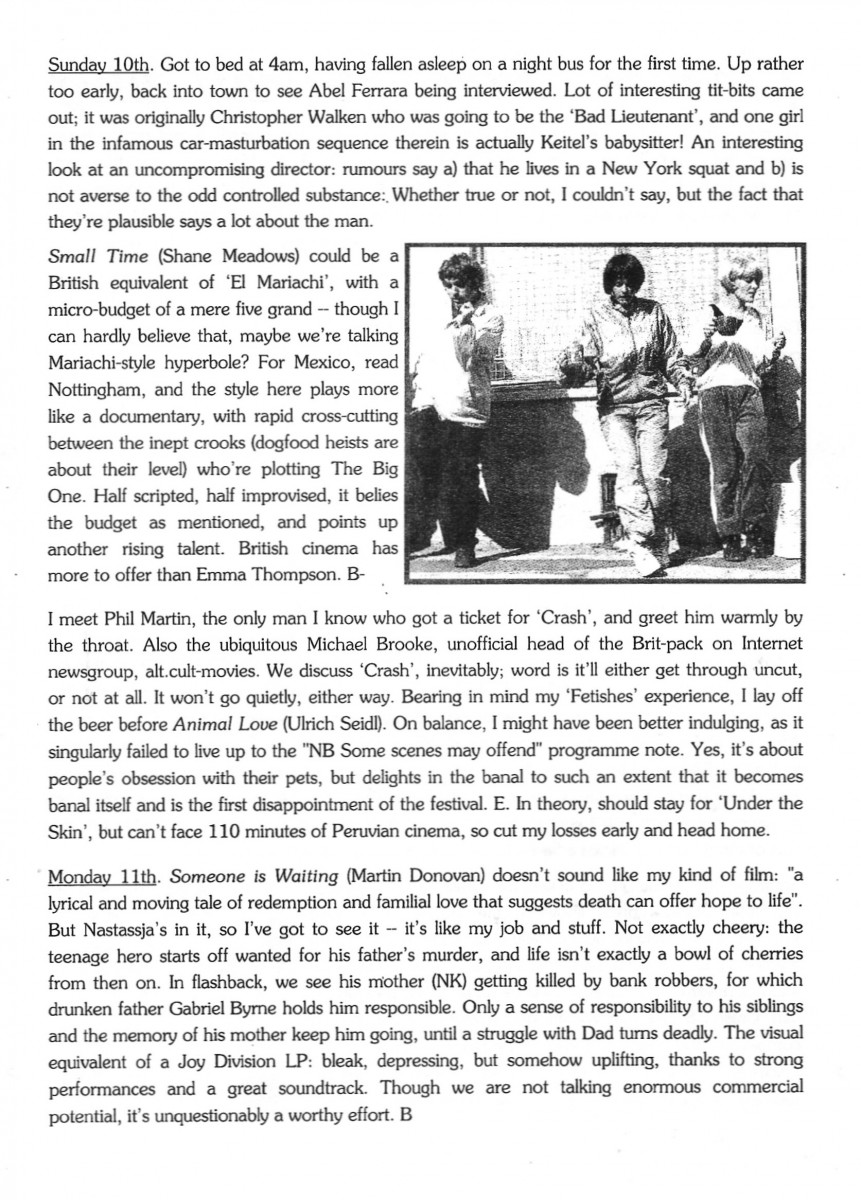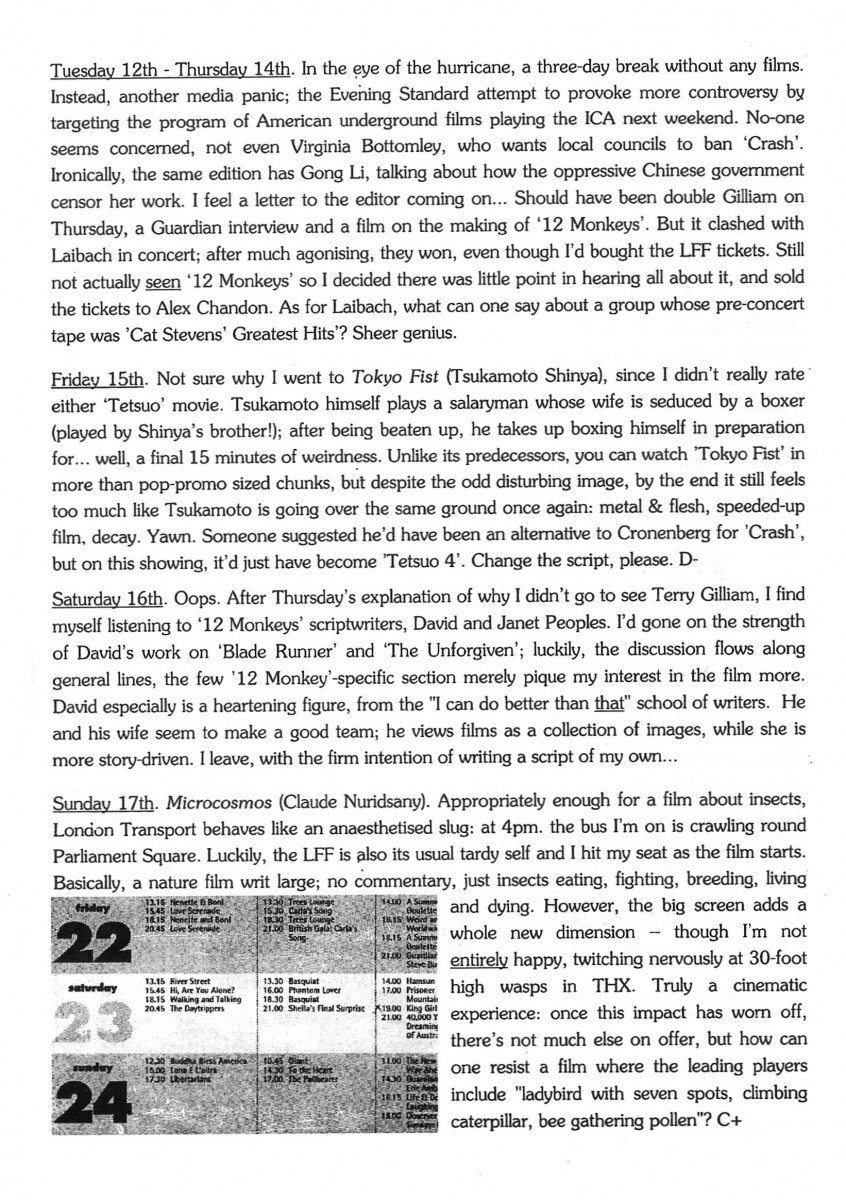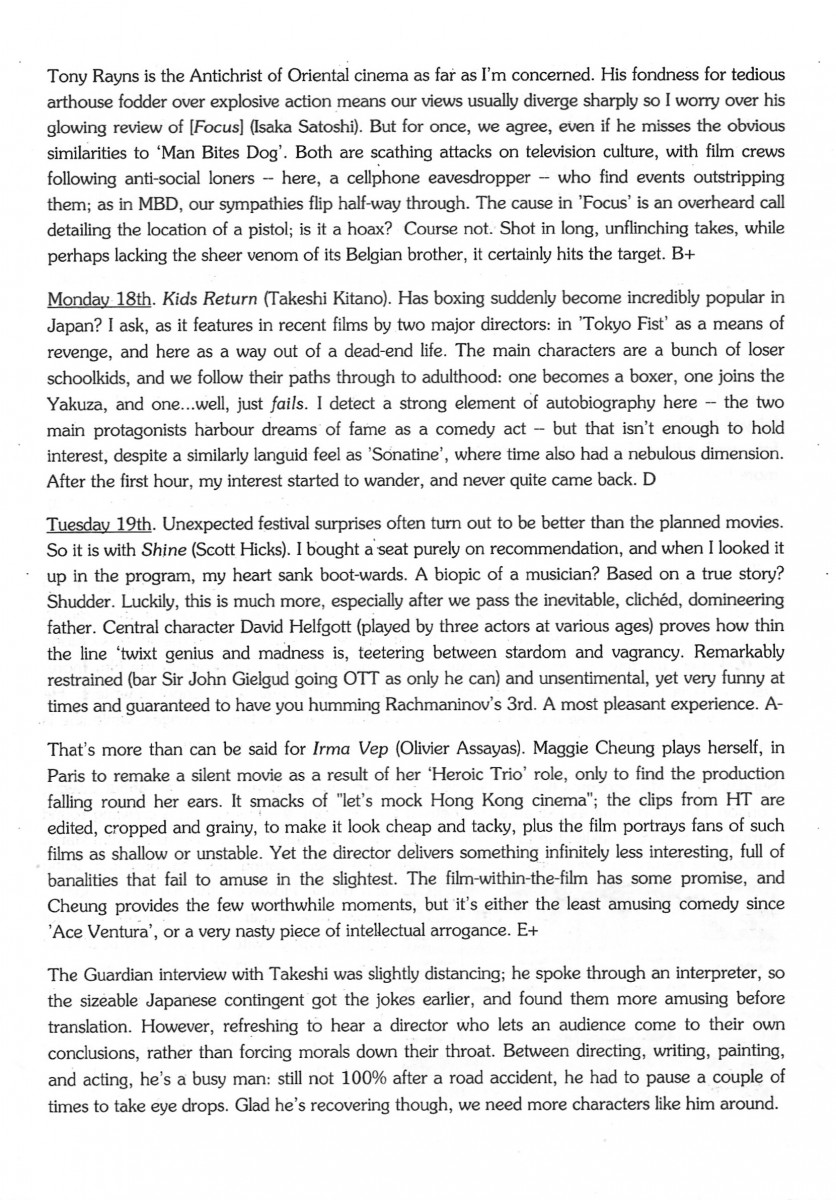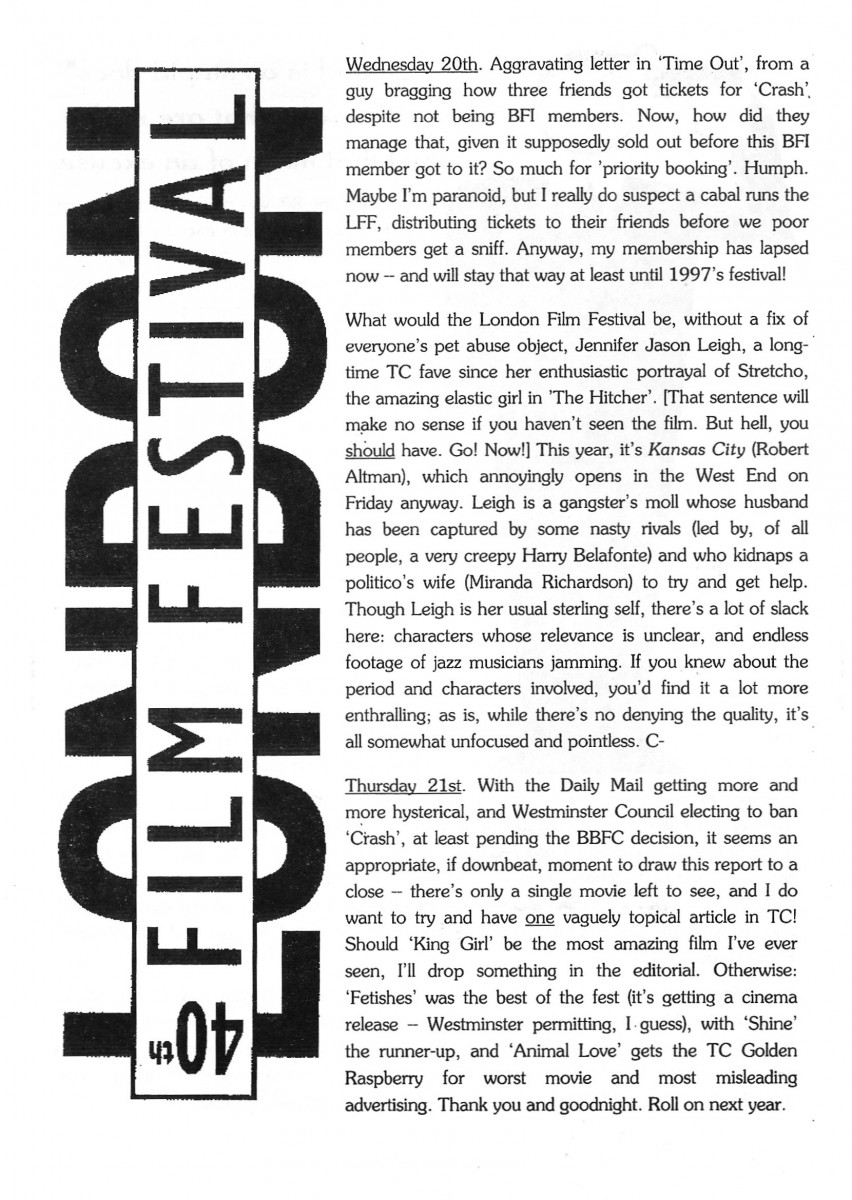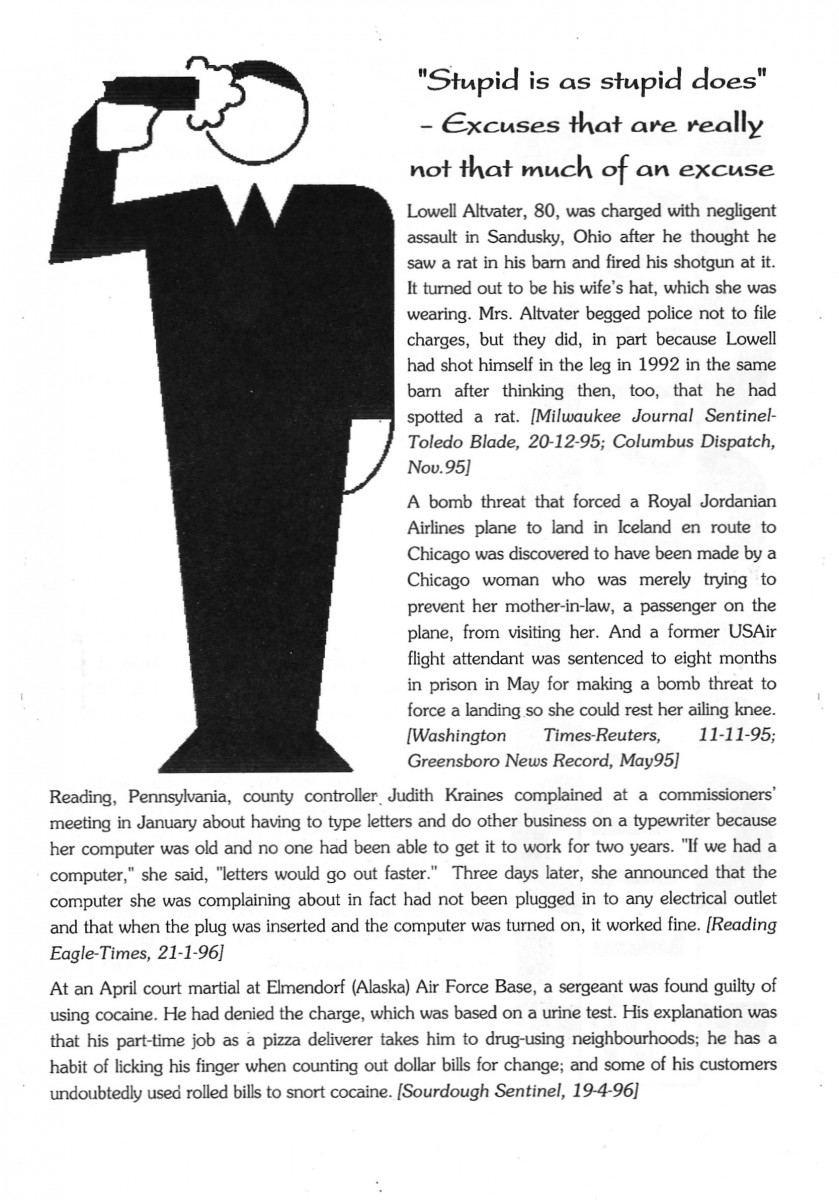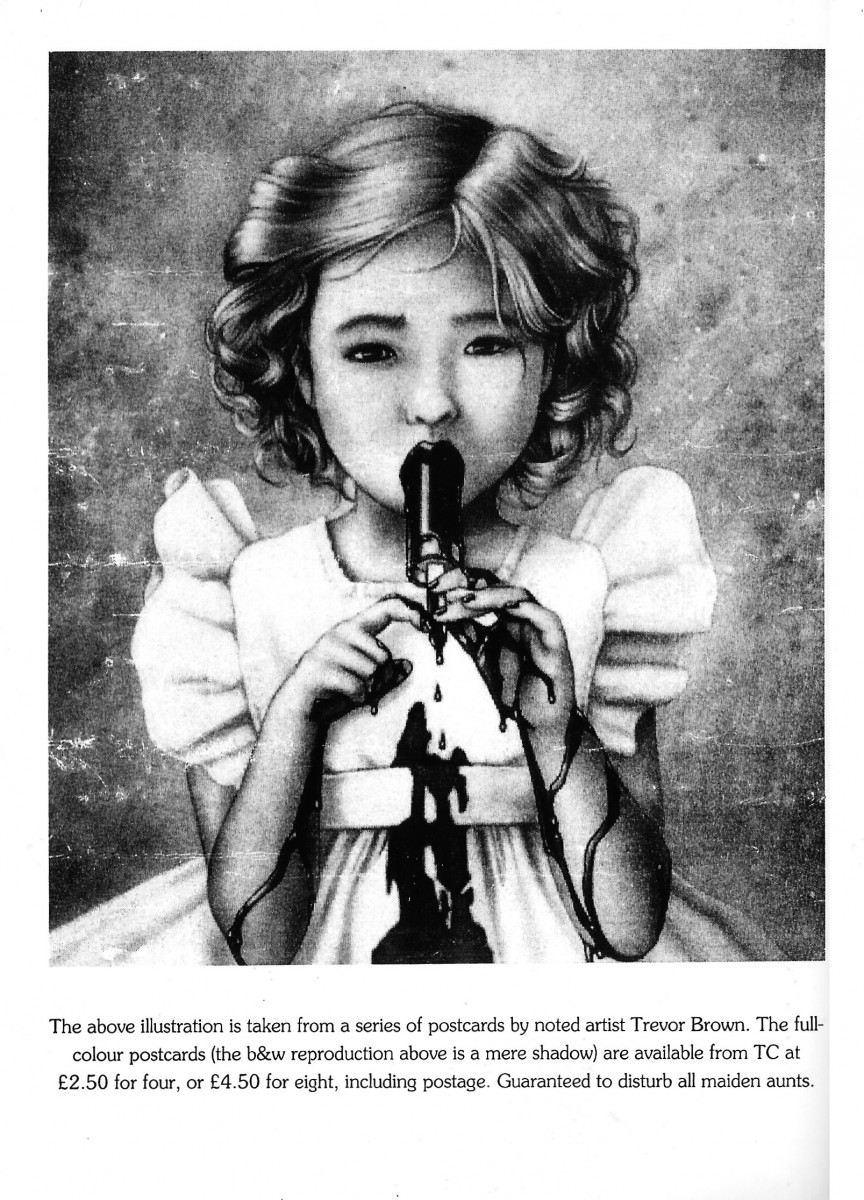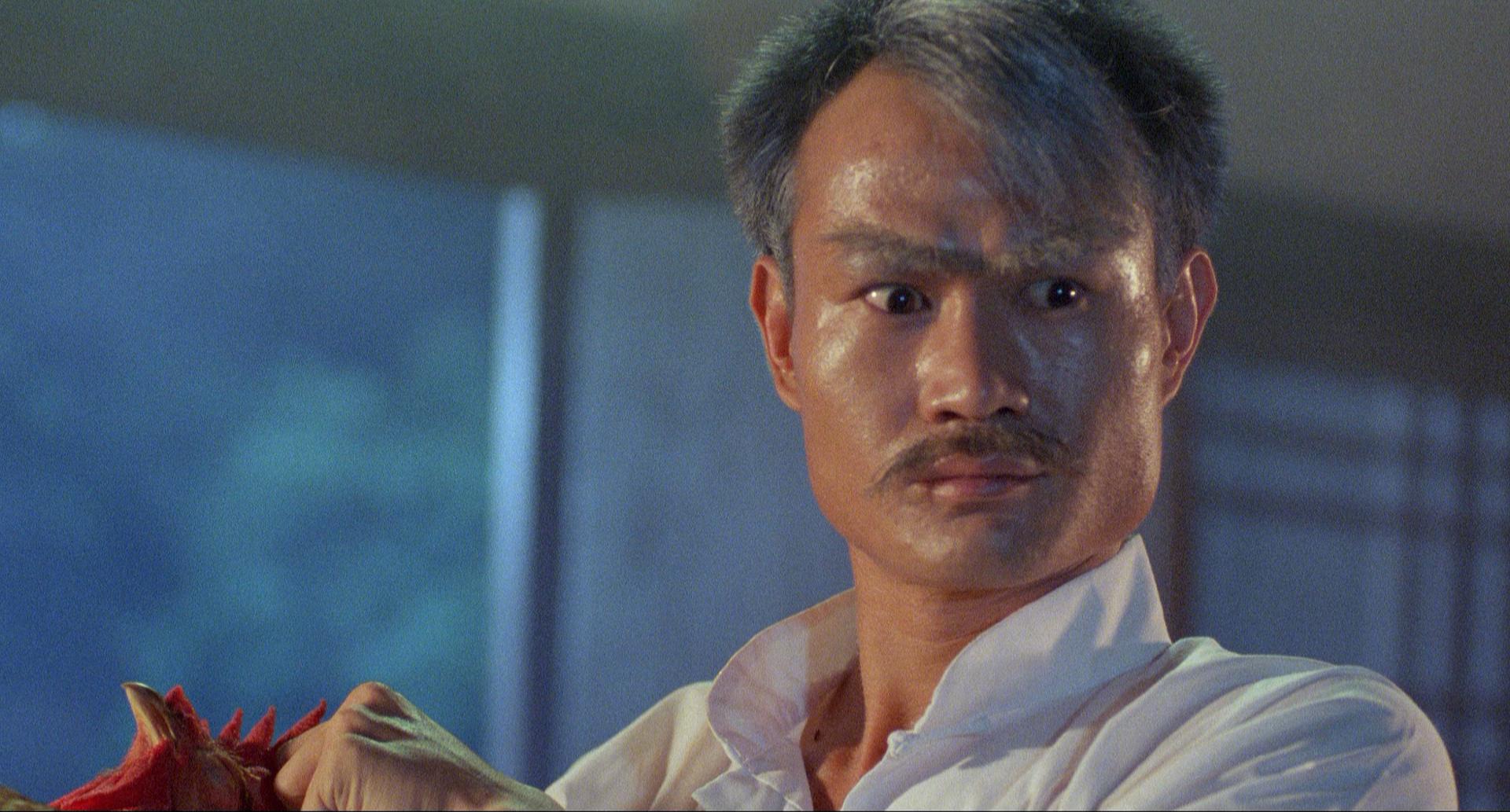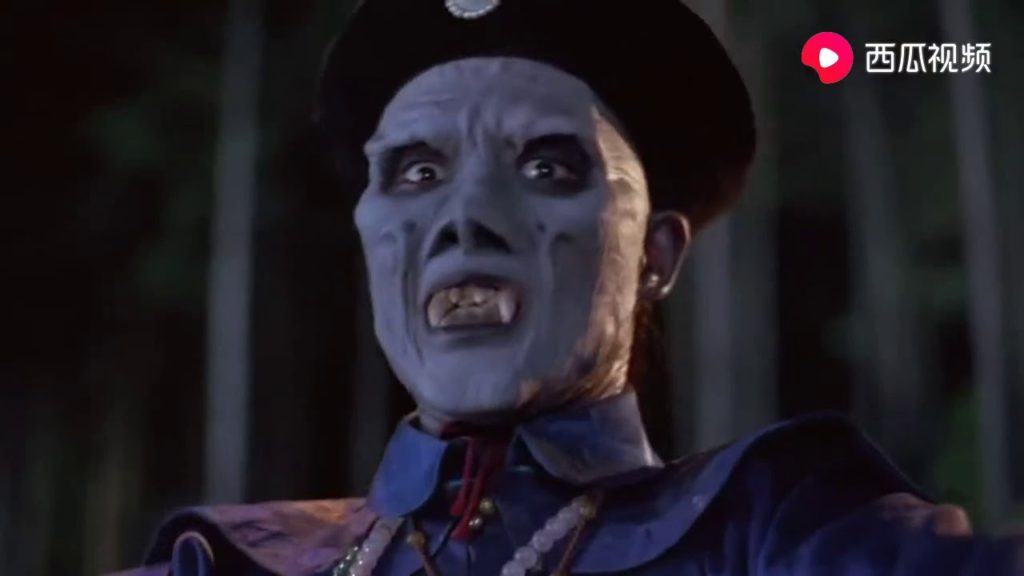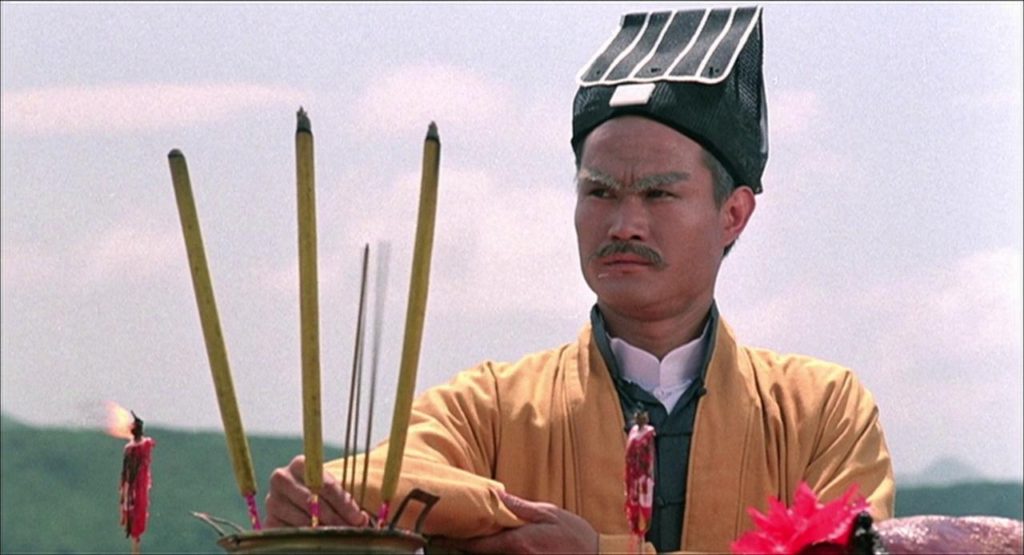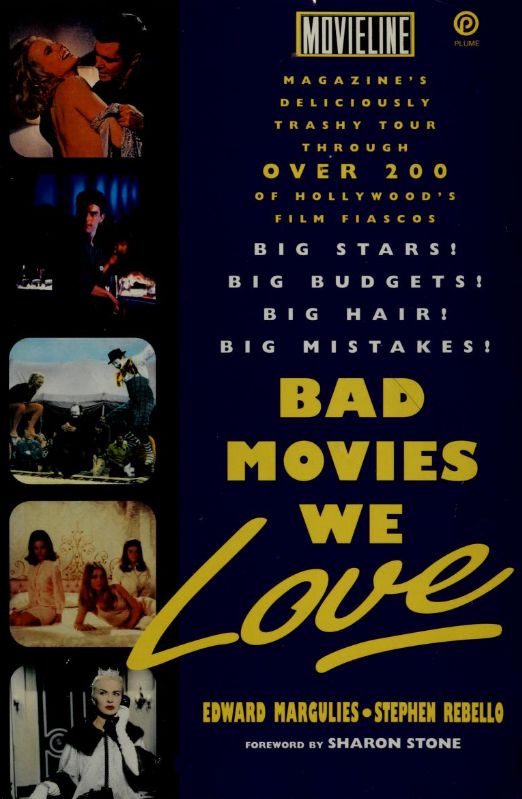High Weirdness by Andy Collins
It’s time once more to trawl through the nineteen (count ’em!) months worth of letters, and find out whether anyone has said anything a) interesting and b) still relevant as we scream towards the end of . My, some of these letters are so old, they appear to have been written on papyrus… But, wait! Next to a scroll from William the Conqueror asking why I haven’t returned my Domesday form, we find that golden treasure chest which can only be a letter from Andy Collins. In fact, here’s two of them! Sorted — and this way, I don’t have to give him a contributor’s copy…
Andy Collins, October 29th, 1995 — Firstly, I must comment on this. Roswell. Bollocks… now into my third week of the Canterbury College Radio, Film and TV course. A major shock to the system. As suspected, the usual clutch of Eisenstein questions, the pricks in the lecture hall – “Ur, yar, ur, that particular piece of footage had amazing mise en scene, and extrapolated the characters from the objective to the immensely subjective.” Fuck off! Guy in question has been dubbed Schumacher (both of equal popularity)… Apparently, he entered the quiz, and took being a wanker from a mere personality trait to a full-time professional vocation. He is littering the campus with enemies. A Christmas lynching might be in the offing. “Analyse that, you bastard!”
On the whole it has been a very positive move… Impossible to get lost, obviously, as there is a huge, great Landmark, which seems to be giving itself standing ovations every time I look at it, gazing down awesomely at everything beneath it… With a nod to the Vatican, Canterbury Cathedral seems to have amassed quite a coinage (perhaps the law of Tithes is still in effect round these parts!). The clergy all drive top range motors, slowly, through the tourists into the Cathedral grounds. Now, if that is not indicative of what it’s all about…
Autumn…winter…spring…summer. Cue pictures of pages being torn off calendars, clouds across the moon in time-lapse, buds bursting into bloom. And then:
Andy Collins, July 2nd, 1996 — Canterbury has gone all wrong. I feel like I am undergoing Caesarean Section, and am being organically removed from this highly precocious, somnambulistic place. I started here with good intentions – as we do with every endeavour – but mentally and spiritually, this self-delusionary bourgeois pretty-city has suffered crucial disfigurement. And I don’t much like looking at it anymore…
Disappearing for a month to Mexico gave me a beautiful taste of the other-world, the special life that there is out of Britain, away from Trainspotting tide and perverse materialism. Mexico was a magic place — certainly not the garden of Eden or a third world spiritual Mecca, but a total shock to the system. They are a bunch of macho bastards and have enough American products to make them even more corrupted. But the society has a proud stance, and a weird innocence, a great sense of community. Mexico is what you make it…you can mould your experiences accordingly – it’s not set – a country still changing.
Memorable moments, apart from actually being there. A bar manager forgetting himself for a moment, and running after us down the street as we had left due to closing time, apologising for not offering us any drugs… Another bar, in Palenque, near the famous ruins. Apart from trying to get antiseptic cream in a vet’s (I somehow missed the huge picture of a dog), this bar was one of the few places worth visiting. Sleaze has never been so cultivated. There were huge iron grilles over the windows. The drinks were housed in cheap shelving, a little compartment for each bottle. Unbelievably tacky decor assailed my eyes — yeah, the mirrors, small coloured bulbs as the sole illumination (the 10W candle bulbs, that is). Somewhere over towards Hades was the deep blue-lit ‘dance floor’. Empty, of course.
Including the Australian guy my brother and I had hooked up with, there were about seven of us at the bar. The bartender, a cross between the underground club manager in ‘Vamp’ and your worst disco bouncer nightmare, was not so much imposing as infuriating. One would expect such a lack of passion for your work from egg-sorters, or Co-op cashiers. But this man put them to shame. I mean, you felt guilty asking him for a drink. And what drinks! I was surprised, somewhat, not to see an optic or measuring cup. Starting out with a tequila, of course, by pointing and merely saying uno, por favor (what else could I say to Marvin the Bartender) — he plonked a tumbler on the bar and freely poured the spirit in. Not gently, or carefully, but slugged in a hearty measure of brain-damage juice. The quarter of a pint stared at me, as did the large, suspicious Mexicans to my left. And the bartender who wanted paying. I was anticipating a phenomenal ticket, a bastard giant bill for this shot which would have knocked out the Jolly Green Giant.
Ten pesos, he said. Ten, I repeated. Si, ten. One pound for the lot.
Needless to say, two hours later (or around that), I had visited most of the compartments behind the bar, and was clinging on to the wooden structure for dear life. Now, I couldn’t even see the bar tender. Who cares if he’s a miserable fucker! I was trying to crack jokes with him in fractured Spanish and drunken English. The posse of dodgy Mexicans? Fuck ’em! I’ll take them all if it comes to it… Alfonso, the resident piss-head also befriended me. Though this geezer was a little worried. He wasn’t quite sure about my nationality. “American?”, he kept saying, and grinning madly through crooked teeth and deranged mental processes.
“No, no, Inglaterra. England!”
“Ahhhhhhhhh! England that in America?”
By this time, the bar entrance was shut. I could barely move or think. I decided to get some soft drink inside me, a bid for survival. “Coke, por favor”. Well, that was that. Julio practically lunged at me, offering a gram for £30, “good sheeeet!”. Alfonso was still trying to get my nationality out of my other arm, the bartender still doing his impression of an Easter island statue…
Well, if anyone wants to make a bid to knock Andy off his position as reigning TC Heavyweight Letter Champion, you know what to do. Sex, drugs and rock ‘n’ roll will enhance your chances of success. As will bribery. Go for it!
